English Compositions

Short Essay on Power of Media [100, 200, 400 Words] With PDF
In today’s lesson, you will learn how you can write short essays on ‘Power of Media.’ There will be three different sets of short essays on the same topic covering different word limits.
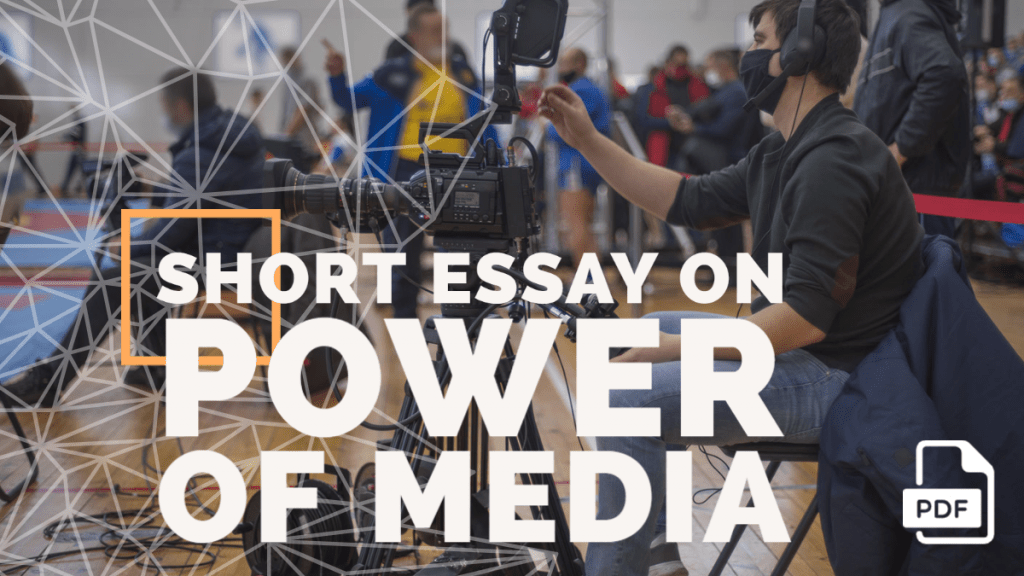
Short Essay on Power of Media in 100 Words
The term ‘’media’’ is derived from the word ‘’medium’’, which refers to the way through which information is transferred from one person to another. Media as the collection of several types of equipment enable the spreading of news and messages far and wide.
Several modes of communication like television, telephone, radio, internet, newspaper, advertisements, allow us to impart knowledge about important issues in our life. Media is extremely powerful in its speed of spreading accurate information. At any specific time, we observe how media personals work at several places and give us the news most required. Any scandal, rumour, facts, everything is noted by the media and explained to us in due course.
Short Essay on Power of Media in 200 Words
Media is the way of mass communication and entertainment. It is the process through which the masses of people are communicated and united under one single piece of information. Media or the several forms of information medium fall under the group of information technology.
All of them act together to deliver error-free news and information so that democracy is not disturbed by fake information. Media includes newspapers, magazines, telephone, television, internet, advertisement, emails, messages, cinemas, and others. Media acts through both audio and visual effects to create the maximum effect.
The biggest power of media lies in its potential to persuade people to take necessary action. When we hear a newsreader dictating the news, then the listeners are swayed by the intonation of the reader. The person speaks in order to claim the truthfulness of the piece of information. In the exact same manner, a newspaper is organized to direct the opinions of the readers in a certain course.
Advertisements are the most powerful ways of media. We are highly influenced by it and inspired to take ready actions that are necessary. At present, the internet is the media that share all news with the greatest speed.
Short Essay on Power of Media in 400 Words
The influence of media in our lives is of immense importance. It not only imparts us news and pieces of information but is the biggest source of entertainment. Cinema and music as parts of media give us pure joy and happiness, which also enables us to entertain ourselves. Yet the majority of the media is concentrated on gathering correct information and delivering it to the country.
Media includes newspapers, radio, T.V., telephone, internet, advertisements, placards and posters, and others. All these are our constant companions that allow us to form our opinions on different issues regarding life, society, and country.
Media is powerful in its mode of persuasion. The biggest capacity of any media equipment is that it can easily manipulate the opinion of people and allow them to form a specific sort of perspective. The best weapon in this regard is the newspaper. The way a newspaper is arranged and the headlines are prepared, makes this persuasion quite easy. The visual and literal aspects of a newspaper are the sole power of media. The same goes for the advertisements as well.
The visual and written content of advertisements equally influences us to buy a product or service. For the newsreaders, their intonation is the power. The way they narrate a news story enables listeners to realize the significance of the news. The diction of a newsreader is important in this regard that helps to grab the attention of the people. Media is the potential way to unite the country under one principle and equal opinion. The issue lies with the efficiency of the journalist.
He risks every danger so as to collect authentic news for the benefit of mankind. The efficiency of the strength of media lies at every stratum of collecting the information and converting it into the news. Be it the print media or the audio method, all require this adept nature to strongly create a safe environment for news channels.
Media is both effective and effective. In this regard, the nature of the internet can be considered. Even in the most difficult circumstances internet becomes the den of evil and fake news. It creates unnecessary commotion among innocent folks and is equally responsible for disrupting the peace and stability of the nation.
The capacity to create public opinion is used for dangerous purposes and the power of media is wasted for the benefit of evil people. It is thus the knowledge of the people to not accept all news blindly. Media is effective in spreading the news within the shortest period. However, careful utilization of this power is expected.
Hopefully, after going through this session, you have a holistic idea about writing short essays on the topic ‘Power of Media.’ I have written these essays in very simple words for a better understanding of all kinds of students. Kindly comment down your doubts, if you still have any.
Keep browsing our website to read more such short essays on various important topics. And don’t forget to join us on Telegram to get all the latest updates. Thank you.
Management Notes

Power of Media – Major Points Explained in Detail | Media and Society
Power of media.
Table of Contents
Media power refers to the enormous influence and impact that print media, broadcast media, and digital media have in shaping public opinion, disseminating information, and driving social and cultural changes. A powerful tool for communication, education, entertainment, and mobilization, the media play a significant role in modern society.
By reaching vast audiences, shaping public discourse, and influencing individual and collective behaviors, it can influence the lives of individuals and communities.
A media outlet’s power lies in its ability to gather, create, and distribute information, frame narratives, and shape public opinion. In order to promote media literacy and responsible consumption of media content, we must understand the power of media.
The power of media can be explained in the following way:

Information Dissemination:
Media acts as a primary source of information for individuals, providing news, current affairs, and factual information. Media’s power comes from its ability to gather, verify, and disseminate information to a wide audience. Keeping people informed about local, national, and global events is the responsibility of journalists and news organizations.
People are able to make informed decisions, understand complex issues, and participate in democratic processes when the media provides timely and relevant news coverage.
Agenda Setting:
The media can set the agenda and determine the issues that need to be addressed and discussed. Public opinion and conversations are shaped and directed by media outlets’ coverage of specific topics, editorials, and investigative reporting.
In order to set the agenda, the media must frame issues, shape narratives, and shape public perceptions. In bringing attention to neglected or marginalized topics, media can shape public opinion and bring about societal change.
Influence on Public Opinions and Attitudes:
The media has a profound impact on public opinion and attitudes, influencing how individuals perceive their surroundings. News stories, documentaries, and opinion pieces can influence public sentiment and shape attitudes regarding social, political, and cultural issues through media outlets.
In order to influence public opinion, media must be able to present information, frame stories, and evoke emotions. Public discourse and societal norms may be influenced by media, which contributes to the formation of collective beliefs, values, and behaviors.
Educational Tool:
Media serves as an educational tool, providing a platform for knowledge sharing and learning. Educational programs, documentaries, and online platforms facilitate access to information and promote lifelong learning. The media can spread education, foster critical thinking, and contribute to the dissemination of knowledge from a variety of fields, including science, history, culture, and the arts.
It is the ability of media to engage audiences through visual and interactive formats that makes complex concepts more accessible to learners and enhances their learning experience that makes it a powerful educational tool.
Entertainment and Cultural Influence:
Media plays a significant role in shaping cultural values and trends as well as serving as a powerful source of entertainment. Popular culture is shaped by movies, television shows, music, and digital content, which influence societal norms, fashion, language, and lifestyle choices.
It is in the ability of media to capture the imagination, evoke emotions, and create shared experiences that media has the power to entertain and influence cultures worldwide. In addition to reflecting and reinforcing cultural values, media introduces new ideas, challenges social conventions, and provokes social change.
Mobilization and Activism:
The media is an essential part of social mobilization and activism. It provides a platform for people and communities to advocate for change and mobilize collective action as well as raise awareness of social issues. Protest organizers, activists, and communities have become increasingly reliant on social media platforms to organize, spread, and mobilize.
By amplifying voices, connecting like-minded individuals, and generating public support for social causes, media can play a significant role in social mobilization and activism. Coverage of social movements can highlight injustice, increase awareness, and inspire people to act.
Advertising and Consumer Behavior:
The media, especially advertising, play an important role in influencing consumer behavior. Through advertisement, media influences consumer behavior, purchase decisions, and brand perception. Advertising is shaped by the media’s ability to shape consumer desires, promote products and services, and stimulate economic activity.
The use of media platforms allows companies to reach potential customers and influence their buying decisions through persuasive messaging and creative storytelling.
Influence on Democracy:
The media plays a crucial role in democratic societies, serving as a check on the government and other powerful institutions. Transparency, accountability, and citizen participation are promoted by the media, which inform the public, scrutinize policies, and encourage political debate.
In democracy, media facilitates the free flow of information, encourages diverse viewpoints, and holds those in power accountable for their actions. In order to facilitate free exchange of ideas and opinions, media freedom and independence are essential for a functioning democracy.
The media has significant power and influence, but it is also responsible for maintaining ethical standards, accuracy, and fairness. Despite media power, there are challenges associated with it, including media bias, sensationalism, misinformation, and manipulation.
In order to navigate the vast media landscape, evaluate sources, and distinguish between reliable information and misinformation, individuals must be literate in media literacy and critical thinking. The ability to understand the power of media empowers individuals to be informed consumers and active participants in shaping society.
- Influence of Media on Society – Mass Media Influence | Media and Society
- Recent Posts
- Frito Lay SWOT Analysis – Strengths, Weaknesses, Opportunities & Threats | SWOT Analysis - January 11, 2024
- Fox News SWOT Analysis – Strengths, Weaknesses, Opportunities & Threats | SWOT Analysis - January 5, 2024
- Freshly SWOT Analysis – Strengths, Weaknesses, Opportunities & Threats | SWOT Analysis - January 4, 2024
Share this:
Leave a comment cancel reply.
Notify me of follow-up comments by email.
Notify me of new posts by email.
- Search Menu
- Sign in through your institution
- Advance Articles
- Author Guidelines
- Submission Site
- Open Access
- Self-Archiving Policy
- Why Submit?
- About Communication, Culture and Critique
- About International Communication Association
- Editorial Board
- Advertising & Corporate Services
- Journals Career Network
- Journals on Oxford Academic
- Books on Oxford Academic
Article Contents
A definition of media power, contradiction.
- < Previous
Paradigms of Media Power
- Article contents
- Figures & tables
- Supplementary Data
Des Freedman, Paradigms of Media Power, Communication, Culture and Critique , Volume 8, Issue 2, 1 June 2015, Pages 273–289, https://doi.org/10.1111/cccr.12081
- Permissions Icon Permissions
Media power is a crucial, although often taken-for-granted concept. Does it express the economic impact of the industry, the political influence of particular “media moguls,” or the media's capacity to modify attitudes and beliefs? Does it refer to the ability of media to provide state or corporate actors with a valuable tool to assert their own dominance or to the diffusion of symbolic resources? Are we to believe that the media are increasingly the locus of power or that they constitute the space where power is decided? In order to address this dilemma, this article identifies 4 paradigms—consensus, chaos, control, and contradiction—that best express established ways of conceptualizing the flows and relationships related to media power.
There is an emerging, and healthy, public debate about the definition and implications of media power. From Mexico, where young people have taken to the streets to protest at the partisan coverage of the two main television networks, to the United Kingdom, where the Leveson Inquiry has daily revealed the intimate details of collusive relationships between top politicians, media executives, and police, the behavior of media corporations and executives has come under increasing scrutiny. In particular, the issue of concentrated media power—the grip of large media businesses over public discourse—is starting to preoccupy not just politicians, civil servants, and activists, but ordinary citizens concerned about the ability of communication conglomerates to stifle and distort wider democratic processes. Media power, as exercised by News Corp, Globo, Disney, or Google, is seen to be disturbing precisely because it hands definitional, analytical, and interpretive authority to unelected organizations and undermines the ability of citizens freely to acquire and exchange the material necessary to make informed decisions about public life. The media's political economy, in other words, gives them their privileged position in the world ( McChesney, 2000 ; Mosco, 2009 ).
But what sort of power does this refer to, particularly in the context of the classic tension between theories of power that stress domination and subordination and those that emphasize power in terms of the ability to structure action and outcomes (see Scott, 2001 )? While accepting that the power of the media—institutions, channels, texts, and practices that rely above all on symbolic interactions ( Thompson, 1995 )—needs to be understood both in its productive and legitimating roles, this article adopts Manuel Castells's definition of power as referring to “the relational capacity that enables a social actor to influence asymmetrically the decisions of other social actor(s) in ways that favor the empowered actor's will, interests and values” ( Castells, 2009 , p. 10). It further draws on Joseph Turow's argument that power involves “the use of resources by one organization to gain compliance by another organization” ( Turow, 1992 , p. 24) and his emphasis on the interconnections between the “power roles” embedded within the communications process and those of society as a whole. This means that the economic, political, technological, and cultural dimensions of media power are not insulated from but reinforce each other in their application to specific cases.
Media power refers, therefore, to the relationships—between actors, institutional structures, and contexts—that organize the allocation of the symbolic resources necessary to structure our knowledge about, and by extension our capacity to intervene in, the world around us. The crucial point here is that these relationships are situated in an environment in which access to media power—as with access to all kinds of resources at institutional and societal levels, including health, education, and employment—is fundamentally unequal and reflects structural disparities of power in wider society. Media power is both a consequence of and, increasingly, a precondition for continuing, and stratified, processes of social reproduction. It is not traceable to a single source (despite the undoubted impact of a Murdoch or a Berlusconi); it does not “belong” to Hollywood, Silicon Valley, Madison Avenue, or what used to be known as Fleet Street (although it is most certainly mobilized in all those contexts); it is not articulated solely at the textual level and neither does it emerge spontaneously out of the communicative interactions of ordinary people (even though many people may claim to be “empowered” by their use of media technologies). It is neither about gently persuading nor forcibly coercing individuals to do things they would otherwise choose not to do but about the material coordination of flows of information, communication, and culture such that persuasion and coercion, as well as expression and interpretation, are most effectively able to take place.
In recognition of this relational conception of media power, I want to identify four paradigms—of consensus, chaos, control, and contradiction—within which these different dimensions of media power coexist but where each of which theorizes the play of media power in quite different ways. These are perspectives, in other words, that map not simply how media power “works” but how one might conceive of it as a social process in its own right. As with any conceptual model, it is open to challenge—there may be additional paradigms, theorists may belong in more than one category, they may have been put into the wrong category, or perhaps there are simply too many connections between each of the categories to make them analytically meaningful—but I believe nevertheless that it will help clarify what is at stake in theorizing media power and therefore to develop a sufficiently robust analytical model to both understand and democratize the relationships to which it refers. The model is not intended to be a simple literature review but a more ambitious reframing of how we might approach the subjects and objects of media power.
Paradigms are useful ways of organizing together discrete elements into theoretical frameworks in order to analyze social phenomena; they are not naturally occurring categories but purposeful ways of ordering the world so as to better make sense of it ( Sparks, 2007 ). As such, they map quite closely onto pre-existing categories of media scholarship where the consensus paradigm may be considered to relate to liberal pluralist communication studies, the chaos paradigm to fan studies and cultural studies, the control paradigm to media political economy, and the contradiction paradigm to critical media industry studies and participatory perspectives. However, specific “disciplinary” approaches to media analysis should not be seen as homogeneous nor reduced to a particular orientation, not least in their attitude toward power. The four paradigms discussed in this article, while also not free of internal distinctions and ambiguities, nevertheless provide a more focused approach to questions of power and allow us better to examine the relationships between the economic, political, technological, and cultural forces that shape the dynamics of media power as they operate, albeit in quite specific ways, across different genres and platforms.
The consensus paradigm relates to a longstanding and highly influential notion of power that, in advanced liberal democracies, power is widely distributed, pluralistically organized, and contributes to a relatively stable social arrangement. Responding to criticism that American society in the mid-20th century was dominated by a military, political, and financial elite ( Mills, 1959 [1956]), pluralists argued that U.S. politics was instead a competitive arena in which different interests vied for power and influence but in which there was no single dominant voice, no undue concentration of power. In Robert Dahl's study of the political system of New Haven, Connecticut, Who Governs? , politics is dominated by coalitions, by rival groups of actors and interests, none of whom could be said to exercise complete control. According to Dahl (2005/1961) , “there was no clear center of dominant influence in the [political] order. No single group of unified leaders possessed enough influence to impose a solution” (p. 198), certainly not the economic or social “notables” who had only a limited and shifting impact on New Haven politics. Pluralist politics, argues Dahl (2005/1961) , is notable for its “dispersion of political resources,” the “disappearance of elite rule” (pp. 85–86), and the emergence of polyarchy, a benign mode of democratic politics.
Yet, despite the multiplicity of beliefs and the variety of channels through which to mobilize these beliefs, a degree of mutual understanding and harmony was still evident to Dahl inside American society. This was not imposed by the “notables” nor was it spontaneously present in the minds of citizens; instead, members of the political class and the bulk of citizens are engaged in an ongoing dialogue that “generates enough agreement on rules and norms so as to permit the system to operate” (2005/1961, p. 316). The consensus reached is not permanent and nor is it particularly stable but the process of consensus-building is nevertheless vital to the functioning of American democracy. Consensus, concludes Dahl (2005/1961 , p. 316), “is not at all a static and unchanging attribute of citizens. It is a variable element in a complex and more or less continuous process.”
This conception of consensus has long underpinned pluralist arguments concerning the integrative function of the free press as well as the exercise of sovereign power. Dahl acknowledges in Who Governs? the rather modest role of newspapers in fostering pluralism but perhaps the most famous expression of consensus in relation to media power are the rationales for media performance that are proposed in Four Theories of the Press ( Siebert, Peterson, & Schramm, 1963 /1956) to describe the American and British media systems. This remains the classic exposition of liberal advocacy of the “freedom of the press” primarily composed of a “libertarian” approach where newspapers are seen as “a partner in the search for truth” but where “[t]ruth is no longer conceived as the property of power” (1963/1956, p. 3). The libertarian model was modified in the 20th century to deal with the growing permeation of society by electronic media and a new “social responsibility” model emerged reflecting the view “that the power and near monopoly position of the media impose on them an obligation to be socially responsible” (1963/1956, p. 5). Both rationales, however, were predicated on an unyielding faith in market forces to nurture media systems that informed and entertained audiences, were based on professional values of independence and impartiality, and provided a necessary check on government power. A market-driven media is, from this perspective, one of the guarantors of a pluralist consensus.
This approach resonates in more recent accounts of the democratic role of the media. For example, in Dayan and Katz's (1992) notion of integrative “media events”—ceremonial coverage of “unique” public occasions such as state funerals, major sporting events, scandals, and political earthquakes—audiences are enthralled and transformed by the live coverage of these unprecedented events. “These broadcasts integrate societies in a collective heartbeat and evoke a renewal of loyalty to the society and its legitimate authority” (1992, p. 9). We can even identify the consensual dimension of media power in some nonmarket structures, for example, in accounts of public service broadcasting as an institution that serves to produce cohesive viewing and listening publics with distinctive identities but common interests. For Paddy Scannell (1989) , organizations such as the BBC “brought into being a culture in common to whole populations and a shared life of a quite new kind” (p. 138) and they remain a central part of British democratic life. Indeed, he attributes unprecedented generative power to the media: “What was public life before broadcasting?” he wonders (1989, p. 135).
A consensual media system also requires adequate competition between its different outlets and thus the free interchange of all players in an open market. Media economist Ben Compaine (2001) describes the patterns of ownership in the largely commercial U.S. media system as “extremely democratic” and notes that the media tend “to be run not to promote an ideology but to seek profit” (p. 4). Private ownership is therefore viewed as a steward of plurality with regulation, mostly confined to the broadcast sector, needed only as a last resort in order to deal with specific blockages (e.g., monopolies or oligopolies) and to redistribute media power across a wider number of players. Indeed, despite recent moves to liberalize media systems and to roll back curbs on ownership concentration ( Freedman, 2008a ), there remain restrictions on media ownership and forms of public media in almost all countries. This “mixed economy” approach reflects the enduring appeal of calls for “choice” of outlets and “variety” of media content in contemporary democracies, facilitated by a free market but underwritten by the use of limited state power.
In sum, this consensus paradigm relates to a liberal functionalist perspective on media, described by James Curran as one where the media's role is “to assist the collective self-realization, co-ordination, democratic management, social integration and adaptation of society” ( Curran, 2002 , p. 136). In the light of recent exposures of the illegal and unethical behavior of the press, desperate attempts to boost ratings at all costs, and the hypercommercialization and globalization of large parts of the media, this approach may appear better suited to an earlier period of media history. However, even with the emergence of digital technologies and “empowered” consumers, it is stubbornly resistant to change and remains the default language of policymakers wishing to nurture “open” and “competitive” media markets. Indeed, it is precisely this approach—in which economic liberalism is seen to promote individual liberty and democratic pluralism—that underpins the arguments of UK news proprietors seeking to maintain self-regulation in the light of the phone hacking crisis. For example, in one of its many attacks on calls for a new, tougher regulatory regime to promote ethical journalism, Britain's top-selling newspaper, the Sun , opined that: “Ours may be a rough old trade, sometimes scurrilous and always noisy. But without its freedom to dig dirt, embarrass the great and good, and tell unpalatable truths—and, yes, occasionally get it wrong—British democracy risks grievous damage” ( Sun , 2012 ). Despite warnings from theorists such as Onora O'Neill (2004 , p. 8) that “[a]ccording unrestricted freedom of expression not only to individuals but also to powerful institutions, the media among them, is not necessary for but damaging to democracy,” this form of media power continues to be invoked as a vital requirement for free speech and social cohesion.
Recent structural and geopolitical shifts have forced an updating of some of the foundational elements of pluralist accounts of power. While globalization and digitization have contributed to the erosion of fixed spatial boundaries and the rise of a disembedded and decentralized form of capitalism built on abundance and not scarcity, a range of events—for example, the collapse of Communism, the spread of democratization, the growth of public relations, and the weakening of deference toward elites—have precipitated a new and highly volatile paradigm: cultural chaos ( McNair, 2006 ).
The chaos paradigm is based not on the role of singular factors such as class, hierarchy, and wealth in sustaining unequal social relations, but on ideological diffusion and structural uncertainty. This reflects the dispersed and “fluid” properties of power in a digital age. According to McNair (2006 , p. 200), power
ebbs and flows between locations and centres, spreading amongst societies along the channels and pathways provided by communication media. Power pools . It evaporates, dilutes and drains away as environmental conditions change. Communication in the medium through which power resources are disseminated, and leaky channels of communication therefore mean less secure power centres.
Traditional systems of gatekeeping and ideological control have, therefore, largely broken down allowing for more interrogative forms of journalism and a flourishing of perspectives, including even the promotion of radical voices—such as Michael Moore and Naomi Klein—that would previously have been kept to the margins.
The paradigm finds its perfect expression in the collapse of an “old media” logic in the face of the digital media revolution, a situation in which business models, modes of production, and consumption patterns that were relatively stable for many years have now started to break down. We are shifting from being a population of established newspaper readers and viewers of scheduled television programs to an amorphous group of promiscuous consumers that takes its news from diverse outlets, watches television at times (and on platforms) that suit its convenience and not those of the networks, and generally cannot be relied upon to demonstrate brand loyalty for very long. Bob Garfield describes this as “The Chaos Scenario” ( Garfield, 2009 ) and argues that we are witnessing a seismic shift in media power relationships.
The first element of The Chaos Scenario . . . creates an inexorable death spiral, in which the fragmentation of audience and DVR ad skipping lead to an exodus of advertisers, leading in turn to an exodus of capital, leading to a decline in the quality of content, leading to further audience defection, leading to further advertiser defection and so on to oblivion. (2009, p. 38)
Although, judging by the revival of the advertising industry, an overall increase in television viewing and, perhaps most surprisingly, a recent increase in network news audiences in the United States ( Friedman, 2012 ), the death of “old media” is somewhat premature, the enormous growth of social media has clearly contributed to a tremendously uncertain, but no less refreshing, atmosphere of confusion in which power, it is argued, operates in far less hierarchical ways—proof, for its advocates, of the ability of forms of technological power to mediate, unsettle, or reconstititute social relationships.
The absence of governmental regulation of Internet content has unquestionably produced a kind of chaos, but as one of the plaintiffs' experts put it with such resonance at the hearing: “What achieved success was the very chaos that the Internet is. The strength of the Internet is that chaos.” ( ACLU vs. Reno, 1997 )
The Internet has since grown from an anarchic toddler to a snarling teenager with the ability still to unsettle everything around it. Larry Downes claims that disruptive technologies such as the Internet, based on very low transaction costs and virtually infinite capacity, undermine established business practices and that, “[c]onfronted with the weird economics of information, the core principles of public law, private law, and information law are being turned upside down” ( Downes, 2009 , p. 269).
Not everything is to be welcomed in this brave new world but, generally speaking, theories of chaos are seen to express more adequately the fractured and decentralized forms of media power facilitated by digital technologies. Jeff Jarvis (2009) describes this as a “power shift” (p. 11) in which “the shift from mass [to niche] is really a shift of power from top to bottom, center to edge, them to us” (p. 67). Wired editor Chris Anderson (2009) makes a similar point about what he sees as an “inversion of power” (p. 99) from traditional manufacturers and advertisers who are rapidly losing control to newly empowered audiences: “The collective now controls the message” (p. 99). According to Anderson, we are seeing the transformation of power from label to band, publisher to author, price to free, “watercooler” moments to dispersed sharing, mass to niche and rigid to elastic while, for Tapscott and Williams (2008) in their description of “Wikinomics,” digital “weapons of mass collaboration” are “ushering us toward a world where knowledge, power, and productive capability will be more dispersed than at any time in our history” (p. 12).
This corresponds to McNair's conception of a far more fluid social and ideological environment in which traditional mechanisms for ensuring compliance have broken down under the impact of both communicative abundance and an increasing unwillingness to “tow the line.” This has significant political consequences as, for Henry Jenkins (2006) , the process of convergence makes it much harder for elites to impose their authority. He contrasts “old media's” “power to marginalize” with today's bottom-up “power to negate” (2006, p. 278) that is facilitated by new peer-to-peer networks, characterized by “presumption,” and underpinned by a collapse of deference. “Democracy has always been a messy business” he argues, but today's “politics of parody,” in which citizens use digital tools in creative and autonomous ways to express their cynicism toward “official politics,” is a perfectly logical response to the changing dynamics of authority (2006, p. 293). The most dramatic illustration of this view of dispersed media power—and of the interconnections between political, economic, and technological contexts—is to be found in claims made about the “revolutionary” role of social media in the Arab Spring of 2011, the emergence of “Twitter Revolutions” and the rise of networked protest that culminated in the Occupy movement ( Mason, 2012 ). Indeed, Manuel Castells (2009) has famously described this form of protest as “media counterpower.”
In his view of power as a highly volatile and diffuse phenomenon, McNair appears to oscillate between a Foucauldian approach, where power is seen as productive and all-pervasive, and a “new economy” version of earlier pluralist accounts where, for example, Cater (1965) writes about the “mobile and transitory” nature of power in highly segmented decision-making situations (p. 4) just as Freeman (1965, p. 25) highlights the “complex and pluralistic committee matrix within which so many decisions are reached in a decentralized fashion.” Moreover, McNair admits that the chaos paradigm is not immune from the influence of powerful gatekeepers in the sense that key actors remain determined to stamp their authority on the digital world. The problem is that, given digital abundance and ideological fragmentation, they will find it virtually impossible to secure this objective: “The chaos paradigm does not abolish the desire for control; it focuses on the shrinking media space available for securing it ideologically” ( McNair, 2006 , p. 4).
This is an interesting point, although just how difficult it is to secure some semblance of order online is up for debate. As the web grows into adulthood, the desire to control it is increasingly evident and the search for order increasingly important. In a situation in which the Internet is expected to contribute some $4.2 trillion to the GDP of the world's 20 biggest economies ( Boston Consulting, 2012 ), it is not surprising that we see attempts to regulate the chaos and to classify the confusion: Google categorizes the web, Wikipedia orders knowledge, and Facebook organizes friendships. This is partly a matter of the cyclical nature of technological evolution ( Spar, 2001 ; Wu, 2011 ), where technologies pass through different stages of development from anarchy and uncertainty through consolidation to the reestablishment of rules and the reallocation of property rights. It is also, however, evidence of the profoundly contradictory nature of technological innovation under capitalism—that it benefits the public so long as it rewards those who own or control it—and is thus likely not to stay permanently in a state of chaos.
premised on economic determinacy, whereby ruling elites are presumed to be able to extend their control of economic resources to control of the cultural apparatuses of media, including the means of propaganda and public relations, leading to planned and predictable outcomes such as pro-elite media bias, dominant ideology, even “brainwashing.”
While this simplifies and caricatures many of the arguments of “control theorists,” it does at least point to some of the mechanisms and impacts that are relevant to this conception of media power: the capturing of media agendas, the commodification of innovation, the deployment of propagandistic techniques, and the circulation of partisan media content aimed at securing compliance with existing social relations. Furthermore, McNair's emphasis on the paradigm is certainly justified considering the influence that it has long exerted over critical academics and audiences and its status as a comprehensive account of the media's failure to perform the task attributed to them by pluralists: to hold power to account.
However, it vastly exaggerates the homogeneity of those who are said to operate within the paradigm and glosses over important distinctions in a field characterized by a wide range of different perspectives. There are instead many different varieties of what McNair suggests is a fairly uniform approach to media influence on the part of these critical theorists. The “hardest” edge of the paradigm is best expressed by the propaganda model as developed by Edward Herman and Noam Chomsky (1988) in Manufacturing Consent . For them, the mainstream news media are a crucial tool for legitimizing the ideas of the most powerful social actors and for securing consent for their actions: They are the ideological lynchpins of the dominant class and thus a crucial constituent of state power. Through a combination of capitalist property relations and an orientation on profit, the existence of advertising as a key source of capital, the domination of elite sources, sustained attacks on any material that challenges these sources and elite agendas, and the construction of an “enemy” (whether Communism or Islamism) around which populations (and media agendas) can unite, the mainstream media environment is structured in such a way as to control dissent and steer public action toward the interests of ruling elites. Herman and Chomsky (1988) provide detailed empirical analysis of, for example, news media coverage of U.S. interventions in Central America and South-East Asia to make a convincing case that the “societal purpose of the media is to inculcate and defend the economic, social, and political agenda of privileged groups that dominate the domestic society and the state” (p. 298).
David Edwards and David Cromwell of Media Lens, an online group dedicated to correcting the distortions of corporate news, adopt the propaganda model in their rebuttal, primarily, of “liberal” news outlets (such as the Guardian and the BBC) that, they argue, provide effective cover for what is, overwhelmingly, a partisan and conservative set of interests. Interestingly, the problem lies not simply with a corporate media system, described by Edwards and Cromwell (2006) as constituting “a propaganda system for elite interests” (p. 2), but with the individualism and complicity of citizens who refuse to withdraw their support for instruments of class rule that are instead disguised as professional journalistic values. “Control is maintained,” they insist (p. 187), “not by violence, but by deception, self-deception, and by a mass willingness to subordinate our own thoughts and feelings to notions of ‘professionalism’ and ‘objectivity.’” The media, according to this perspective, are seamlessly integrated into existing structures of power with the result that “media performance overwhelmingly promotes the views and interests of established power” (p. 178).
It can be argued that the propaganda model constitutes the most hard-hitting section of a broader theoretical movement at the heart of the control paradigm—media political economy—that assesses the structuring relationships between economic organization, political contexts, institutional structures, textual possibilities, and consumption patterns across media genres ( Murdock & Golding, 2005 ). For Vincent Mosco, political economy actually “asks us to concentrate on a specific set of social relations organized around power or the ability to control other people, processes and things, even in the face of resistance” ( Mosco, 2009 , p. 24). This is a highly productive line of inquiry that attempts to knit together what are often seen as disparate elements of the social world through, above all, privileging the material relations of power that shape the possibilities and contours of media at any one time ( Curran, 2002 ; Garnham, 1990 ; Golding & Murdock, 2000 ; McChesney, 2000 ; H. Schiller, 1989 ; D. Schiller, 2007 ; Smythe, 1981 ). It is based on the notion, paraphrasing Marx somewhat, that forms of social consciousness correspond to the sum total of capitalist relations of production and have led to illuminating critiques of vast areas of media output (see Wasko, Murdock, & Sousa, 2011 , for a comprehensive selection).
Of course there are many other approaches within the control paradigm that refute any notion of a uniform, top-down, smooth exercise of power but that does not mean that they escape from its overall logic. For James Carey (1992) , power refers to the ability to hegemonize definitions and allocations not of economic phenomena but of reality that he describes as a “scarce resource” (p. 87): “Once the blank canvas of the world is portrayed and featured, it is also pre-empted and restricted” (p. 87). Pierre Bourdieu (1991) conceives of symbolic power in terms of its ability to construct reality and endow it with almost magical qualities: the “power of constituting the given through utterances, of making people see and believe, of confirming or transforming the vision of the world and, thereby, action on the world and thus the world itself” (p. 170). Even more significantly, Bourdieu sees symbolic power as a highly efficient means of naturalizing certain preferred interpretations of the world and of legitimizing classifications based on those with most access to that power.
Symbols are the instruments par excellence of “social integration”: as instruments of knowledge and communication . . . they make it possible for there to be a consensus on the meaning of the social world, a consensus which contributes fundamentally to the reproduction of the social order. (1991, p. 166)
This is not the comfortable, democratic consensus discussed by Dahl and his fellow pluralists nor the rather more frazzled and energetic expressions celebrated by chaos theorists but a distilled version of class interests. Whether this process works in relation to the media by including or marginalizing specific perspectives, shaping and framing social narratives, influencing what narratives are told in the first place, or privileging certain individuals with greater symbolic resources (and therefore life chances) than others, it seems to me that this is still part of a quite pervasive and critical “control” paradigm.
The final paradigm, and the one that most effectively addresses both the relational and material aspects of media power, is a modification of the control paradigm. While it accepts that media power is an interested force, a set of relationships intimately tied to the reproduction of existing relations of power more generally, it seeks to avoid the functionalism with which control theorists are often (and sometimes rightly) associated. Far from media institutions working seamlessly as “totalitarian structures of power” as recent advocates of the propaganda model have argued ( Edwards & Cromwell, 2006 , p. 187), they are rather a series of groups and institutions that, while overwhelmingly tied to powerful interests (and of course the hacking scandal provides an exemplary illustration of this), are not immune from the movements and ideas that circulate in society at any one time and that seek to challenge these power structures ( Kumar, 2008 ). Crucially, as the Italian Marxist, Antonio Gramsci (1985) , reminds us, “[a] given socio-historical moment is never homogeneous; on the contrary, it is rich in contradictions” (p. 93). What significance does all this have for the study of media power?
To provide a meaningful answer, we need to go back to Marx's conception of contradiction as a key feature of capitalist society. Throughout his writing, Marx combines a tribute to the revolutionary achievements of capitalism with an analysis of why it is systematically unable to make available the full potential of these achievements to its subjects. While the capitalist class has played a “most revolutionary part” in human history, it has done this, not because of the “genius” of individual scientists and technologists or the bravery of pioneering entrepreneurs but because it is a system based on a structural need to innovate, expand, and accumulate.
The bourgeoisie cannot exist without constantly revolutionising the instruments of production, and thereby the relations of production, and with them the whole relations of society. Conservation of the old modes of production in unaltered form, was, on the contrary, the first condition of existence for all earlier industrial classes. Constant revolutionising of production, uninterrupted disturbance of all social conditions, everlasting uncertainty and agitation distinguish the bourgeois epoch from all earlier ones. ( Marx, 1975 , p. 36)
Yet just as Marx was enthralled by capitalism's dynamism, he was appalled by the means by which it is obliged to sustain itself: through destructive competition between different companies, intensive exploitation in order to extract maximum profits, increased alienation as workers are systematically separated from the fruits of their labor, and a disastrous lack of coordination that leads to bouts of overproduction and regular periods of crisis. These processes are for Marx the terrible price to be paid by the majority of people for the wonderful technological advances experienced—albeit unequally—under capitalism.
The [capitalist] division of labour results in concentration, co-ordination, co-operation, antagonism of private interests and class interests, competition, the centralization of capital, monopolies and joint stock companies—so many contradictory forms of unity which in turn engenders all these contradictions.
Contradiction, as Ellen Meiskins Wood (2002 , p. 278) puts it, is therefore “capitalism's basic operating principle, in a way that is true of no other social form. It is the source, at one and the same time, of both the capitalist system's unique dynamism and its constant self-subversion.” While other theorists identify contradiction as a feature of all social systems, especially in terms of the relationship between humans and nature (e.g., Giddens, 1979 ), Wood insists that capitalism alone is predicated on such an inflammable and generative set of tensions.
These contradictions are played out at the level of both institutions and ideas, material as well as symbolic practices. Gramsci, in trying to understand the failure of revolutionary movements of the interwar period, discussed how there was a battle going on in the minds of ordinary people between what he called “common sense,” ideas generally distilled from the capitalist class, and “good sense,” the formation of a more progressive set of ideas developed in the course of struggling against that class. In particular, he spoke of a dual consciousness that reflects this ongoing battle. The worker
has a practical activity, but has no clear theoretical consciousness of his practical activity, which nonetheless still involves understanding the world in so far as he transforms it. His theoretical consciousness can indeed be historically in opposition to his activity. One might almost say that he has two theoretical consciousnesses (or one contradictory consciousness): one which is implicit in his activity and which really unites him with his fellow-workers in the practical transformation of the real world; and one, superficially explicit or verbal, which he has inherited from the past and uncritically absorbed. ( Gramsci, 1971 , p. 333)
This is particularly helpful in thinking about the media as a set of institutions and practices that are implicated in the regular advocacy of “common sense” and the transmission of ideas “inherited from the past.” But the model also suggests that, when pushed to do by popular mobilizations and mass struggles, the media may be able (albeit in fragile and temporary ways) to articulate strands of “good sense” and enhance prospects for change ( Ytterstad, 2012 ).
This is especially the case in moments when capitalist hegemony, understood by Gramsci to refer to the various forms of class leadership at any one time, is threatened and unstable. James Carey notes the importance of these interruptions of “normal” practice: “The production and reproduction of society is never guaranteed, automatic or mechanical, and the problematics of the phenomenon are often best revealed in moments of conflict and contradiction and in the rare but powerful episodes of coercive violence, social disorder and chaos” ( Carey, 1992 , p. 110). There have been several examples of how, in recent years, small portions of the mainstream media, despite their frequent involvement in the amplification of powerful voices and reproduction of existing relations, have also provided space to more critical or “marginal” perspectives (e.g., in relation to class, gender, or ethnicity). For example, in the run-up to the 2003 invasion of Iraq when UK audiences were clearly not satisfied with official explanations and media frames justifying a war, and marched in their millions urging the government not to invade, the popular tabloid title, the Daily Mirror , took up a radical stance in relation to the rush to go to war ( Freedman, 2008b ). Other examples include sympathetic coverage of the 1997 strike by UPS workers by mainstream media in the United States ( Kumar, 2008 ), favorable reporting in the Danish media of environmental campaigning ( Ytterstad & Eide, 2011 ), or even the recent appearance of an opinion piece by anticapitalist Occupy representatives in the pages of the business daily Financial Times (Occupy London, 2012 ). None of these examples occurred because of any inherent pluralism in the mainstream media. The degree to which there are different positions expressed in the media relates to the need, in a competitive market, to address (in however skewed a way) both the interests of different audiences and the existence of conflicts among capitalist elites as well as pressure placed on mainstream media by countervailing forces.
There are, as a result, multiple contradictions within the commercial media: a simultaneous desire for a narrow consensus and yet a structural imperative for difference; a situation in which audiences are treated as commodities but in which they do not always play this role; a tendency for those who work within the media not to rock the boat (for self-protection and advancement) but, in exceptional periods, to do precisely this. We need, therefore, a methodological approach that tackles the mainstream's embedding in elite networks of power and compensates for the control paradigm's “inability, or perhaps reluctance, to acknowledge how these contradictions account for instances of creativity, resistance and change” ( Havens, Lotz, & Tinic, 2009 , p. 238; see also Hesmondhalgh, 2013 , p. 45). We need to integrate analysis of the “quotidian practices and competing goals” of the media industries ( Havens et al., 2009 , p. 236), with the larger political and economic contexts in which these practices take place and we should neither reduce one to the other nor pretend that microlevel interactions are immune from the impact of the tensions that mark the dynamics of broader social forces.
An approach to the media that focuses on their internal contradictions can highlight not simply the ways in which everything from Hollywood movies to network news and from social media to soap operas to are involved in generating “common sense” but also how popular mobilizations—not in the discursive sense discussed by some media scholars (e.g., Fiske, 1989 )—might help produce forms of “good sense” inside the media. Recognizing and acting upon these contradictions is necessary, as Mike Wayne (2003 , p. 261) puts it, “if we are to avoid sliding into some species of functionalism or pessimism.” This requires an approach to media power that emphasizes structure and agency, contradiction and action, consensus and conflict; an analytical framework that recognizes the existence of unequal power frameworks but acknowledges that they are not forever frozen; and a perspective that takes seriously the activities of producers and audiences while recognizing the existence of uneven consciousness. In short, the contradiction paradigm is needed to compensate for the misplaced optimism of pluralism, the occasional functionalism of the control paradigm, and the unwarranted celebrations of the chaos scenario. Media power, according to this perspective, may be comprehensive but it is nevertheless always unstable and contestable.
Media power is a pervasive but difficult concept. It is too often used as shorthand for the political influence of a particular media mogul or the cultural impact of a specific technology or the affective dimension of a particular text; media power is viewed either as an irrepressible force or a diversion from more substantial threats to democracy and citizenship. This article has instead attempted to develop an understanding of media power as referring to those relationships that help organize the deployment of the symbolic resources that play a vital role in ensuring social reproduction. These relationships, however, cannot be separated from the material inequalities of society at large: Not all audiences are equally desirable to advertisers; not all individuals have the same capacity to start up a publishing venture despite being formally “free” to do so; not all readers have the same access to editors and owners should they wish to complain about something; indeed, not all citizens are able to afford the £250,000 necessary to secure a private dinner with British prime minister David Cameron in order to discuss urgent matters of public policy ( Leigh, 2012 , March 27).
Nick Couldry (2003) is absolutely right to argue that media power needs regularly to be reproduced in order to naturalize its authority so as to make its news credible and its fictions relevant and he is completely justified in focusing on the “universe of beliefs, myths, and practices that allows a highly unequal media system to seem legitimate” (p. 41). Critical media industry scholars are also completely justified in examining how “particular media texts arise from and reshape midlevel industrial practices” ( Havens et al., 2009 , p. 237). But media power refers, quite crucially, to more than the cultural processes by which established patterns of media power come to be accepted. It is also about the material relations that underlie this inequality and which then structure the complex operations of media as power holders in their own right. So just as we need to concentrate on the more “intimate” parts of media power—the circulation of meaning, the production of texts, and the characteristics of media forms—we also need to highlight and evaluate those elements that are crucial in shaping the role and impact of media in public life more generally: questions of ownership and control, policymaking and regulation, corporate strategy, and definitions of the public interest.
The paradigms I have provided are, to a greater or lesser extent, coherent frameworks for assessing these interrelationships from a range of different material positions. The consensus approach continues to provide policymakers and industry voices with a “common sense” narrative about the balance between state and market in contemporary communications systems; the chaos paradigm allows digital optimists better to theorize the nonlinearity and multidimensional nature of power flows in a digital and dispersed communications environment that challenges the logic of a centralized coordinating structure; and the control paradigm has long provided critics of a market system with a vocabulary with which to identify the democratic deficit caused by private ownership and unaccountable state coordination of the media. Proponents of the contradiction school, while sympathetic to the critiques of the control paradigm, focus on forms of contradictory consciousness together with the instability and contingency of existing forms of media control. Perhaps no single model can do justice to the heterogeneity of media flows and the complexity of power but the contradiction paradigm, with its emphasis on both the constitution of and the cracks in media power, provides the most persuasive account of how best to challenge the traditions, institutions, and practices that underpin it.
ACLU vs. Reno , 521 US 844 ( 1997 ). Retrieved October 27, 2014, from http://www.pas.rochester.edu/∼mbanks/CDA/decision/dalzell.html
Anderson , C. ( 2009 [2006]). The longer long tail: How endless choice is creating unlimited demand . London, England : Random House Business Books .
Google Scholar
Google Preview
Boston Consulting ( 2012 ). The internet economy in the G-20: The $4.2 trillion growth opportunity . Boston, MA : Author .
Bourdieu , P. ( 1991 ). Language and symbolic power . Cambridge, England : Polity .
Carey , J. ( 1992 ). Communication as culture: Essays on media and society . London, England : Routledge .
Castells , M. ( 2009 ). Communication power . Oxford, NY : Oxford University Press .
Cater , D. ( 1965 ). Power in Washington: A critical look at today's struggle to govern in the U.S.A . London, England : Collins .
Compaine , B. ( 2001 , November 8). The myths of encroaching global media ownership . openDemocracy . Retrieved from http://www.opendemocracy.net/media-globalmediaownership/article_87.jsp
Couldry , N. ( 2003 ). Beyond the hall of mirrors? Some theoretical reflections on the global contestation of media power . In N. Couldry & J. Curran (Eds.), Contesting media power: Alternative media in a networked world (pp. 39 – 54 ). Lanham, MD : Rowman & Littlefield .
Curran , J. ( 2002 ). Media and power . London, England : Routledge .
Dahl , R. ( 2005 ). Who governs? Democracy and power in an American city (2nd ed.). New Haven, CT : Yale University Press (Original work published 1961).
Dayan , D. , & Katz , E. ( 1992 ). Media events: The live broadcasting of history . Cambridge, MA : Harvard University Press .
Downes , L. ( 2009 ). The laws of disruption: Harnessing the new forces that govern life and business in the digital age . New York, NY : Basic Books .
Edwards , D. , & Cromwell , D. ( 2006 ). Guardians of power: The myth of the liberal media . London, England : Pluto .
Fiske , J. ( 1989 ). Television culture . London, England : Routledge .
Freedman , D. ( 2008a ). The politics of media policy . Cambridge, England : Polity .
Freedman , D. ( 2008b ). The Daily Mirror and the war in Iraq . In A. Biressi & H. Nunn (Eds.), The tabloid culture reader (pp. 70 – 80 ). Maidenhead, England : Open University Press .
Freeman , J. L . ( 1965 ). The Political Process : Executive Bureau – Legislative Committee Relations . New York : Random House .
Friedman , W. ( 2012, March 19 ). TV news shows spike in viewers, ratings . http://www.mediapost.com . Retrieved from http://www.mediapost.com/publications/article/170550/tv-news-shows-spike-in-viewers-ratings.html
Garfield , B. ( 2009 ). The chaos scenario , Nashville, TN : Stielstra .
Garnham , N. ( 1990 ). Capitalism and communication . London, England : SAGE .
Giddens , A. ( 1979 ). Central problems in social theory: Action, structure and contradiction in social analysis . London, England : Macmillan .
Golding , P. , & Murdock , G. ( 2000 ). Culture, communications and political economy . In J. Curran & M. Gurevitch (Eds.), Mass media and society (3rd ed., pp. 70 – 92 ). London, England : Arnold .
Gramsci , A. ( 1971 ). Selections from the prison notebooks . London, England : Lawrence & Wishart .
Gramsci , A. ( 1985 ). Selections from cultural writings . London, England : Lawrence & Wishart .
Havens , T. , Lotz , A. , & Tinic , S. ( 2009 ). Critical media industry studies: A research approach . Communication, Culture, and Critique , 2 , 234 – 253 .
Herman , E. , & Chomsky , N. ( 1988 ). Manufacturing consent . New York, NY : Pantheon .
Hesmondhalgh , D. ( 2013 ). The cultural industries (3rd ed.). London, England : SAGE .
Jarvis , J. ( 2009 ). What would Google do? New York, NY : Collins Business .
Jenkins , H. ( 2006 ). Convergence culture . New York : New York University Press .
Kumar , D. ( 2008 ). Outside the box: Corporate media, globalization, and the UPS strike . Urbana : University of Illinois Press .
Leigh , D. ( 2012, March 27 ). David Cameron admits to private dinners for Tory donors . Guardian , p. 1 .
Marx , K. ( 1973 [1858]). Grundrisse: Foundations of the critique of political economy . London, England : Allen Lane .
Marx , K. ( 1975 [1848]). Manifesto of the communist party . Peking, China : Foreign Languages Press .
Mason , P. ( 2012 ). Why it's kicking off everywhere: The new global revolutions . London, England : Verso .
McChesney , R. ( 2000 ). Rich media, poor democracy . New York, NY : New Press .
McNair , B. ( 2006 ). Cultural chaos . New York, NY : Routledge .
Mills , C. W. ( 1959 [1956]). The power elite . New York, NY : Galaxy .
Mosco , V. ( 2009 ). The political economy of communication (2nd ed.). London, England : SAGE .
Murdock , G. , & Golding , P. ( 2005 ). Culture, communications and political economy . In J. Curran & M. Gurevitch (Eds.), Mass media and society (4th ed., pp. 60 – 83 ). New York, NY : Hodder Arnold .
O'Neill , O. ( 2004 ). Rethinking freedom of the press . Dublin, Ireland : Royal Irish Academy .
Occupy London. ( 2012 , January 25). How Hayek helped us to find capitalism's flaws . Financial Times , p. 13 .
Scannell , P. ( 1989 ). Public service broadcasting and modern public life . Media Culture and Society , 11 ( 2 ), 135 – 166 .
Schiller , H. ( 1989 ). Culture, Inc.: The corporate takeover of public expression . New York, NY : Oxford University Press .
Schiller , D. ( 2007 ). How to think about information . Urbana : University of Illinois Press .
Scott , J. ( 2001 ). Power . Cambridge, England : Polity .
Siebert , F. , Peterson , T. , & Schramm , W. ( 1963 ). Four theories of the press . Chicago : University of Illinois Press (Original work published 1956).
Smythe , D. ( 1981 ). Dependency road: Communications, capitalism, consciousness, and Canada . Norwood, MA : Ablex .
Spar , D. ( 2001 ). Ruling the waves: Cycles of discovery, chaos and wealth from the compass to the internet . New York, NY : Harcourt .
Sparks , C. ( 2007 ). Globalization, development and the mass media . London, England : SAGE .
Tapscott , D . & Williams , A . ( 2008 ). Wkinomics: How mass collaboration changes everything . London : Atlantic .
Sun ( 2012 , October 31). The Sun Says . Sun , 8 .
Thompson , J. ( 1995 ). The media and modernity: A social theory of the media . Stanford, CA : Stanford University Press .
Turow , J. ( 1992 ). Media systems in society: Understanding industries, strategies, and power . New York, NY : Longman .
Wasko , J. , Murdock , G. , & Sousa , H. ( 2011 ). The handbook of political economy of communications . Oxford, England : Blackwell .
Wayne , M. ( 2003 ). Marxism and media studies: Key concepts and contemporary trends . London, England : Pluto .
Wood , E. M. ( 2002 ). Contradictions: Only in capitalism? In L. Panitch & C. Leys (Eds.), Socialist register (pp. 275 – 293 ). Woodbridge, England : Merlin Press .
Wu , T. ( 2011 ). The master switch . New York, NY : Vintage .
Ytterstad , A. ( 2012 ). Norwegian climate change policy in the media: Between hegemony and good sense . PhD dissertation. University of Oslo, Oslo.
Ytterstad , A. , & Eide , E. ( 2011 ). The tainted hero: Frames of domestication in Norwegian press representation of the Bali climate summit . International Journal of Press/Politics , 16 ( 1 ), 50 – 74 .
Email alerts
Citing articles via.
- Recommend to Your Librarian
- Advertising and Corporate Services
Affiliations
- Online ISSN 1753-9137
- Copyright © 2024 International Communication Association
- About Oxford Academic
- Publish journals with us
- University press partners
- What we publish
- New features
- Open access
- Institutional account management
- Rights and permissions
- Get help with access
- Accessibility
- Advertising
- Media enquiries
- Oxford University Press
- Oxford Languages
- University of Oxford
Oxford University Press is a department of the University of Oxford. It furthers the University's objective of excellence in research, scholarship, and education by publishing worldwide
- Copyright © 2024 Oxford University Press
- Cookie settings
- Cookie policy
- Privacy policy
- Legal notice
This Feature Is Available To Subscribers Only
Sign In or Create an Account
This PDF is available to Subscribers Only
For full access to this pdf, sign in to an existing account, or purchase an annual subscription.
The Impact of Media on Society Cause and Effect Essay
- To find inspiration for your paper and overcome writer’s block
- As a source of information (ensure proper referencing)
- As a template for you assignment
Introduction
Role of media in the society, impact of media on society, works cited.
Media is one of the world’s power and force that can not be undermined. Media has a remarkable control in almost every aspect of our lives; in politics, social and cultural or economic welfares. Perhaps the best analysis of the impact that media has played in the society is through first acknowledging its role in information flow and circulation.
It is would be unjust to overlook the importance of information to the society. Information is the significant to the society in the sense that, all that happens in the society must be channeled and communicated among the society’s habitats. Without media, the habitats or else the population will be left clueless on what is happening or what is ought to happen.
From another perspective, the society benefits from the media in a number of ways and as well it derives a lot of misfortunes from the society. However, regardless of the impact that is made by media on the society, the media remains to be one of the strongest forces that influence the pillars of the society. This essay paper highlights the impacts that media has continued to assert on the society either in a positive or in a negative manner.
The most common role that media has played in the society has been; to inform people, to educate people and sometimes to offer leisure or entertainment. The role of media in the society is stretched back in the ancient traditions when, there were approaches on which media role in the society was perceived. Some of these approaches included a positive approach, critical approach, production approach, technological approach, information approach and finally a post colonial approach.
A positivist approach assumed that media’s role in the society was to achieve predetermined objectives of the society, usually from a beneficial perspective. The critical approach assumes that media is pertinent can be used in struggle for power and other issues in the society that were preceded by a spark of a new or old ideology.
The production approach is that media plays a greater role in society by providing a new experience of reality to the masses by providing an avenue of new perceptions and visions. The information approach assumes that the key role of media in the society is to provide information channels for the benefit of the society (Fourie178).
With the above roles being achieved in one of the most remarkable means over centuries, media has some solid impacts that have been imprinted on the society. Some of these impacts and effects are to remain for ever as long as media existence will remain while others require control and monitoring due to their negative effects on the society. The best approach to look at this is by first describing the positive impacts that media has had on the society (Fourie 25).
The development of media and advancement of mass media is such positive impact that media has accomplished in recent times. It has been proven that mass communication has influenced social foundation and governments to means that only can be termed pro-social (Preiss 485). An example of such can be use of mass media in campaigns to eradicate HIV and AIDS in the society.
Mass communication through media avenues such as the internet, television and radio has seen great co-operation of government, government agencies, non-government organizations, private corporations and the public in what is seen as key society players in mutual efforts towards constructing better society. In this context, media has contributed to awareness, education of the society and better governance of the society.
Were it not for media, the worlds most historical moments would probably be forgotten today especially in the manner they reshape our contemporary society in matters regarding politics, economics and culture (Fourie 58).
However, media has had its shortcomings that have negative influence on the society. These negatives if not counterchecked or controlled will continue to ruin the values and morals of a society that once treasured morality and value of information.
These negative impacts include: media has contributed to immense exposure of violence and antisocial acts from media program that are aimed at entertaining the public. Media roles in the society have been reversed by merely assuming a role of society visibility thus controlling the society rather than being controlled by society.
Media has continued to use biased tactics to attract society attention and thus having a negative impact on the society’s culture due to stereotyping of other cultures. Media has continued to target vulnerable groups in the society such as children and youths be exposing them to pornographic materials that has sexual immorality consequence on the society’s young generations.
It is through such shortcomings that the cognitive behavior’s which shape the moral fiber of the society gets threatened by media (Berger 106). However, regardless of the impacts of the media on the society, the future of the media will evolve with time and its role in the society will unlikely fade.
Berger, Arthur. Media and society: a critical perspective . Maryland: Rowman & Littlefield. 2007.
Fourie, Pieter. Media studies: media history, media and society . Cape Town: Juta and company ltd. 2008.
Preiss, Raymond. Mass media effects research: advances through meta-analysis . New York: Routledge. 2007.
- The Temple of Dendur: A Remarkable Work From Nubia (15 BC)
- Shortcomings that arise from a market strategy that aims at pleasing too many different types of customers
- Wolves and Deforestation: Thinking Like a Mountain
- Media and Celebrity Influence on Society
- Fowle’s Psychological Analysis of Advertisement
- Fight Club - Analysis of Consumerism
- Sidney Lumet and His Concerns
- War Perception: The Price of Human Lives
- Chicago (A-D)
- Chicago (N-B)
IvyPanda. (2018, July 31). The Impact of Media on Society. https://ivypanda.com/essays/the-impact-of-media-on-society/
"The Impact of Media on Society." IvyPanda , 31 July 2018, ivypanda.com/essays/the-impact-of-media-on-society/.
IvyPanda . (2018) 'The Impact of Media on Society'. 31 July.
IvyPanda . 2018. "The Impact of Media on Society." July 31, 2018. https://ivypanda.com/essays/the-impact-of-media-on-society/.
1. IvyPanda . "The Impact of Media on Society." July 31, 2018. https://ivypanda.com/essays/the-impact-of-media-on-society/.
Bibliography
IvyPanda . "The Impact of Media on Society." July 31, 2018. https://ivypanda.com/essays/the-impact-of-media-on-society/.
The Significance and Impact of the Media in Contemporary Society
- First Online: 10 March 2018
Cite this chapter

- Faith Gordon 3
Part of the book series: Palgrave Socio-Legal Studies ((PSLS))
1184 Accesses
This chapter explores the significance of the media and the impact it has on the meaning-making processes in contemporary society. It draws on key national and international academic literature and previous studies on the role and functions of the media. This includes the key theoretical debates on deviancy amplification, folk devils and moral panics. It assesses the media’s impact on criminal justice policies and on public opinion of, and support for authoritarian ideologies and policies. In particular, it will focus on exploring how the media can influence popular culture and the impact of media portrayals of crime on societal perceptions, responses and reactions directed towards social groups, in particular children and young people ‘in conflict with the law’.
This is a preview of subscription content, log in via an institution to check access.
Access this chapter
- Available as PDF
- Read on any device
- Instant download
- Own it forever
- Available as EPUB and PDF
- Compact, lightweight edition
- Dispatched in 3 to 5 business days
- Free shipping worldwide - see info
- Durable hardcover edition
Tax calculation will be finalised at checkout
Purchases are for personal use only
Institutional subscriptions
It has long been acknowledged that the media are difficult to capture and define (Craig 2004 : 3). As outlined in Chap. 1 , the terms ‘media’ or ‘mass media’ refer to the traditional definition of the media, as consisting of newspapers (the print media), radio (broadcast media) and news bulletins and programs (televised media). While choosing to focus on the contemporary media, this book acknowledges from the outset that there is an extensive body of work existing on the historical origins of the media; mass communication and its impact, and the role of technological development (see Downing 1980 ; Frost 2000 ; Curran 2002 ).
There has been much criticism of pluralist theories on the media, including the arguments that pluralism is an ideological justification for the media and that the basis of the theory is not grounded in evidence. Rather the pluralist model assumes that the content of the media is diverse, without presenting evidence to reinforce or prove this theory (see Blumler and Gurevitch 1995 ).
Rupert Murdoch’s ownership of a range of media outlets in the United Kingdom (UK) and United States (US) is a prime example of the concentration of power and the influence of owners on media content (see Golding and Murdock 1991 ; Horrie 2003 ; Cole 2005 ). Further to this, academics such as Barker ( 1999 : 46) argue that conglomeration has aided a general concentration of media ownership, with research such as Bagdikian’s ( 2004 ) stating that the US media were controlled by 50 corporations in the 1980s, and by 2003 this had been reduced to five controlling the majority of the 178,000 media outlets. Significantly as Tait ( 2012 : 518) observes, the ‘scale and intensity’ of the phone hacking scandal in 2011, saw the resignation of the chief executive of one of the UK’s most influential newspaper groups, the resignation of one of the UK’s most senior police officers, the arrest of Andy Coulson, who had acted as the then Prime Minister, David Cameron’s head of communications, the resignation of two senior executives from key companies in the Murdoch empire, as well as the collapse of the takeover deal in relation to BSkyB and the closure of the News of the World (see also Keeble and Mair 2012 ; McKnight 2012 ; Watson and Hickman 2012 ).
As Barrat ( 1994 : 61) notes, the majority of media organisations are influenced by ‘a variety of commercial influences’, including the need to be profitable and also obtaining revenue through ‘advertising’. Some media outlets are part of the public sector, such as the BBC and they have the requirement ‘to provide a public service’, by ‘informing, educating, and entertaining audiences’ (Barrat 1994 : 61).
Tait’s ( 2012 : 520) analysis of the phone hacking scandal asserts that it has ‘revealed some fundamental issues in British political communications, the political system and the practice and regulation of journalism’. His analysis also documents ‘a secret history’ between Murdoch and British politics (Tait 2012 : 520–523).
Semiology provides a suitable vehicle for studying the meanings behind media content (see O’Connor 1989 ; Hall 1997 ; Berger 1998 ; Barker 2000 ; Schirato and Yell 2000 ). In contemporary literature it is now referred to as semiotics and was first developed by the Swiss linguist, Saussure, who proposed that meaning was ‘produced through … language systems’ (Schirato and Yell 2000 : 19). He focused on the ‘linguistic sign’, which he divided into the ‘signifier’, ‘the signified’ and the ‘sign’ (Schirato and Yell 2000 : 19).
As the findings of a number of content analysis studies highlight, the media exaggerate the levels of crime, in particular violent crime in the UK (see Ditton and Duffy 1983 ; Schlesinger and Murdock 1991 ; Williams and Dickinson 1993 ; Callanan 2005 ; Greer 2005 ; Reiner 2007 ).
Dorfman and Schiraldi’s ( 2001 ) research found that 76 percent of the public said they formed their opinions about crime from the media, whereas 22 percent reported that their knowledge of crime was formed through their personal experiences.
Bibliography
Aggleton, P. (1987) Deviance , London: Tavistock Publications.
Google Scholar
Albertazzi, D. and Cobley, P. (2010) The Media: An Introduction (Third Edition), Essex: Pearson Education Limited.
Allan, S. (1999) News Culture , Buckingham: Open University Press.
Ang, I. (1990a) ‘Culture and Communication’, European Journal of Communication , Volume 5, Number 2, pages 239–260.
Ang, I. (1990b) Desperately Seeking the Audience , London: Routledge.
Archers, J. and Jones, J. (2003) ‘Headlines from History: Violence in the Press, 1850–1914’, in E. A. Stanko (ed.) The Meanings of Violence , London: Routledge, pages 17–32.
Bagdikian, B. H. (2004) The New Media Monopoly , Boston, USA: Beacon Press.
Barker, C. (1999) Television, Globalization and Cultural Identities , Buckingham: Open University Press.
Barker, C. (2000) Cultural Studies: Theory and Practice , London: SAGE Publications Limited.
Barrat, D. (1994) Media Sociology (Fourth Edition), London: Routledge.
Barthes, R. (1977) ‘“The Photograph Message”, Translated by Stephen Heath, 1977, An Excerpt’, in V. Goldberg (ed.) Photography in Print: Writings from 1816 to Present , Albuquerque, New Mexico: University of New Mexico Press, pages 15–31.
Beck, U. (1992) Risk Society: Towards a New Modernity , Translation by Mark Ritter, London: SAGE Publications Limited.
Becker, H. (1963) Outsider: Studies in the Sociology of Deviance, New York and London: Free Press.
Becker, H. (1967) ‘Whose Side Are We On?’, Social Problems , Volume 14, Number 3, pages 234–247.
Berger, A. A. (1998) Media Analysis Techniques (Second Edition), London: SAGE Publications Limited.
Berrington, E. and Honkatukia, P. (2002) ‘An Evil Monster and a Poor Thing: Female Violence in the Media’, Journal of Scandinavian Studies in Criminology and Crime Prevention , Volume 3, pages 50–72.
Article Google Scholar
Bessant, J. and Hil, R. eds. (1997) Youth Crime and the Media: Media Representations of and Reactions to Young People in Relation to Law and Order , Hobart, Australia: Australian Clearinghouse for Youth Studies.
Bignell, J. (1997) Media Semiotics: An Introduction , Manchester: Manchester University Press.
Blumler, J. and Gurevitch, M. (1995) The Crisis of Public Communication , London: Routledge.
Book Google Scholar
Box, S. (1983) Power, Crime, and Mystification , New York, USA: Tavistock.
Braham, P. (1982) ‘How the Media Report Race’, in M. Gurevitch, T. Bennett, J. Curran and J. Woollacott (eds.) Culture, Society and the Media , London: Methuen, pages 274–275.
Branston, G. and Stafford, R. (2003) The Media Student’s Book (Third Edition), London: Routledge.
Briggs, A. and Cobley, P. eds. (1998) The Media: An Introduction , Essex: Addison Wesley Longman.
Briggs, A. and Cobley, P. eds. (2002) The Media: An Introduction (Second Edition), Essex: Addison Wesley Longman.
Brown, S. (1998) Understanding Youth and Crime: Listening to Youth? , Buckingham: Open University Press.
Bryant, J. and Zillmann, D. (2002) Media Effects: Advances in Theory and Research , London: Routledge.
Caliendo, S. M. (2011) ‘Race, Media and Popular Culture’, in S. M. Caliendo and C. D. Mcllwain (eds.) The Routledge Companion to Race and Ethnicity , Oxon: Routledge, pages 73–81.
Callanan, V. J. (2005) Feeding the Fear of Crime: Crime-related Media and Support for Three Strikes , New York, USA: LFB Scholarly.
Camargo Heck, M. (1980) ‘The Ideological Dimension of Media Messages’, in S. Hall, D. Hobson, A. Lowe and P. Willis (eds.) Culture, Media, Language , Oxon: Routledge, pages 122–127.
Chibnall, S. (1975) ‘The Crime Reporter: A Study in the Production of Commercial Knowledge’, Sociology , Volume 9, Number 1, pages 49–66.
Chibnall, S. (1977) Law and Order News: An Analysis of Crime Reporting in the British Press , London: Tavistock Publications.
Cicourel, A. (1968) The Social Organization of Juvenile Justice , New York: The Free Press.
Cohen, A. (1955) Delinquent Boys: The Culture of the Gang , London: Collier-Macmillan.
Cohen, S. (1972) Folk Devils and Moral Panics: The Creation of the Mods and Rockers (First Edition), Oxford: Martin Robertson.
Cohen, S. (1980) Folk Devils and Moral Panics: The Creation of the Mods and Rockers (Second Edition), Oxford: Martin Robertson.
Cohen, S. and Young, J. eds. (1981) The Manufacture of News: Social Problems, Deviance and the Mass Media (Second Revised Edition), London: Constable.
Cole, P. (2005) ‘The Structure of the Print Industry’, in R. Keeble (ed.) Print Journalism: A Critical Introduction , Oxon: Routledge, pages 21–38.
Conboy, M. (2006) Tabloid Britain: Constructing a Community Through Language , London: Routledge.
Cormack, M. (2000) ‘The Reassessment of Ideology’, in D. Fleming (ed.) 21st Century Media Studies Textbook , Manchester: Manchester University Press, pages 93–95.
Corner, J. and Hawthorn, J. eds. (1993) Communication Studies: An Introductory Reader (Fourth Edition), London: Arnold Publishers.
Cornwell, B. and Linders, A. (2002) ‘The Myth of “Moral Panic”: An Alternative Account of LSD Prohibition’, Deviant Behavior , Volume 23, Number 4, July–August, pages 307–330.
Craig, G. (2004) The Media, Politics and Public Life, New South Wales, Australia: Allen and Unwin.
Croteau, D. and Hoynes, W. (2003) Media Society: Industries, Imagery, and Audiences , London: SAGE Publications Limited.
Curran, J. (1998) ‘Newspapers: Beyond Policy Economy’, in A. Briggs and P. Cobley (eds.) The Media: An Introduction , Essex: Longman, pages 81–96.
Curran, J. (2002) Media and Power, London: Routledge.
Curran, J. and Seaton, J. (1992) Power Without Responsibility: The Press and Broadcasting in Britain (Fourth Edition), London: Routledge.
Curran, J., Douglas, A. and Whannel, G. (1980) ‘The Political Economy of the Human-Interest Story’, in A. Smith (ed.) Newspapers and Democracy , Cambridge: MIT Press, pages 288–347.
Curran, J., Gurevitch, M. and Woollacott, J. (1988) ‘The Study of the Media: Theoretical Approaches’, in M. Gurevitch, T. Bennett, J. Curran and J. Woollacott (eds.) Culture, Society and the Media , London: Routledge, pages 11–29.
Devereux, E. (2003) Understanding the Media , London: SAGE Publications Limited.
Devereux, E. (2007) Understanding the Media (Second Edition), London: SAGE Publications Limited.
Ditton, J. and Duffy, J. (1983) ‘Bias in the Newspaper Reporting of Crime News’, British Journal of Criminology , Volume 23, Number 2, pages 159–165.
Dorfman, L. and Schiraldi, V. (2001) Off Balance: Youth, Race and Crime in the News , New Hampshire, USA: The Police Policy Studies Council.
Downes, D. and Rock, P. (2007) Understanding Deviance , Oxford: Oxford University Press.
Downing, J. (1980) The Media Machine , London: Pluto Press Limited.
Durham, A. M., Elrod, H. P. and Kinkade, P. T. (1995) ‘Images of Crime and Justice: Murder and the “True Crime” Genre’, Journal of Criminal Justice , Volume 23, Number 2, pages 143–152.
Dyer, R. (1993) The Matters of Images: Essays on Representations, London: Routledge.
Eldridge, J., Kitzinger, J. and Williams, K. (1997) The Mass Media Power in Modern Britain , London: Oxford University Press.
Entman, R. M. (1993) ‘Framing: Toward Clarification of a Fractured Paradigm’, Journal of Communication , Volume 43, Number 4, pages 51–58.
Ericson, R. V., Baranek, P.M. and Chan, J. B. L. (1987) Visualizing Deviance: A Study of News Organization , Milton Keynes: Open University Press.
Ericson, R. V., Baranek, P. M. and Chan, J. B. L. (1999) ‘Negotiating Control: A Study of News Sources’, in H. Tumber (ed.) News: A Reader , Oxford: Oxford University Press, pages 297–307.
Erikson, K. T. (1962) ‘Notes on the Sociology of Deviance’, Social Problems , Volume 9, Number 4, pages 307–314.
Erikson, K. T. (1966) Wayward Puritans: A Study in the Sociology of Deviance , New York, USA: John Wiley and Sons.
Farnen, R. F. (1990) ‘Decoding the Mass Media and Terrorism Connection: Militant Extremism As Systematic and Symbiotic Processes’, in C. R. Sander (ed.) Marginal Conventions, Popular Culture, Mass Media and Social Deviance, Ohio, USA: Bowling Green State University Popular Press, pages 98–116.
Farr, K. A. (2001) ‘Women on Death Row: Media Representations of Female Evil’, in D. E. Eber and A. G. Neal (eds.) Memory and Representation: Constructed Truths and Competing Realities , Ohio, USA: Bowling Green State University Popular Press, pages 73–87.
Fiske, J. and Hartley, J. (1989) Reading Television , London: Routledge.
Fowler, R. (1994) Language in the News: Discourse and Ideology in the Press , London: Routledge.
France, A. (2007) Understanding Youth in Late Modernity , Berkshire: Open University Press.
Franzese, R. J. (2009) The Sociology of Deviance: Differences, Tradition, and Stigma , Illinois, USA: Charles C. Thomas Publisher.
Frost, C. (2000) Media Ethics and Self-Regulation , Essex: Longman.
Gado, M. (2008) Death Row Women: Murder, Justice, and the New York Press , California, USA: Greenwood Publishing Group.
Gallagher, M. (1982) ‘Negotiation of Control in Media Organizations’, in M. Gurevitch, T. Bennett, J. Curran and J. Woollacott (eds.) Culture, Society and the Media , London: Routledge, pages 148–171.
Galtung, J. and Ruge, M. H. (1965) ‘The Structure of Foreign News: The Presentation of the Congo, Cuba and Cyprus Crises in Four Norwegian Newspapers’, Journal of Peace Research , Volume 2, Number 1, pages 64–91.
Galtung, J. and Ruge, M. H. (1982) ‘Structuring and Selecting News’, in S. Cohen and J. Young (eds.) The Manufacture of News: Deviance, Social Problems and the Mass Media (First Edition), London: Constable, pages 52–64.
Gieber, W. (1999) ‘News Is What Newspapermen Make It’, in H. Tumber (ed.) News: A Reader , Oxford: Oxford University Press, pages 218–223.
Glover, D. (1984) The Sociology of the Mass Media, Cornwall: Causeway Press Limited.
Golding, P. and Elliott, P. (1999) ‘Making the News’ (Excerpt), in H. Tumber (ed.) News: A Reader , Oxford: Oxford University Press, pages 102–111.
Golding, P. and Murdock, G. (1991) ‘Culture, Communications, and Political Economy’, in J. Curran and M. Gurevitch (eds.) Mass Media and Society , London: Edward Arnold, pages 15–32.
Goode, E. and Ben-Yehuda, N. (1994) Moral Panics: The Social Construction of Deviance , Oxford: Blackwell.
Goode, E. and Ben-Yehuda, N. (2009) Moral Panics: The Social Construction of Deviance (Second Edition), West Sussex: Wiley-Blackwell.
Goodwin, A. (1990) ‘TV News: Striking the Right Balance?’, in A. Goodwin and G. Whannel (eds.) Understanding Television , London: Routledge, pages 42–59.
Gorton, K. (2009) Media Audiences: Television, Meaning and Emotion . Edinburgh: Edinburgh University Press.
Green, D. A. (2008a) ‘Suitable Vehicles: Framing Blame and Justice When Children Kill a Child’, Crime Media Culture , Volume 4, Number 2, August, pages 197–220.
Green, D. A. (2008b) When Children Kill Children: Penal Populism and Political Culture , Oxford: Clarendon Press.
Greenslade, R. (2003) Press Gang: How Newspapers Make Profits from Propaganda , London: Macmillan.
Greer, C. (2005) ‘Crime and Media’, in C. Hale, K. Hayward, A. Wahidin and E. Wincup (eds.) Criminology , Oxford: Oxford University Press, pages 152–182.
Gross, L. (1992) ‘Out of the Mainstream: Sexual Minorities and the Mass Media’, in E. Seiter, H. Borchers, G. Kreutzner and E. M. Warth (eds.) Remote Control: Television, Audiences and Cultural Power , London: Routledge, pages 130–149.
Hall, S., Critcher, C., Jefferson, T., Clarke, J., and Roberts, B. (1978) Policing the Crisis: Mugging, the State and Law and Order, London: Macmillan.
Hall, S. (1986) ‘Media Power and Class Power’, in J. Curran, J. Ecclestone, G. Oakley and A. Richardson (eds.) Bending Reality: The State of the Media , London: Pluto Press Limited, pages 5–14.
Hall, S. (1997) ‘Discourse, Power and the Subject’, in S. Hall (ed.) Representation: Cultural Representations and Signifying Practices , London: SAGE Publications Limited, pages 41–74.
Hall, S. and Scraton, P. (1981) ‘Law, Class and Control’, in M. Fitzgerald, G. McLennan and J. Pawson (eds.) Crime and Society , London: RKP, pages 460–498.
Hart, A. (1991) Understanding the Media: A Practical Guide , London: Routledge.
Haydon, D. and Scraton, P. (2000) ‘‘Condemn a Little More, Understand a Little Less’: The Political Context and Rights Implications of the Domestic and European Rulings in the Venables - Thompson Case’, Journal of Law and Society , Volume 27, Number 3, pages 416–448.
Herman, E. (1990) ‘Media in the U.S. Political Economy’, in J. Downing, A. Sreberny-Mohammadi and A. Mohammadi (eds.) Questioning the Media , London: SAGE Publications Limited, pages 75–87.
Herman, E. S. and Chomsky, N. (1988) The Political Economy of the Mass Media, New York, USA: Pantheon.
Horrie, C. (2003) Tabloid Nation: From the Birth of the Daily Mirror to the Death of the Tabloid , London: Carlton Publishing Group.
Jewkes, Y. (2004) Media and Crime , London: SAGE Publications Limited.
Keeble, R. L. and Mair, J. eds. (2012) The Phone Hacking Scandal: Journalism on Trial , Suffolk: Arima Publishing.
Khabaz, D. V. (2006) Manufactured Schema: Thatcher, the Miners and the Culture Industry , Leicester: Matador.
Kidd-Hewitt, D. (1995) ‘Crime and the Media: A Criminological Perspective’, pages 9–24, in D. Kidd-Hewitt and R. Osborne (eds.) Crime and the Media: The Post-Modern Spectacle , London: Pluto Press.
Kitsuse, J. I. (1962) ‘Social Reaction to Deviant Behavior: Problems of Theory and Method’, Social Problems , Volume 9, Number 1, pages 247–256.
Knight, V. (2016) Remote Control Television in Prison , Hampshire: Palgrave Macmillan.
Krinsky, C. ed. (2008) Moral Panics over Contemporary Children and Youth , Surrey: Ashgate Publishing Limited.
Lacey, N. (1998) Image and Representation: Key Concepts in Media Studies , Hampshire and London: Macmillan Press Limited.
Lashmar, P. (2010) ‘The Journalist, Folk Devil’, Paper Presented at the Moral Panics in the Contemporary World , International conference, Brunel University London, 10–12 December.
Lemert, E. M. (1951) Social Pathology: A Systematic Approach to the Theory of Sociopathic Behavior , New York: McGraw-Hill.
Lemert, E. M. (1967) Human Deviance, Social Problems, and Social Control , Englewood Cliffs, USA: Prentice Hall.
Lilly, J., Cullen, F. T. and Ball, R. A. (2011) Criminological Theory: Context and Consequences , (Fifth Edition), London: SAGE Publications Limited.
Machin, D. and Niblock, S. (2006) News Production: Theory and Practice , London: Routledge.
Marsh, I. and Melville, G. (2009) Crime, Justice and the Media , Oxon: Routledge.
Masterman, L. (1990) Teaching the Media , London: Routledge.
Mawby, R. C. (2010) ‘Chibnall Revisited: Crime Reporters, the Police and “Law-and-Order News”’, British Journal of Criminology , Volume 50, Number 6, pages 1060–1076.
McKnight, D. (2012) Rupert Murdoch: An Investigation of Political Power , UK: Allen and Unwin.
McNair, B. (1994) News and Journalism in the UK , London: Routledge.
McNair, B. (2009) News and Journalism in the UK (Fifth Edition), London: Routledge.
McQuail, D. (1972) Sociology of Mass Communications , Harmondsworth: Penguin Publishers.
McQuail, D. (1991) ‘Mass Media in the Public Interest: Towards a Framework of Norms for Media Performance’, in J. Curran and M. Gurevitch (eds.) Mass Media and Society , London: Edward Arnold, pages 68–81.
McQuail, D. (2000) McQuail’s Mass Communication Theory (Fourth Edition), London: SAGE Publications Limited.
McRobbie, A. (1994) Postmodernism and Popular Culture , London: Routledge.
McRobbie, A. and Thornton, S. (1995) ‘Rethinking “Moral Panic” for Multi-mediated Social Worlds’, British Journal of Sociology , Volume 46, pages 559–574.
McRobbie, A. and Thornton, S. (2002) ‘Rethinking “Moral Panic” for Multi-mediated Social Worlds’, in J. Muncie, G. Hughes and E. McLaughlin (eds.) Youth Justice: Critical Readings , London: SAGE Publications Limited, pages 68–79.
Mercer, C. (1992) ‘Regular Imaginings: The Newspaper and the Nation’, in T. Bennett, P. Buckridge, D. Carter and C. Mercer (eds.) Celebrating the Nation: A Critical Study of Australia’s Bicentenary , Sydney, Australia: Allen and Unwin, pages 26–46.
Merton, R. K. (1968) Social Theory and Social Structure , New York, USA: The Free Press.
Moores, S. (1993) Interpreting Audiences: The Ethnography of Media Consumption , London: SAGE.
Morley, D. (1997) Television, Audiences and Cultural Studies, London: Routledge.
Muncie, J. (2006) ‘Labelling’, in E. McLaughlin and J. Muncie (eds.) The SAGE Dictionary of Criminology (Second Edition), London: SAGE Publications Limited, pages 229–231.
Muraskin, R. and Domash, S. F. (2007). Crime and the Media: Headlines vs. Reality , New Jersey, USA: Pearson Education.
Murdock, P. and Golding, P. (1977) ‘Capitalism, Communication and Class Relations’, in J. Curran, M. Gurevitch and J. Woolacott (eds.) Mass Communication and Society , London: Edward Arnold, pages 12–43.
Naylor, B. (2001). ‘Reporting Violence in the British Print Media: Gendered Stories’, The Howard Journal , Volume 40, Number 2, pages 180–194.
Newburn, T. (2007) Criminology , Devon: Willan Publishing.
Nichols, B. (2010) Introduction to Documentary (Second Edition), Indiana, USA: Indiana University Press.
North, L. (2009) The Gendered Newsroom: How Journalists Experience the Changing World of Media , Cresskill, USA: Hampton Press, Inc.
O’Connor, A. (1989) ‘The Problem of American Cultural Studies’, Critical Studies in Mass Communication , December, pages 405–413.
O’Sullivan, T., Dutton, B. and Rayner, P. (2003) Studying the Media (Third Edition), London: Arnold Publishers.
Osgerby, B. (2004) Youth Media , Oxon: Routledge.
Pearson, G. (1983) Hooligan: A History of Respectable Fears , Basingstoke: Macmillan.
Perry, D. K. (2002) Theory and Research in Mass Communication Contexts and Consequences (Second Edition), New Jersey, USA: Laurence Erlbaum Associates Inc. Publisher.
Potter, W. J. (2010) Media Literacy , London: SAGE Publications Limited.
Poynting, S., Noble, G., Tabar, P. and Collins, J. (2004) Bin Laden in the Suburbs: Criminalising the Arab Other , Sydney Institute of Criminology Series, Number 18, Sydney: The Sydney Institute of Criminology.
Prus, R. and Grills, S. (2003) The Deviant Mystique: Involvements, Realities and Regulation , Westport, USA: Praeger Publishers.
Radway, J. (1984) Reading the Romance , Chapel Hill: University of North Carolina Press.
Regoli, R., Hewitt, J. and DeLisi, M. (2011) Delinquency in Society: The Essentials , London: Jones and Bartlett.
Reiner, R. (2007) ‘Media-made Criminality: The Representation of Crime in the Mass Media’, in M. Maguire, R. Morgan and R. Reiner (eds.) The Oxford Handbook of Criminology (Fourth Edition), Oxford: Oxford University Press, pages 302–340.
Robson, G. (2004) “No One Likes Us, We Don’t Care”: The Myth and Reality of Millwall Fandom , Oxford: Berg.
Schirato, T. and Yell, S. (2000) Communication and Culture: An Introduction , London: SAGE Publications Limited.
Schissel, B. (1997) Blaming Children: Youth Crime, Moral Panics and the Politics of Hate , Nova Scotia, Canada: Fernwood Publishing.
Schissel, B. (2006) Still Blaming Children: Youth Conduct and the Politics of Child Hating , Nova Scotia, Canada: Fernwood Publishing.
Schissel, B. (2008) ‘Justice Undone: Public Panic and the Condemnation of Children and Youth’, in C. Krinsky (ed.) Moral Panics Over Contemporary Children and Youth , Surrey: Ashgate Publishing Limited, pages 15–30.
Schlesinger, P. (1987) Putting ‘Reality’ Together: BBC News , London: Methuen and Company.
Schlesinger, P. and Tumber, H. (1994) Reporting Crime: The Media Politics of Criminal Justice , Oxford: Clarendon Press.
Schlesinger, P. and Murdock, G. (1991) ‘The Media Politics of Crime and Criminal Justice’, British Journal of Sociology , Volume 42, Number 3, pages 397–420.
Scraton, P. (2004) ‘Streets of Terror: Marginalisation, Criminalisation and Moral Renewal’, Social Justice , Volume 3, Numbers 1–2, pages 130–158.
Scraton, P. (2008) ‘The Criminalisation and Punishment of Children and Young People: Introduction’, in P. Scraton (ed.) Current Issues in Criminal Justice , Volume 20, Number 1, pages 1–13.
Shawcross, W. (1992) Rupert Murdoch: Ringmaster of the Information Circus , London: Random House.
Sheptycki, J. (2003) ‘Against Transnational Organized Crime’, in M. E. Beare (ed.) Critical Reflections on Transnational Organized Crime, Money Laundering and Corruption , Canada: University of Toronto Press, pages 120–144.
Shipman, M. (2002) ‘The Penalty Is Death’: US Newspaper Coverage of Women’s Executions , Missouri, USA: University of Missouri Press.
Silverstone, R. (1999a) Why Study the Media? London: SAGE Publications Limited.
Silverstone, R. (1999b) Television and Everyday Life . London: Routledge.
Simpson, B. (1997) ‘Youth Crime, the Media and Moral Panic’, in J. Bessant and R. Hil (eds.) Youth Crime and the Media: Media Representations of and Reactions to Young People in Relation to Law and Order , Hobart, Australia: Australian Clearinghouse for Youth Studies, pages 9–16.
Slattery, M. (2003) Key Ideas in Sociology , Cheltenham: Nelson Thornes Limited.
Springhall, J. (2008) ‘“The Monsters Next Door: What Made Them Do It?” Moral Panics Over the Causes of High School Multiple Shootings (Notably Columbine)’, in Krinsky, C. (ed.) Moral Panics Over Contemporary Children and Youth , Surrey: Ashgate Publishing Limited, pages 47–70.
Surette, R. (1998) Media, Crime and Criminal Justice: Images and Realities (Second Edition), California, USA: Wadsworth.
Tait, R. (2012) ‘Never Waste a Good Crisis: The British Phone Hacking Scandal and Its Implications for Politics and the Press’, in H. A. Semetko and M. Scammell (eds.) The SAGE Handbook of Political Communication , London: SAGE Publications Limited, pages 518–527.
Chapter Google Scholar
Tannebaum, F. (1938) Crime and the Community , New York: Columbia University Press.
Taylor, I., Walton, P. and Young, J. (1973) The New Criminology: For a Social Theory of Deviance , London: Routledge and Kegan Paul plc.
Thompson, K. ed. (1997) Media and Cultural Regulation , London: SAGE Publications Limited.
Thompson, K. (1998) Moral Panics: Key Ideas , London: Routledge.
Tierney, J. (2010) Criminology: Theory and Context (Third Edition), Harlow: Longman.
Tolson, A. (1996) Mediations: Text and Discourse in Media Studies , London: Arnold Publishers.
Unger, S. (2001) ‘Moral Panic Versus the Risk Society: The Implications of the Changing Sites of Social Anxiety’, British Journal of Society , Volume 52, June, pages 271–291.
van Dijk, T. A. (1991) Racism and the Press: Critical Studies in Racism and Migration , London: Routledge.
van Zoonen, L. (1996) Feminist Media Studies , London: SAGE Publications Limited.
Waddington, P. A. J. (1986) ‘Mugging as a Moral Panic: A Question of Proportion’, British Journal of Sociology , Volume 37, June, pages 245–259.
Waiton, S. (2008) The Politics of Antisocial Behaviour: Amoral Panics , London: Routledge.
Watson, T. and Hickman, M. (2012) Dial M for Murdoch: News Corporation and the Corruption of Britain , London, UK: Penguin.
West, D. J. (1976) The Young Offender , Middlesex: Penguin Books Limited.
Whale, J. (1980) The Politics of the Media (Revised Edition), Glasgow: William Collins Sons and Co. Limited.
White, R. (2002) Understanding Youth Gangs , Canberra, Australia: Australian Institute of Criminology.
Wilkins, L. T. (1964) Social Deviance: Social Policy, Action, and Research , London: Tavistock.
Williams, R. (1977) Marxism and Literature , Oxford: Oxford University Press.
Williams, P. and Dickinson, J. (1993) ‘Fear of Crime: Read All About It? The Relationship Between Newspaper Crime Reporting and Fear of Crime’, British Journal of Criminology , Volume 33, Number 1, pages 33–56.
Wright Mills, C. (1976) The Sociological Imagination , New York: Oxford University Press.
Wykes, M. (2001) News, Crime, and Culture , London: Pluto.
Young, J. (1971) The Drugtakers: The Social Meaning of Drug Use , London: McGibbon and Kee.
Young, J. (2008) ‘Moral Panics’, in L. Kontos and D. C. Brotherton (eds.) Encyclopedia of Gangs , California, USA: Greenwood Publishing Group, pages 174–176.
Download references
Author information
Authors and affiliations.
University of Westminster History, Sociology and Criminology, London, UK
Faith Gordon
You can also search for this author in PubMed Google Scholar
Copyright information
© 2018 The Author(s)
About this chapter
Gordon, F. (2018). The Significance and Impact of the Media in Contemporary Society. In: Children, Young People and the Press in a Transitioning Society. Palgrave Socio-Legal Studies. Palgrave Macmillan, London. https://doi.org/10.1057/978-1-137-60682-2_2
Download citation
DOI : https://doi.org/10.1057/978-1-137-60682-2_2
Published : 10 March 2018
Publisher Name : Palgrave Macmillan, London
Print ISBN : 978-1-137-60681-5
Online ISBN : 978-1-137-60682-2
eBook Packages : Law and Criminology Law and Criminology (R0)
Share this chapter
Anyone you share the following link with will be able to read this content:
Sorry, a shareable link is not currently available for this article.
Provided by the Springer Nature SharedIt content-sharing initiative
- Publish with us
Policies and ethics
- Find a journal
- Track your research
The Power of Media: How It Shapes Public Opinion and Society
by English Plus | Apr 7, 2023 | General Spotlights , Social Spotlights

- · Agenda Setting
- · Selective Reporting
- · Framing
- · Opinion Leaders
- · Social Media
The Impact of Media on Society
The role of the media in shaping public opinion.
From the time we wake up to the time we go to bed, we are constantly bombarded with news from the media, whether it be through television, newspapers, or social media. As a result, the media plays a crucial role in shaping our opinions on various topics, from politics to entertainment and beyond.
In this article, we will explore the ways in which the media influences public opinion and the impact it has on society as a whole.
· Agenda Setting
One of the most significant ways the media shapes public opinion is through agenda-setting. This is the process by which the media decides which topics and issues to cover and how they are presented to the public. Essentially, the media has the power to frame the conversation around certain topics, which can ultimately influence how people think about them.
For example, during election seasons, the media may focus heavily on certain candidates or issues, leading the public to form opinions based on what they see and hear. In this way, the media has the power to sway public opinion in favor of one candidate or political party over another.
· Selective Reporting
Another way the media can shape public opinion is through selective reporting. This is the process by which the media chooses which stories to report on and which to ignore. By selectively reporting on certain stories and ignoring others, the media can influence how the public perceives a particular issue.
For example, if the media only reports on negative news about a particular group or organization, the public may develop a negative perception of that group or organization, even if there is positive news that is not being reported. In this way, the media has the power to shape public opinion by selectively reporting on certain stories.
· Framing
Framing is the way in which the media presents information to the public. By framing information in a certain way, the media can influence how people interpret it. For example, if the media presents a story about a politician in a negative light, the public may view that politician negatively, even if there are positive aspects to their character or policy positions.
On the other hand, if the media presents a story in a positive light, the public may view the subject of the story in a more positive light. In this way, the media has the power to frame the conversation around certain topics, which can ultimately influence how people think about them.
· Opinion Leaders
Opinion leaders are individuals or groups that have a significant impact on public opinion. The media can play a role in shaping public opinion by highlighting the opinions of opinion leaders. For example, if a celebrity or influential public figure expresses an opinion on a particular topic, the media may give that opinion more weight and influence how the public thinks about the issue.
· Social Media
Social media has become an increasingly powerful tool for shaping public opinion. Through platforms like Twitter and Facebook, individuals can share their opinions and perspectives with a global audience. Social media also allows for the rapid dissemination of information, making it easier for individuals and groups to influence public opinion on a particular issue.
However, social media also has its downsides. With the rise of fake news and misinformation, it can be difficult to discern what is true and what is not. This can lead to the spread of false information and conspiracy theories , which can ultimately shape public opinion in dangerous ways.
The media’s influence on public opinion can have a significant impact on society. For example, media coverage of police shootings and racial inequality has led to a growing awareness of these issues and a call for change. Similarly, media coverage of environmental issues has led to increased awareness and action to address climate change .
However, the media can also have a negative impact on society . For example, sensationalized reporting can lead to a distorted perception of reality , leading to fear, anxiety, and even panic among the public. This can be particularly problematic in times of crisis, such as natural disasters, terrorist attacks, or pandemics, where the media’s coverage can exacerbate the situation and cause harm to individuals and communities.
Moreover, the media’s influence on public opinion can also have political implications. In democracies, the media plays a crucial role in shaping public opinion and influencing political outcomes. Media coverage of political campaigns, for example, can affect voters’ perceptions of candidates and their positions, ultimately influencing the election results.
However, the media’s influence on politics can also be problematic, particularly when it comes to issues of bias and partisanship. In recent years, the media has been criticized for promoting certain political agendas or ideologies and for perpetuating a polarized political environment.
The media plays a crucial role in shaping public opinion on a wide range of issues, from politics to social and environmental issues. Through agenda setting, selective reporting, framing, opinion leaders, and social media, the media has the power to influence how people think and feel about certain topics.
However, the media’s influence on public opinion is not without its drawbacks. Sensationalized reporting, fake news, and biased reporting can distort reality and perpetuate negative stereotypes and misconceptions. Moreover, the media’s influence on politics can be problematic, particularly when it comes to issues of bias and partisanship.
As media consumers, it is important to be aware of the media’s influence on our opinions and to critically evaluate the information we receive. By doing so, we can ensure that our opinions are based on accurate information and that we are not being unduly influenced by media bias or sensationalism.
- Media : Forms of communication that reach large audiences, such as television, newspapers, and the internet.
- Public Opinion : Views held by a group of people about a particular issue, product, or person.
- Society : A group of individuals living in a particular geographic area who share a common culture and institutions.
- Agenda Setting : The process by which the media decides which topics and issues to cover and how they are presented to the public.
- Selective Reporting : The process by which the media chooses which stories to report on and which to ignore.
- Framing : The way in which the media presents information to the public.
- Opinion Leaders : Individuals or groups that have a significant impact on public opinion.
- Social Media : Online platforms that allow users to create, share, and exchange information and ideas with others.
- Misinformation : False or inaccurate information that is spread unintentionally or deliberately.
- Fake News : Deliberately misleading or fabricated news stories.
- Sensationalized Reporting : Reporting that exaggerates or sensationalizes the facts in order to attract attention or increase viewership.
- Bias : Prejudice or favoritism towards a particular group or ideology.
- Partisanship : Strong support for a particular political party or ideology.
- Polarization : The process by which individuals and groups become more ideologically divided and less willing to compromise.
- Democracy : A system of government in which power is held by the people, usually through elected representatives.
- Natural Disasters : Events such as hurricanes, earthquakes, and floods that are caused by natural forces.
- Terrorism : The use of violence and intimidation in the pursuit of political aims.
- Pandemics : An outbreak of a disease that spreads across a large geographic area and affects a large number of people.
- Environmental Issues : Problems related to the natural world, such as climate change , pollution, and habitat destruction.
Election Results : The outcome of an election, usually determined by the number of votes cast for each candidate or political party.

Get Vocabulary Voyages E-Book for Free!
Build your vocabulary today in the context of 40 beautiful stories about profound words with interactive elements, QR codes, exercises and more, for FREE ! You will get the FULL E-Book not just a preview!
I will also be sending you the weekly digest to share with you the latest content I add here on the website.
So what are you waiting for? Sign up today and get your weekly dose of English Plus content!
You have Successfully Subscribed!
We respect your privacy. Unsubscribe at anytime.
Trackbacks/Pingbacks
- Stay Informed: Top News Stories You Can’t Miss – Anpip Social Media - […] For more detailed information, you can read about The Power of Media: How It Shapes Public Opinion. […]
- Leadership in Media: Shaping Perspectives - […] https://englishpluspodcast.com/the-power-of-media-how-it-shapes-public-opinion-and-society/ […]
Submit a Comment Cancel reply
Your email address will not be published. Required fields are marked *
Submit Comment
This site uses Akismet to reduce spam. Learn how your comment data is processed .
English Plus
You may also like.

Social Entrepreneurship: Heroes of Change – Building a Better World, One Idea at a Time
by English Plus | May 15, 2024
Discover the power of social entrepreneurship to tackle pressing social and environmental challenges. Learn how innovative changemakers are building businesses that do good and make a difference.
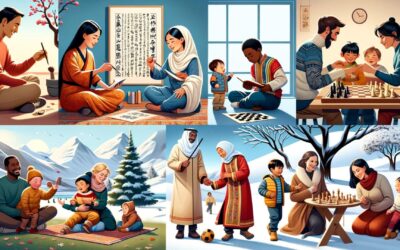
Parenting Around the World: Why There’s No One “Right” Way
by English Plus | Apr 26, 2024
Ever wondered if your parenting style is the norm? Discover how diverse cultures shape child-rearing, from discipline to independence, and why understanding these differences matters.

Intersectionality: Why Everyone Needs This Tool for Social Justice
by English Plus | Apr 12, 2024
What is intersectionality, and why does it matter for building a fairer world? Learn how your unique experiences shape your view of social issues.
Recent Posts

The Enduring Charm of ‘Stellaluna’ by Janell Cannon: A Tale of Belonging and Friendship
Jun 6, 2024 | Great Stories
Discover the enchanting story of ‘Stellaluna’ by Janell Cannon. Learn about the book’s themes of belonging and friendship and its lasting impact on readers of all ages.

Ultimate Mythic Monsters and Creatures Quiz
Jun 5, 2024 | Trivia
Challenge yourself with our Ultimate Mythic Monsters and Creatures Quiz. Discover fascinating facts about mythical creatures from various cultures. Perfect for mythology enthusiasts!

Mythical Beasts: Exploring the Legends and Symbolism of Ancient and Modern Creatures
Jun 5, 2024 | Myths and Legends
Embark on a captivating journey into the world of mythical beasts in our audio mini-series, “Mythical Beasts.” Explore the legends, symbolism, and cultural significance of these creatures from ancient civilizations to contemporary lore. Delve into the rich tapestry of folklore, discover the origins of dragons, griffins, sea monsters, and more, and uncover how these creatures continue to capture our imagination in modern times. Join us as we unravel the mysteries and delve into the captivating realm of mythical beasts.

English in Context | Mental Health Awareness in the Digital Age
Jun 5, 2024 | English in Context
Explore the impact of the digital age on mental health, uncovering the challenges and solutions for mental well-being in an increasingly online world. Learn advanced English vocabulary in this comprehensive article.
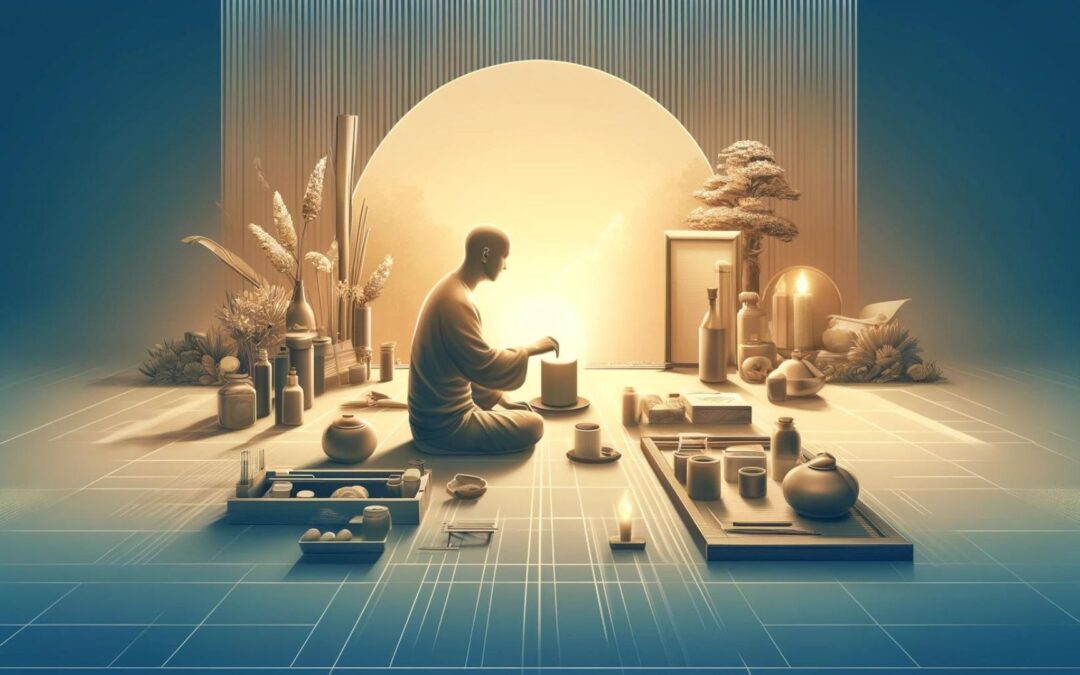
How Simple Rituals Can Bring Control and Order to Chaotic Situations
Jun 5, 2024 | Know Yourself
Discover how simple rituals can provide a sense of control and order in chaotic situations. Learn about the psychological benefits and practical applications of rituals in daily life.
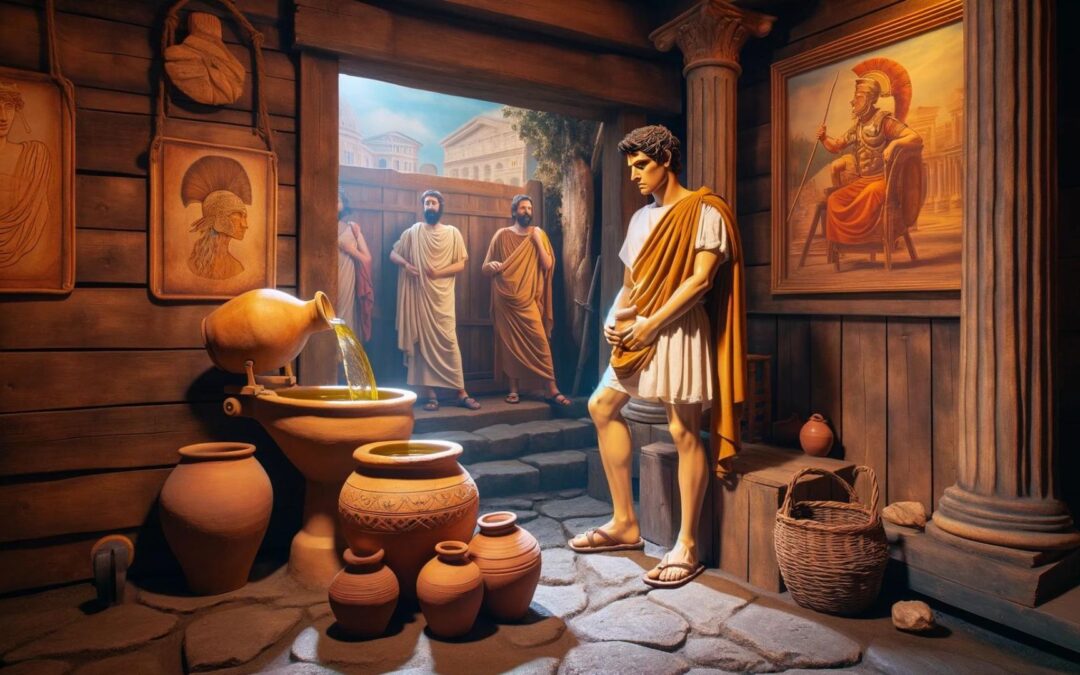
Ancient Romans and Their Unique Hygiene Practices: Using Urine as Mouthwash
Jun 5, 2024 | Flash Facts
Discover the fascinating history of ancient Roman hygiene practices, including the surprising use of urine as mouthwash. Learn about the methods, reasons, and cultural context behind this unusual practice.
- Crossword Puzzles in Context (176)
- Common Mistakes in English (5)
- Cultural English (7)
- English For Specific Purposes (3)
- Focus on Business (8)
- Focus on Grammar (8)
- Focus on Literature (7)
- Focus on Skills (7)
- Focus on Speaking (7)
- Focus on Vocabulary (8)
- Focus on Writing (7)
- Grammar And Vocabulary (6)
- Idiomatic Expressions (8)
- Listening and Speaking (3)
- Reading and Writing (3)
- Common Mistakes in English (14)
- Countries (15)
- Grammar (18)
- History (16)
- Literature (18)
- Science (19)
- Trivia (18)
- Vocabulary (17)
- English Expressions (43)
- English Usage (14)
- Flash Facts (43)
- Great Stories (18)
- Immortal People (17)
- Know Yourself (43)
- Poetry Shorts (32)
- Proverbs (79)
- Quotes (78)
- Spotlights Shorts (32)
- Word Power Shorts (43)
- A Very Short History of the World (16)
- Beyond Earth (2)
- Big Ideas Explained (13)
- Business Spotlights (42)
- Career Insights (28)
- Creative Writing Tips (21)
- Cultural Insights (28)
- Did You Know (26)
- English Plus Multimedia (4)
- Fact or Fiction (22)
- Frequently Asked Questions (24)
- General Spotlights (10)
- Gods and Heroes (33)
- Grammar Galaxy (2)
- Health and Fitness (32)
- Her Story (2)
- History Spotlights (45)
- Lessons from Everything (1)
- Letter from the Editor (1)
- Lifelines (7)
- Literary Echoes (40)
- Magazine Series (1)
- Mysteries Revealed (25)
- Planet Earth (21)
- Curriculum Development (4)
- Education Policy (4)
- Education Spotlights (36)
- Educational Technology (10)
- Higher Education (1)
- Language Learning Strategies (5)
- Learning and the Brain (12)
- Parent and Community (13)
- Teacher Development (3)
- Teaching Strategies (1)
- Podcasting (2)
- Polyglot (1)
- Arts and Literature (6)
- Danny's Poetry (3)
- Immortal Books (8)
- Immortals (6)
- Ink & Ashes (1)
- Literary Spotlights (1)
- Myths and Legends (8)
- NonFiction (1)
- Poet Diary (1)
- Poetry for Everyone (6)
- Project Orpheus (1)
- Short Stories (2)
- Short Stories for Everyone (5)
- Writing Tips and Techniques (9)
- Science Spotlights (51)
- Short Introductions (183)
- Social Spotlights (50)
- The Journey Within (59)
- Top Ten (12)
- War and Peace (29)
- 101 Series (1)
- Ask Danny (1)
- Bonus Episodes (1)
- Business English (44)
- Common Mistakes (7)
- Discussions (5)
- Down to Business (3)
- Education for All (1)
- English Express (21)
- English in Context (1)
- English Plus in Action (1)
- English Plus Show (1)
- Fantastic Guest (4)
- Grammar (41)
- History (22)
- Know Thyself (2)
- Let's Talk Literature (5)
- Magazine Spotlights (1)
- Mythology (20)
- Our Story (1)
- Poetry (33)
- Pronunciation (4)
- Real Conversations (7)
- Science (20)
- Society and Culture (9)
- Stories (32)
- Technology (1)
- The Daily Digest (17)
- The Universe (1)
- Vocabulary Building (114)
- Vocabulary in Context (2)
- Vocabulary Voyages (3)
- Word Power (87)
- Writing (4)
- Featured Articles (10)
- Red Dead Redemption (1)
- The Last of Us (2)
- The Odyssey (1)
- Old Audio Series (6)
- Premium Episodes (4)
- Premium Series (6)
Pin It on Pinterest
Insert/edit link.
Enter the destination URL
Or link to existing content
- Technical Support
- Find My Rep
You are here
Media Power in Politics
- Doris A. Graber - University of Illinois at Chicago, USA
- Description
Once again, Doris Graber brings readers the most thought-provoking and recent scholarship about the actual power of the media in the real world of politics. With approximately 35 essays, half of them new to this edition, the selections reflect the latest changes in American politics, in American media platforms, and in the interactions between political actors and journalists.
Examining these changes and assessing their political significance, this new sixth edition includes coverage of:
- the influence of non-professional citizen journalists;
- a look ahead at media development in the next decade;
- the public’s growing disdain for the media and its effect on the media’s influence;
- old and new media’s impact on political participation;
- media and the 2008 presidential election;
- interest groups’ power to control news selection;
- media happenings at the state and local levels;
- lobbyists’ efforts to derail updates to media laws and regulations.
See what’s new to this edition by selecting the Features tab on this page. Should you need additional information or have questions regarding the HEOA information provided for this title, including what is new to this edition, please email [email protected] . Please include your name, contact information, and the name of the title for which you would like more information. For information on the HEOA, please go to http://ed.gov/policy/highered/leg/hea08/index.html .
For assistance with your order: Please email us at [email protected] or connect with your SAGE representative.
SAGE 2455 Teller Road Thousand Oaks, CA 91320 www.sagepub.com
A first-rate collection of chapters with relevant case studies of the power of media in politics.
New to this Edition With approximately 35 essays, half of them new to this edition, the selections in the new edition of Media Power in Politics reflect the latest changes in American politics, in American media platforms, and in the interactions between political actors and journalists. The book also includes coverage of:
- a look ahead at media development in the next decade;
- the public's growing disdain for the media and its effect on the media's influence;
- old and new media's impact on political participation;
- media and the 2008 presidential election;
- interest groups' power to control news selection;
- lobbyists' efforts to derail updates to media laws and regulations.
Preview this book
For instructors, select a purchasing option.

45,000+ students realised their study abroad dream with us. Take the first step today
Meet top uk universities from the comfort of your home, here’s your new year gift, one app for all your, study abroad needs, start your journey, track your progress, grow with the community and so much more.

Verification Code
An OTP has been sent to your registered mobile no. Please verify

Thanks for your comment !
Our team will review it before it's shown to our readers.

- School Education /
Essay on Media: Short and Long Sample Essays

- Updated on
- Dec 18, 2023

Media plays an important role in shaping our perceptions, influencing public opinion, and connecting individuals across the globe. The role of media in today’s modern world is not limited to just providing information. There are three basic purposes of media; inform, educate, and entertain. A society with free media allows it to have a social and cultural impact on it. Media offers us information about every activity going on in the world. Our smartphones, laptops, televisions, radios, and even public transportation have access to media, where we can watch news anytime and anywhere. Media not only influence our thoughts but can often manipulate our understanding of a particular topic. Continue reading essay on media to know more. Stay tuned!
Also Read: Social Media Bane or Boon
Also Read: Essay on Colonialism
Short Essay on Media
‘Media plays an important role in shaping our perceptions, influencing public opinion, and connecting individuals across the globe. Media includes different platforms such as television, radio, newspapers, and the internet. Media is considered a powerful tool to disseminate information and have social, cultural, and political influences on the masses.’
Some of the roles played by the media are:
- Informing the public through newspapers, news channels, and online portals.
- At the push of a button, media can provide us with a large source of information.
- Media has a significant impact on public opinion by framing issues, influencing perceptions, and shaping narratives.
- Some media platforms are considered political watchdogs, scrutinizing the actions of government officials and institutions.
- Several media platforms rely on advertising revenue, and in turn, they provide a platform for businesses to promote their products and services.
Media can have both positive and negative impacts on an individual and society as a whole. Understanding the role of media and its limitations is important when watching or reading news. Media is meant for informational purposes. Its influence can vary from person to person. Media is a double-edged sword, which can have a negative or positive impact on our understanding, depending on how we perceive information.
Also Read: Essay on Social Issues
Long Essay on Media
‘Media is a great source of information. Some watch media for entertainment, while others for information or educational purposes. The way we perceive media can have a great impact on our understanding of a particular topic or information. In recent years, the influence of media has significantly increased. The role and influence of media is not limited and can take different forms. Newspapers and radio stations are some of the old and most preferred media sources as compared to television and internet media sources. The choices made by editors, the emphasis given to certain stories, and the narratives crafted can significantly impact how we perceive the world.
Types of Media
There are different types of media, which determine our choices.
News media comprises various platforms like SMS, blogs, email, internet, etc. These platforms are used to access and disseminate economic, social and political information. It offers new ways to develop business relationships with telecommunication companies that are capable of disseminating critical information that can change people’s lives.
Mass media includes print (newspapers, magazines), TV and radio. Due to the fast-paced TV and radio media platforms, there has been a significant decline in newspaper readership all over the world. However, there is a section of a group who still prefer newspapers as the best sources of information. On the other hand, TV and radio stations offer live information from different parts of the world.
Community Media
Community media focuses on the development and issues of a particular community. Some journalists work for community newspapers and radio stations within their community. They have their geographical limitations and sometimes are poorly resourced with immature journalists and editors.
What is the Role of Media?
‘Media plays multiple roles, educating and informing us about different fields. Media is not only there for news but also produces some amazing stories, documentaries, magazine programs and articles through its platforms.’
‘Media allows us to raise awareness and public voice against any unethical activity or decision of the government. Apart from sharing information, media has the power to be a catalyst for social change. It serves as a platform for advocacy, shedding light on injustices, and human rights violations, and inspiring collective action.
We have witnessed how movements for equality and justice have gained momentum through the amplifying effect of media. As responsible citizens, we should support and engage with media that contributes to positive social change.
Different Roles of People in Media
Different people play different roles in the media and mass communication sector.
- Board of Directors – Their job is to ensure that everyone within the organization fulfills their responsibilities within the given framework. They are the real policymakers within the organization. They are not responsible for day-to-day media programs. Their job is not to influence the work of editorial staff and junior journalists.
- Media Manager – They are responsible for the formulation and implementation of policies for employees. They keep a check on what their media covers, how they have to do it, and what resources are required for everyday media coverage.
- Editors – There are different editorial teams, based on their roles and responsibilities. It includes editor-in-chief, special projects, financial, business, assignment, entertainment, etc. They are the gatekeepers because they are the final decision-makers on what will be published. They also guide journalists on the sources they would like to see in the story.
- Sub-editors – They are an important part of a media house as they determine the ‘End product.’ Their role is to edit stories of structure, measure lengths of stories, check factual details, etc. They are responsible for writing news headlines and captions for photographs. These people have to work under strict deadlines. Because of this, their decision can be detrimental to the published stories.
- Reporter/ Journalist – They are the news hunters and gatherers. They make decisions on which stories to cover. It is critical to identify which journalists cover your type of issues and develop a relationship with them.
Related Articles
Ans: Media plays an important role in shaping our perceptions, influencing public opinion, and connecting individuals across the globe. Media includes different platforms such as television, radio, newspapers, and the internet.
Ans: There are three types of media: New media, Community media, and mass media.
Ans: Several people perform different roles in a media house, including reporters or journalists, sub-editors, editors, media managers, and the board of directors.
For more information on such interesting topics, visit our essay writing page and follow Leverage Edu .
Shiva Tyagi
With an experience of over a year, I've developed a passion for writing blogs on wide range of topics. I am mostly inspired from topics related to social and environmental fields, where you come up with a positive outcome.
Leave a Reply Cancel reply
Save my name, email, and website in this browser for the next time I comment.
Contact no. *

Connect With Us

45,000+ students realised their study abroad dream with us. Take the first step today.

Resend OTP in

Need help with?
Study abroad.
UK, Canada, US & More
IELTS, GRE, GMAT & More
Scholarship, Loans & Forex
Country Preference
New Zealand
Which English test are you planning to take?
Which academic test are you planning to take.
Not Sure yet
When are you planning to take the exam?
Already booked my exam slot
Within 2 Months
Want to learn about the test
Which Degree do you wish to pursue?
When do you want to start studying abroad.
January 2024
September 2024
What is your budget to study abroad?

How would you describe this article ?
Please rate this article
We would like to hear more.
Have something on your mind?

Make your study abroad dream a reality in January 2022 with
India's Biggest Virtual University Fair

Essex Direct Admission Day
Why attend .

Don't Miss Out
12.1 The Media as a Political Institution: Why Does It Matter?
Learning outcomes.
By the end of this section, you will be able to:
- Explain the importance of a free press both in the United States and abroad.
- Describe how the media acts as a watchdog and give examples.
- Understand and define how political information is mediated.
Congress shall make no law respecting an establishment of religion, or prohibiting the free exercise thereof; or abridging the freedom of speech, or of the press; or the right of the people peaceably to assemble, and to petition the Government for a redress of grievances. —The 1st Amendment to the United States Constitution
The press is the only profession explicitly protected in the United States Constitution. Many attribute this protection to James Madison and his writings in the Federalist Papers , but the idea of a free press stretches back to well before Madison wrote out his ideas on what constitutes a perfect democracy. The origins of the free press in the United States can be traced back to Cato’s letters , a collection of essays written in the 1720s by two British writers, John Trenchard and Thomas Gordon . Using the pseudonym Cato, they published their articles in the British press, criticizing the British monarchy for its corruption and tyrannical practices. Decades later, American colonists felt the effects of these letters during their own struggles against the Crown, 1 and in 1776, Virginia became the first state to formally adopt a constitutional provision to protect press freedom. 2 Why is the idea of protecting the press so embedded in the United States’ concept of government, and why is this concept so important? Do other nations protect the media to the same extent, or even more? The next section will examine these questions.
The Fourth Estate and Freedom of the Press
The importance of a free press can be boiled down to a sentence from esteemed University of Illinois at Chicago lecturer Doris Graber ’s seminal work Mass Media and American Politics : “The mass media . . . serve as powerful guardians of political norms because the American people believe that a free press should keep them informed about the wrongdoings of government.” 3 Another common way of defining the media’s role is to say that it acts as the fourth estate , or the unofficial fourth branch of government that checks the others. The term fourth estate is credited to Scottish writer Thomas Carlyle , who wrote, “Burke said there were Three Estates in Parliament; but, in the Reporter’s Gallery yonder, there sat a Fourth Estate more important far than they all.” 4 In other words, people look to the media—the fourth estate—to keep the government in check. The role of the media must be protected if it is to carry out that task.
Throughout US history, the media has fulfilled this role as intended. In the late 1960s, Rand Corporation analyst Daniel Ellsberg provided classified documents to the New York Times and the Washington Post proving that the government was concealing protracted military involvement in the Vietnam War. The New York Times withstood government pressure and a Supreme Court case to go on to publish a series of articles now known as the Pentagon Papers , which revealed the extent to which the American public had been lied to about the country’s progress in that war. The Watergate scandal is perhaps the most famous example of press freedom and the role of the press as watchdog (another term for the fourth estate ). In this instance, a government informant known as Deep Throat fed Washington Post reporters Bob Woodward and Carl Bernstein confidential information about then president Richard Nixon’s corrupt campaign practices. An ensuing series of investigative pieces by the two journalists revealed multiple abuses of power in Nixon’s reelection campaign, and their reporting ultimately led to the indictment of multiple presidential aides and the eventual resignation of the president himself.
In this video clip, investigative journalists Bob Woodward and Carl Bernstein, editor Barry Sussman, and former executive editor Ben Bradlee recall how, when they worked for the Washington Post in 1972, they broke the story of the Watergate scandal, a story that started with an investigation of a break-in at a Washington, DC, hotel and led to a constitutional crisis, the resignation of President Richard Nixon, and almost 50 criminal convictions.
In the case of the Pentagon Papers, the Supreme Court ruled 6–3 that the president’s argument—that prior restraint 5 was necessary in order to protect national security—was not enough “to abrogate the fundamental law embodied in the First Amendment ,” 6 and this is the most important First Amendment case because it addresses the sweeping right of the press and press protections in the 20th century. Watergate showed how a protected press is free to serve one of its main purposes, which is to reveal government misconduct. New Yorker staff writer Richard Harris wrote at the time that, “The press was potentially Mr. Nixon’s enemy—far more than the courts or Congress, because only the press could dig out and tell the story (whatever help reporters might get from the courts or Congress) in a way that would arouse the people to demand an accounting.” 7
Watchdogs do not have to be journalistic behemoths like the New York Times or the Washington Post. In the United Kingdom, a small, independent newspaper called the Rochdale Alternative Paper revealed decades-long abuse allegations against Liberal Party MP 8 Cyril Smith . The exposé in the paper, which had a circulation of 8,000 at its highest, 9 eventually led to both a police and an independent government investigation into a child abuse ring that involved several high-level government officials, including MP Peter Morrison, the private secretary to then prime minister Margaret Thatcher . 10 Another way to understand the watchdog function of the press is through the term muckraker , referring to reform-minded investigative journalists during the Progressive Era in the United States (late 1800s to early 1900s) who exposed the wrongdoings of industry leaders. One famous example of a muckraker was Upton Sinclair , who wrote the novel The Jungle based on the corrupt and inhumane practices in American meatpacking companies at the turn of the 20th century. The publication of The Jungle led to governmental action on food safety. In his 1919 work The Brass Check , Sinclair exposed the journalism industry’s penchant for yellow journalism , or journalism that relies on catchy titles and human interest stories to drive sales over well-researched articles or pieces on civic affairs. Sinclair was not afraid to take on media titans such as William Randolph Hearst , who owned the nation’s largest chain of newspapers at the time.
Watchdogs and muckrakers act as a check on government action and corruption. They play an important part in exercising the role of a free press as a cornerstone of a functioning democracy. As Yale University professor and member of the Council on Foreign Relations Timothy Snyder writes, “If nothing is true, then no one can criticize power, because there is no basis upon which to do so.” 11 The media allows the public to understand what is happening in government in order to hold elected officials accountable. Or, perhaps more simply put, “A free press is important because it is the freedom upon which all of our other freedoms are contingent.” 12
How free is the press? The answer is not black and white, as evidenced by the 2021 World Press Freedom Index . Published every year by Reporters Without Borders , the Freedom Index measures freedom in 180 countries “based on an evaluation of pluralism, independence of the media, quality of legislative framework and safety of journalists in each country and region.” 13 The map in Figure 12.3 below shows that the press is freer in some countries (in pink and purple on the map) than in others (in blue and green).
According to the index and as reflected in the map, Norway, Finland, Sweden, and Denmark have the freest presses in the world. Notably, Norway tries to discourage media concentration in order to ensure a variety of outlets, something that will be discussed in later parts of this chapter. The 2021 index ranked the United States 44th, after South Africa (32nd), Botswana (38th), and South Korea (42nd).
George Mason University professor Sam Lebovic explains that two main factors, the rise of concentration in ownership and increased state secrecy, are responsible for the inadequacy of press freedom in the United States, which is an ongoing and serious problem. 14 The modern US media faces unprecedented struggles against declining viewership and revenues, which work to limit the number of outlets and decrease the number of working journalists. At the same time, legislation such as the Patriot Act , passed after the September 11, 2001, terrorist attacks, has made it more difficult for the press to verify state information because of increasing pressure on sources not to cooperate and prosecution of journalists who do ascertain information. In addition, the Trump administration further hampered press freedoms through the prosecution of news sources, public statements that discredited journalists, and encouragement of foreign leaders to take steps to restrict their own media. 15 The future of press freedom in America, while still unstable due to media concentration and surveillance laws such as the Patriot Act, may show some signs of improvement; in a speech on Press Freedom Day in 2021, President Joe Biden decried the imprisonment of 274 reporters worldwide, criticized the lack of local media outlets, and said that the United States “recognize[s] the integral role a free press plays in building prosperous, resilient, and free societies.” 16 Despite these laudatory comments about a free press, however, it is clear the United States faces challenges in protecting journalists’ ability to fulfill their roles.
A study of the United States and Latin America provides an example of how this idea of the importance of a free press is shared across cultures. In the study, journalists representing both cultures shared a common definition of a free press as one that functions without government pressure and to promote social and economic development. 17 This study considered whether or not a free press is related to increased economic development, a question that to date has not been conclusively answered. While the notion that political freedoms (such as freedom of the press) should naturally encourage economic growth and increased standards of living is a common one, current research has not found conclusive evidence either supporting or refuting the claim. 18
There is more of a consensus on the benefits of a free press when it comes to preventing corruption. Studies of press freedom around the world, conducted by scholars in England, Argentina, and Australia, confirm this theory. 19 In this way, the watchdog role that the press plays is based on democratic ideals and has real-world effects for the public.
The Mediated Nature of Political Information
The political information most people receive is mediated information . What does this mean? Unless they work directly in government, most citizen’s understanding of politics comes completely from the media, whether via television news, podcasts, or social media feeds. The media may be a gatekeeper, but it is also a storyteller. As such, it is important to realize that what people see in the media is actually a manufactured view of the political world. Journalists and others who create the news follow routines and are influenced by institutional values that manifest themselves in media content. As Columbia University professor Herbert Gans writes in his study of the American media, “The news does not limit itself to reality judgments; it also contains values, or preference statements. This in turn makes it possible to suggest that there is, underlying the news, a picture of nation and society as it ought to be.” 20 Gans acknowledges that professional journalists try to be objective, yet the news does in fact make judgments and value statements. For example, crime news alerts viewers to the idea that there are undesirable actors within society and that criminals should be punished. Judgments and value statements such as these are different from political bias; while some news outlets are overtly liberal or conservative, Gans’s study shows that the media produces stories with cultural values that people may not detect because they are so used to seeing stories presented this way. For example, according to Gans, ethnocentrism and altruistic democracy are two of the key enduring values in the news. Ethnocentrism in the news refers to the idea that the American media values the United States above all other nations. This manifests most obviously in war coverage, where the press rarely questions American involvement—and to do so would be unpatriotic. In a similar vein, Gans explains that the American news media emphasize an altruistic democracy , the ideal held up by the media that politics should be based on public service and for the public interest. 21 In these ways, the news makes statements about what is right and what is wrong and presents political news through these lenses.
Journalists also share other professional values as to what makes a “good” news story, such as proximity, negativity, scope (how big is the story?), timeliness, and unexpectedness (novelty). 22 Because journalists share these professional values, there is a certain homogeneous quality to the news, otherwise known as pack journalism . This means that people receive the same type of news story repeatedly, though this has been changing since the advent of online news, a topic that will be discussed later in the chapter. Journalists’ common ideas about what should be in the news and why color their coverage and presentation of the news—and, as a result, the public’s perception of politics.
It is important here to note that the concept of news values differs across countries—what is newsworthy in the United States may not be in other nations—and the role of the media differs as well. A study on the news in Japan found that strong cultural forces and local needs drive how news is produced and delivered. 23 Other scholars have found that Western news organizations highlight human interest stories, while Arabic news focuses more on social responsibility and Islamic values. 24 University of Leicester Professor Vincent Campbell echoes the sentiment that news organizations in different countries are fueled by different values and that this influences what stories their audiences see. In authoritarian countries, journalists focus less on performing the watchdog role and more on promoting state activities. 25 This is the case in countries such as North Korea and China, where the state government runs the media.
Related to the idea that the media in large part decides what is a good news story is the concept of the media’s gatekeeping role and its agenda-setting powers. In other words, according to agenda-setting theory , the media decides both what to ignore or filter out and what to show the public. As University of Texas professor Maxwell McCombs and University of North Carolina professor Donald Shaw write, “In choosing and displaying news, editors, newsroom staff, and broadcasters play an important part in shaping political reality. Readers learn not only about a given issue, but also how much importance to attach to that issue from the amount of information in a news story and its position.” 26 Whether it is a producer who selects the topics for the evening news or an algorithm that creates a social media news feed, people know what is “news” by what is fed to them, they know what is important based on how often it gets airtime, and they understand that there are lead stories and stories that don’t matter very much. The public doesn’t make these decisions; professionals within the news industry make them for the public. (Later parts of this chapter will discuss how this power dynamic has changed thanks to social media and how, in many ways, it is no longer media professionals who select what the public sees.)
If the media decides which stories to present, it also has a hand in deciding how stories are presented. According to framing theory , the way the media frames political information can affect people’s understanding of it. University of Illinois professor David Tewksbury and University of Wisconsin professor Dietram A. Scheufele explain:
“Artists know that the frame placed around a painting can affect how viewers interpret and react to the painting itself. . . . Journalists—often subconsciously—engage in essentially the same process when they decide how to describe the political world. They choose images and words that have the power to influence how audiences interpret and evaluate issues and policies.” 27
For example, a study on gubernatorial races found that female candidates were more likely to be framed in terms of personal characteristics than their male counterparts, who were more likely to be framed in terms of their positions on policy issues. 28 In a separate study, researchers found that one common way the Dutch national media framed news on the European Union (EU) was in terms of assigning responsibility for social problems to the government. This study suggests that the Dutch media’s presentation of political news reflects the public expectation that the government will provide social welfare programs. 29 By highlighting certain aspects of a story and ignoring others, frames can affect people’s judgments and opinions on policy issues, and just as with agenda setting, elected officials fight to make sure they are framed in the correct light.
The public, and individual viewers, should know that while the media is a critical tool that aids people’s political decision-making, it is guided by professional values that dictate the content. Individuals’ views on politics can sometimes be out of their control, but they can work to assemble a better picture of the world by turning to a variety of media outlets and becoming aware of what goes into story selection. While internal pressures (such as professional norms) or external forces (such as authoritarian governments) can influence how the media portrays information, ownership can also affect what the public sees. The next section will examine the different types of media—and, perhaps more importantly, who owns them and how this affects their role in the political world.
As an Amazon Associate we earn from qualifying purchases.
This book may not be used in the training of large language models or otherwise be ingested into large language models or generative AI offerings without OpenStax's permission.
Want to cite, share, or modify this book? This book uses the Creative Commons Attribution License and you must attribute OpenStax.
Access for free at https://openstax.org/books/introduction-political-science/pages/1-introduction
- Authors: Mark Carl Rom, Masaki Hidaka, Rachel Bzostek Walker
- Publisher/website: OpenStax
- Book title: Introduction to Political Science
- Publication date: May 18, 2022
- Location: Houston, Texas
- Book URL: https://openstax.org/books/introduction-political-science/pages/1-introduction
- Section URL: https://openstax.org/books/introduction-political-science/pages/12-1-the-media-as-a-political-institution-why-does-it-matter
© Jan 3, 2024 OpenStax. Textbook content produced by OpenStax is licensed under a Creative Commons Attribution License . The OpenStax name, OpenStax logo, OpenStax book covers, OpenStax CNX name, and OpenStax CNX logo are not subject to the Creative Commons license and may not be reproduced without the prior and express written consent of Rice University.

Want to create or adapt books like this? Learn more about how Pressbooks supports open publishing practices.
1.3 The Evolution of Media
Learning objectives.
- Identify four roles the media performs in our society.
- Recognize events that affected the adoption of mass media.
- Explain how different technological transitions have shaped media industries.
In 2010, Americans could turn on their television and find 24-hour news channels as well as music videos, nature documentaries, and reality shows about everything from hoarders to fashion models. That’s not to mention movies available on demand from cable providers or television and video available online for streaming or downloading. Half of U.S. households receive a daily newspaper, and the average person holds 1.9 magazine subscriptions (State of the Media, 2004) (Bilton, 2007). A University of California, San Diego study claimed that U.S. households consumed a total of approximately 3.6 zettabytes of information in 2008—the digital equivalent of a 7-foot high stack of books covering the entire United States—a 350 percent increase since 1980 (Ramsey, 2009). Americans are exposed to media in taxicabs and buses, in classrooms and doctors’ offices, on highways, and in airplanes. We can begin to orient ourselves in the information cloud through parsing what roles the media fills in society, examining its history in society, and looking at the way technological innovations have helped bring us to where we are today.
What Does Media Do for Us?
Media fulfills several basic roles in our society. One obvious role is entertainment. Media can act as a springboard for our imaginations, a source of fantasy, and an outlet for escapism. In the 19th century, Victorian readers disillusioned by the grimness of the Industrial Revolution found themselves drawn into fantastic worlds of fairies and other fictitious beings. In the first decade of the 21st century, American television viewers could peek in on a conflicted Texas high school football team in Friday Night Lights ; the violence-plagued drug trade in Baltimore in The Wire ; a 1960s-Manhattan ad agency in Mad Men ; or the last surviving band of humans in a distant, miserable future in Battlestar Galactica . Through bringing us stories of all kinds, media has the power to take us away from ourselves.
Media can also provide information and education. Information can come in many forms, and it may sometimes be difficult to separate from entertainment. Today, newspapers and news-oriented television and radio programs make available stories from across the globe, allowing readers or viewers in London to access voices and videos from Baghdad, Tokyo, or Buenos Aires. Books and magazines provide a more in-depth look at a wide range of subjects. The free online encyclopedia Wikipedia has articles on topics from presidential nicknames to child prodigies to tongue twisters in various languages. The Massachusetts Institute of Technology (MIT) has posted free lecture notes, exams, and audio and video recordings of classes on its OpenCourseWare website, allowing anyone with an Internet connection access to world-class professors.
Another useful aspect of media is its ability to act as a public forum for the discussion of important issues. In newspapers or other periodicals, letters to the editor allow readers to respond to journalists or to voice their opinions on the issues of the day. These letters were an important part of U.S. newspapers even when the nation was a British colony, and they have served as a means of public discourse ever since. The Internet is a fundamentally democratic medium that allows everyone who can get online the ability to express their opinions through, for example, blogging or podcasting—though whether anyone will hear is another question.
Similarly, media can be used to monitor government, business, and other institutions. Upton Sinclair’s 1906 novel The Jungle exposed the miserable conditions in the turn-of-the-century meatpacking industry; and in the early 1970s, Washington Post reporters Bob Woodward and Carl Bernstein uncovered evidence of the Watergate break-in and subsequent cover-up, which eventually led to the resignation of President Richard Nixon. But purveyors of mass media may be beholden to particular agendas because of political slant, advertising funds, or ideological bias, thus constraining their ability to act as a watchdog. The following are some of these agendas:
- Entertaining and providing an outlet for the imagination
- Educating and informing
- Serving as a public forum for the discussion of important issues
- Acting as a watchdog for government, business, and other institutions
It’s important to remember, though, that not all media are created equal. While some forms of mass communication are better suited to entertainment, others make more sense as a venue for spreading information. In terms of print media, books are durable and able to contain lots of information, but are relatively slow and expensive to produce; in contrast, newspapers are comparatively cheaper and quicker to create, making them a better medium for the quick turnover of daily news. Television provides vastly more visual information than radio and is more dynamic than a static printed page; it can also be used to broadcast live events to a nationwide audience, as in the annual State of the Union address given by the U.S. president. However, it is also a one-way medium—that is, it allows for very little direct person-to-person communication. In contrast, the Internet encourages public discussion of issues and allows nearly everyone who wants a voice to have one. However, the Internet is also largely unmoderated. Users may have to wade through thousands of inane comments or misinformed amateur opinions to find quality information.
The 1960s media theorist Marshall McLuhan took these ideas one step further, famously coining the phrase “ the medium is the message (McLuhan, 1964).” By this, McLuhan meant that every medium delivers information in a different way and that content is fundamentally shaped by the medium of transmission. For example, although television news has the advantage of offering video and live coverage, making a story come alive more vividly, it is also a faster-paced medium. That means more stories get covered in less depth. A story told on television will probably be flashier, less in-depth, and with less context than the same story covered in a monthly magazine; therefore, people who get the majority of their news from television may have a particular view of the world shaped not by the content of what they watch but its medium . Or, as computer scientist Alan Kay put it, “Each medium has a special way of representing ideas that emphasize particular ways of thinking and de-emphasize others (Kay, 1994).” Kay was writing in 1994, when the Internet was just transitioning from an academic research network to an open public system. A decade and a half later, with the Internet firmly ensconced in our daily lives, McLuhan’s intellectual descendants are the media analysts who claim that the Internet is making us better at associative thinking, or more democratic, or shallower. But McLuhan’s claims don’t leave much space for individual autonomy or resistance. In an essay about television’s effects on contemporary fiction, writer David Foster Wallace scoffed at the “reactionaries who regard TV as some malignancy visited on an innocent populace, sapping IQs and compromising SAT scores while we all sit there on ever fatter bottoms with little mesmerized spirals revolving in our eyes…. Treating television as evil is just as reductive and silly as treating it like a toaster with pictures (Wallace, 1997).” Nonetheless, media messages and technologies affect us in countless ways, some of which probably won’t be sorted out until long in the future.
A Brief History of Mass Media and Culture
Until Johannes Gutenberg’s 15th-century invention of the movable type printing press, books were painstakingly handwritten and no two copies were exactly the same. The printing press made the mass production of print media possible. Not only was it much cheaper to produce written material, but new transportation technologies also made it easier for texts to reach a wide audience. It’s hard to overstate the importance of Gutenberg’s invention, which helped usher in massive cultural movements like the European Renaissance and the Protestant Reformation. In 1810, another German printer, Friedrich Koenig, pushed media production even further when he essentially hooked the steam engine up to a printing press, enabling the industrialization of printed media. In 1800, a hand-operated printing press could produce about 480 pages per hour; Koenig’s machine more than doubled this rate. (By the 1930s, many printing presses could publish 3,000 pages an hour.)
This increased efficiency went hand in hand with the rise of the daily newspaper. The newspaper was the perfect medium for the increasingly urbanized Americans of the 19th century, who could no longer get their local news merely through gossip and word of mouth. These Americans were living in unfamiliar territory, and newspapers and other media helped them negotiate the rapidly changing world. The Industrial Revolution meant that some people had more leisure time and more money, and media helped them figure out how to spend both. Media theorist Benedict Anderson has argued that newspapers also helped forge a sense of national identity by treating readers across the country as part of one unified community (Anderson, 1991).
In the 1830s, the major daily newspapers faced a new threat from the rise of penny papers, which were low-priced broadsheets that served as a cheaper, more sensational daily news source. They favored news of murder and adventure over the dry political news of the day. While newspapers catered to a wealthier, more educated audience, the penny press attempted to reach a wide swath of readers through cheap prices and entertaining (often scandalous) stories. The penny press can be seen as the forerunner to today’s gossip-hungry tabloids.
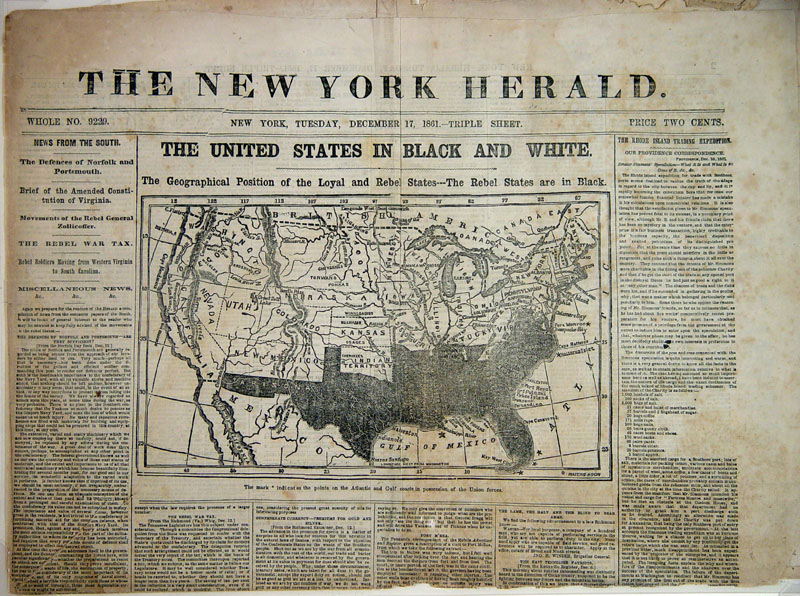
The penny press appealed to readers’ desires for lurid tales of murder and scandal.
Wikimedia Commons – public domain.
In the early decades of the 20th century, the first major nonprint form of mass media—radio—exploded in popularity. Radios, which were less expensive than telephones and widely available by the 1920s, had the unprecedented ability of allowing huge numbers of people to listen to the same event at the same time. In 1924, Calvin Coolidge’s preelection speech reached more than 20 million people. Radio was a boon for advertisers, who now had access to a large and captive audience. An early advertising consultant claimed that the early days of radio were “a glorious opportunity for the advertising man to spread his sales propaganda” because of “a countless audience, sympathetic, pleasure seeking, enthusiastic, curious, interested, approachable in the privacy of their homes (Briggs & Burke, 2005).” The reach of radio also meant that the medium was able to downplay regional differences and encourage a unified sense of the American lifestyle—a lifestyle that was increasingly driven and defined by consumer purchases. “Americans in the 1920s were the first to wear ready-made, exact-size clothing…to play electric phonographs, to use electric vacuum cleaners, to listen to commercial radio broadcasts, and to drink fresh orange juice year round (Mintz, 2007).” This boom in consumerism put its stamp on the 1920s and also helped contribute to the Great Depression of the 1930s (Library of Congress). The consumerist impulse drove production to unprecedented levels, but when the Depression began and consumer demand dropped dramatically, the surplus of production helped further deepen the economic crisis, as more goods were being produced than could be sold.
The post–World War II era in the United States was marked by prosperity, and by the introduction of a seductive new form of mass communication: television. In 1946, about 17,000 televisions existed in the United States; within 7 years, two-thirds of American households owned at least one set. As the United States’ gross national product (GNP) doubled in the 1950s, and again in the 1960s, the American home became firmly ensconced as a consumer unit; along with a television, the typical U.S. household owned a car and a house in the suburbs, all of which contributed to the nation’s thriving consumer-based economy (Briggs & Burke, 2005). Broadcast television was the dominant form of mass media, and the three major networks controlled more than 90 percent of the news programs, live events, and sitcoms viewed by Americans. Some social critics argued that television was fostering a homogenous, conformist culture by reinforcing ideas about what “normal” American life looked like. But television also contributed to the counterculture of the 1960s. The Vietnam War was the nation’s first televised military conflict, and nightly images of war footage and war protesters helped intensify the nation’s internal conflicts.
Broadcast technology, including radio and television, had such a hold on the American imagination that newspapers and other print media found themselves having to adapt to the new media landscape. Print media was more durable and easily archived, and it allowed users more flexibility in terms of time—once a person had purchased a magazine, he or she could read it whenever and wherever. Broadcast media, in contrast, usually aired programs on a fixed schedule, which allowed it to both provide a sense of immediacy and fleetingness. Until the advent of digital video recorders in the late 1990s, it was impossible to pause and rewind a live television broadcast.
The media world faced drastic changes once again in the 1980s and 1990s with the spread of cable television. During the early decades of television, viewers had a limited number of channels to choose from—one reason for the charges of homogeneity. In 1975, the three major networks accounted for 93 percent of all television viewing. By 2004, however, this share had dropped to 28.4 percent of total viewing, thanks to the spread of cable television. Cable providers allowed viewers a wide menu of choices, including channels specifically tailored to people who wanted to watch only golf, classic films, sermons, or videos of sharks. Still, until the mid-1990s, television was dominated by the three large networks. The Telecommunications Act of 1996, an attempt to foster competition by deregulating the industry, actually resulted in many mergers and buyouts that left most of the control of the broadcast spectrum in the hands of a few large corporations. In 2003, the Federal Communications Commission (FCC) loosened regulation even further, allowing a single company to own 45 percent of a single market (up from 25 percent in 1982).
Technological Transitions Shape Media Industries
New media technologies both spring from and cause social changes. For this reason, it can be difficult to neatly sort the evolution of media into clear causes and effects. Did radio fuel the consumerist boom of the 1920s, or did the radio become wildly popular because it appealed to a society that was already exploring consumerist tendencies? Probably a little bit of both. Technological innovations such as the steam engine, electricity, wireless communication, and the Internet have all had lasting and significant effects on American culture. As media historians Asa Briggs and Peter Burke note, every crucial invention came with “a change in historical perspectives.” Electricity altered the way people thought about time because work and play were no longer dependent on the daily rhythms of sunrise and sunset; wireless communication collapsed distance; the Internet revolutionized the way we store and retrieve information.
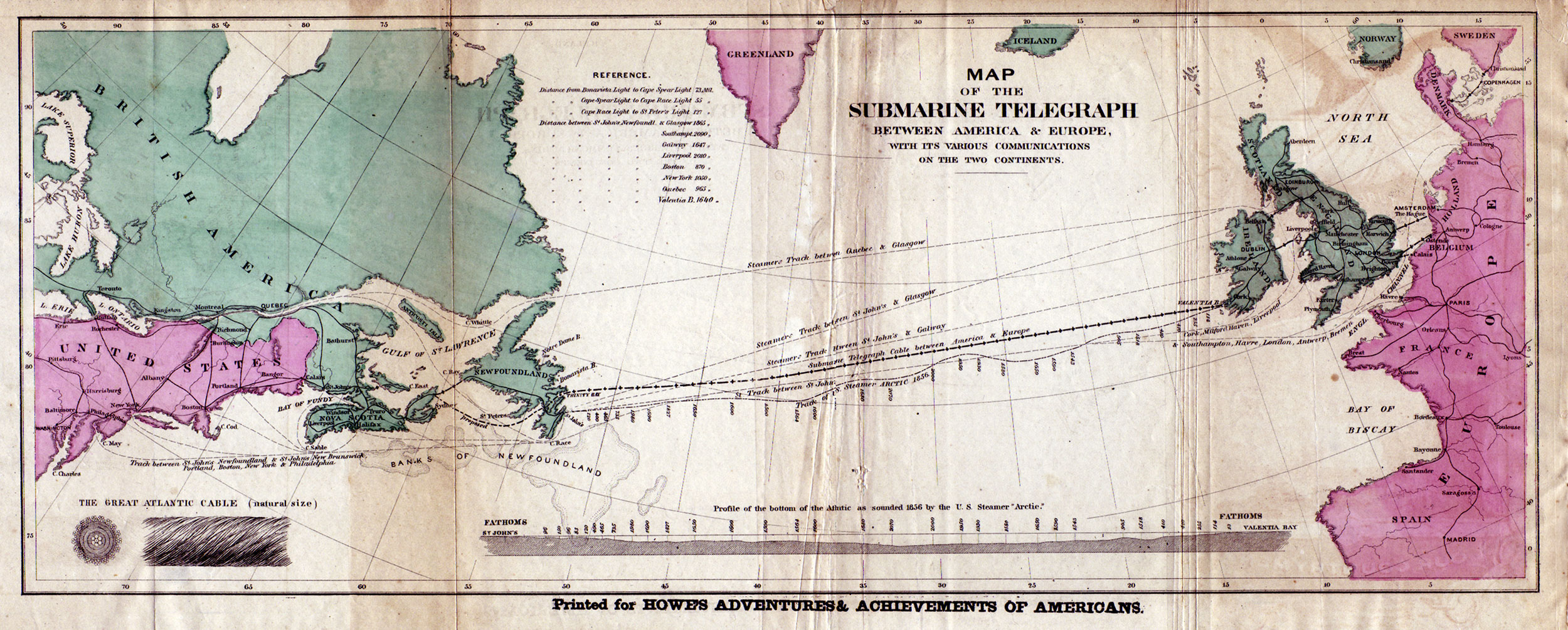
The transatlantic telegraph cable made nearly instantaneous communication between the United States and Europe possible for the first time in 1858.
Amber Case – 1858 trans-Atlantic telegraph cable route – CC BY-NC 2.0.
The contemporary media age can trace its origins back to the electrical telegraph, patented in the United States by Samuel Morse in 1837. Thanks to the telegraph, communication was no longer linked to the physical transportation of messages; it didn’t matter whether a message needed to travel 5 or 500 miles. Suddenly, information from distant places was nearly as accessible as local news, as telegraph lines began to stretch across the globe, making their own kind of World Wide Web. In this way, the telegraph acted as the precursor to much of the technology that followed, including the telephone, radio, television, and Internet. When the first transatlantic cable was laid in 1858, allowing nearly instantaneous communication from the United States to Europe, the London Times described it as “the greatest discovery since that of Columbus, a vast enlargement…given to the sphere of human activity.”
Not long afterward, wireless communication (which eventually led to the development of radio, television, and other broadcast media) emerged as an extension of telegraph technology. Although many 19th-century inventors, including Nikola Tesla, were involved in early wireless experiments, it was Italian-born Guglielmo Marconi who is recognized as the developer of the first practical wireless radio system. Many people were fascinated by this new invention. Early radio was used for military communication, but soon the technology entered the home. The burgeoning interest in radio inspired hundreds of applications for broadcasting licenses from newspapers and other news outlets, retail stores, schools, and even cities. In the 1920s, large media networks—including the National Broadcasting Company (NBC) and the Columbia Broadcasting System (CBS)—were launched, and they soon began to dominate the airwaves. In 1926, they owned 6.4 percent of U.S. broadcasting stations; by 1931, that number had risen to 30 percent.
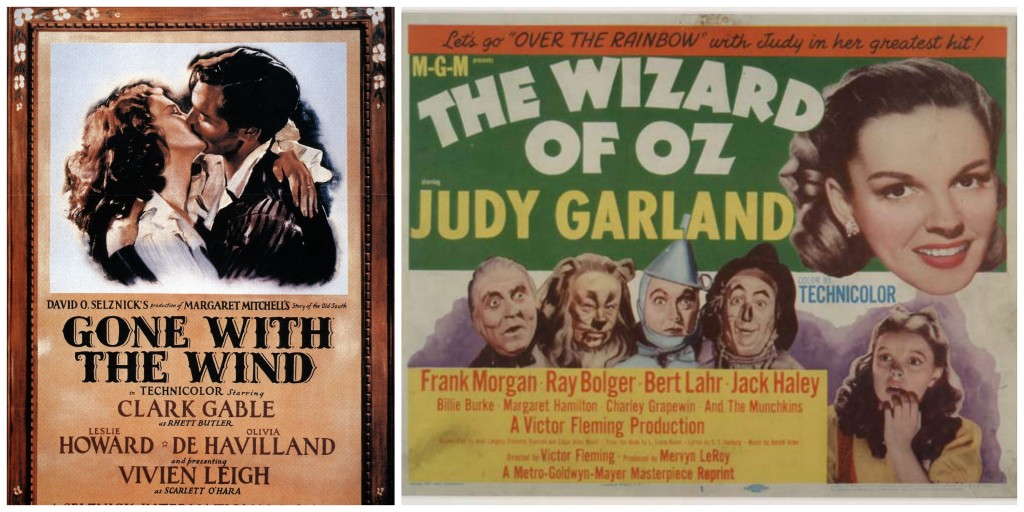
Gone With the Wind defeated The Wizard of Oz to become the first color film ever to win the Academy Award for Best Picture in 1939.
Wikimedia Commons – public domain; Wikimedia Commons – public domain.
In addition to the breakthroughs in audio broadcasting, inventors in the 1800s made significant advances in visual media. The 19th-century development of photographic technologies would lead to the later innovations of cinema and television. As with wireless technology, several inventors independently created a form of photography at the same time, among them the French inventors Joseph Niépce and Louis Daguerre and the British scientist William Henry Fox Talbot. In the United States, George Eastman developed the Kodak camera in 1888, anticipating that Americans would welcome an inexpensive, easy-to-use camera into their homes as they had with the radio and telephone. Moving pictures were first seen around the turn of the century, with the first U.S. projection-hall opening in Pittsburgh in 1905. By the 1920s, Hollywood had already created its first stars, most notably Charlie Chaplin; by the end of the 1930s, Americans were watching color films with full sound, including Gone With the Wind and The Wizard of Oz .
Television—which consists of an image being converted to electrical impulses, transmitted through wires or radio waves, and then reconverted into images—existed before World War II, but gained mainstream popularity in the 1950s. In 1947, there were 178,000 television sets made in the United States; 5 years later, 15 million were made. Radio, cinema, and live theater declined because the new medium allowed viewers to be entertained with sound and moving pictures in their homes. In the United States, competing commercial stations (including the radio powerhouses of CBS and NBC) meant that commercial-driven programming dominated. In Great Britain, the government managed broadcasting through the British Broadcasting Corporation (BBC). Funding was driven by licensing fees instead of advertisements. In contrast to the U.S. system, the BBC strictly regulated the length and character of commercials that could be aired. However, U.S. television (and its increasingly powerful networks) still dominated. By the beginning of 1955, there were around 36 million television sets in the United States, but only 4.8 million in all of Europe. Important national events, broadcast live for the first time, were an impetus for consumers to buy sets so they could witness the spectacle; both England and Japan saw a boom in sales before important royal weddings in the 1950s.
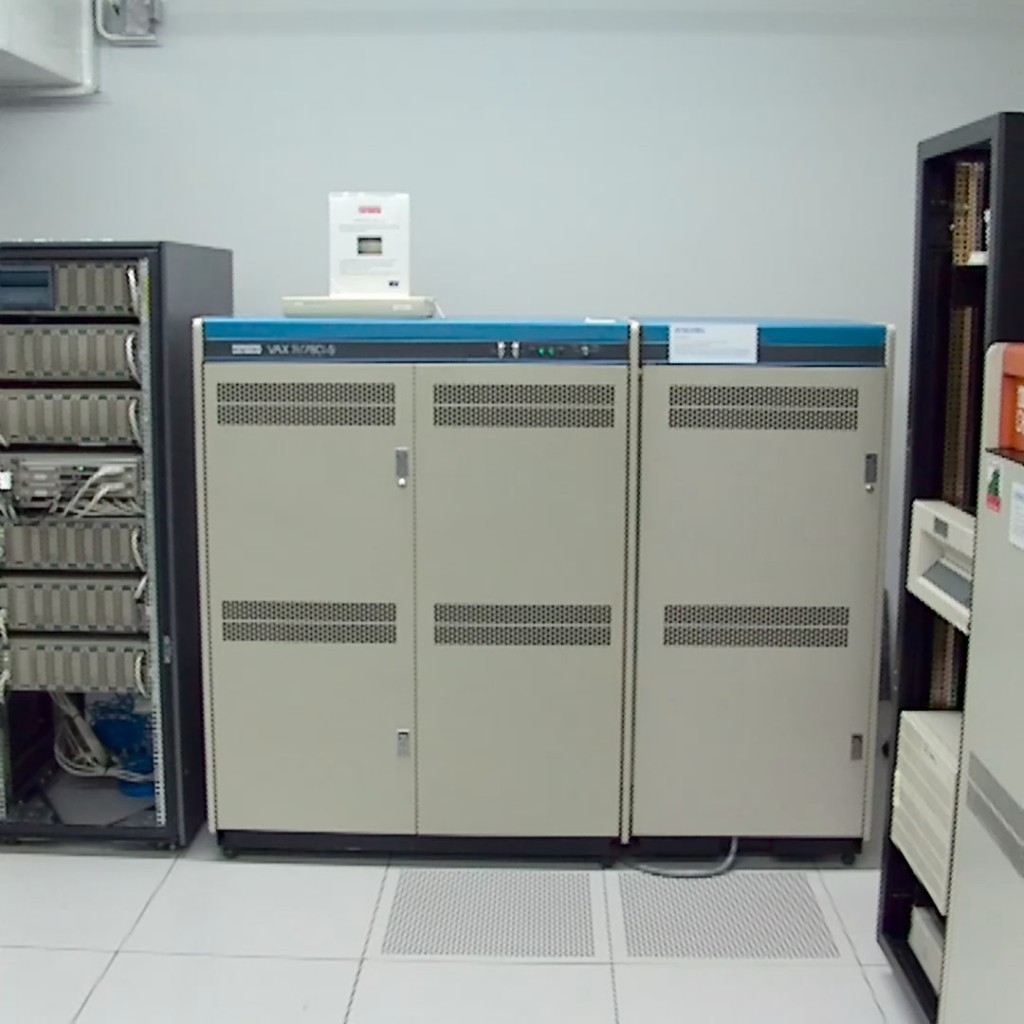
In the 1960s, the concept of a useful portable computer was still a dream; huge mainframes were required to run a basic operating system.
In 1969, management consultant Peter Drucker predicted that the next major technological innovation would be an electronic appliance that would revolutionize the way people lived just as thoroughly as Thomas Edison’s light bulb had. This appliance would sell for less than a television set and be “capable of being plugged in wherever there is electricity and giving immediate access to all the information needed for school work from first grade through college.” Although Drucker may have underestimated the cost of this hypothetical machine, he was prescient about the effect these machines—personal computers—and the Internet would have on education, social relationships, and the culture at large. The inventions of random access memory (RAM) chips and microprocessors in the 1970s were important steps to the Internet age. As Briggs and Burke note, these advances meant that “hundreds of thousands of components could be carried on a microprocessor.” The reduction of many different kinds of content to digitally stored information meant that “print, film, recording, radio and television and all forms of telecommunications [were] now being thought of increasingly as part of one complex.” This process, also known as convergence, is a force that’s affecting media today.
Key Takeaways
Media fulfills several roles in society, including the following:
- entertaining and providing an outlet for the imagination,
- educating and informing,
- serving as a public forum for the discussion of important issues, and
- acting as a watchdog for government, business, and other institutions.
- Johannes Gutenberg’s invention of the printing press enabled the mass production of media, which was then industrialized by Friedrich Koenig in the early 1800s. These innovations led to the daily newspaper, which united the urbanized, industrialized populations of the 19th century.
- In the 20th century, radio allowed advertisers to reach a mass audience and helped spur the consumerism of the 1920s—and the Great Depression of the 1930s. After World War II, television boomed in the United States and abroad, though its concentration in the hands of three major networks led to accusations of homogenization. The spread of cable and subsequent deregulation in the 1980s and 1990s led to more channels, but not necessarily to more diverse ownership.
- Transitions from one technology to another have greatly affected the media industry, although it is difficult to say whether technology caused a cultural shift or resulted from it. The ability to make technology small and affordable enough to fit into the home is an important aspect of the popularization of new technologies.
Choose two different types of mass communication—radio shows, television broadcasts, Internet sites, newspaper advertisements, and so on—from two different kinds of media. Make a list of what role(s) each one fills, keeping in mind that much of what we see, hear, or read in the mass media has more than one aspect. Then, answer the following questions. Each response should be a minimum of one paragraph.
- To which of the four roles media plays in society do your selections correspond? Why did the creators of these particular messages present them in these particular ways and in these particular mediums?
- What events have shaped the adoption of the two kinds of media you selected?
- How have technological transitions shaped the industries involved in the two kinds of media you have selected?
Anderson, Benedict Imagined Communities: Reflections on the Origin and Spread of Nationalism , (London: Verso, 1991).
Bilton, Jim. “The Loyalty Challenge: How Magazine Subscriptions Work,” In Circulation , January/February 2007.
Briggs and Burke, Social History of the Media .
Briggs, Asa and Peter Burke, A Social History of the Media: From Gutenberg to the Internet (Malden, MA: Polity Press, 2005).
Kay, Alan. “The Infobahn Is Not the Answer,” Wired , May 1994.
Library of Congress, “Radio: A Consumer Product and a Producer of Consumption,” Coolidge-Consumerism Collection, http://lcweb2.loc.gov:8081/ammem/amrlhtml/inradio.html .
McLuhan, Marshall. Understanding Media: The Extensions of Man , (New York: McGraw-Hill, 1964).
Mintz, Steven “The Jazz Age: The American 1920s: The Formation of Modern American Mass Culture,” Digital History , 2007, http://www.digitalhistory.uh.edu/database/article_display.cfm?hhid=454 .
Ramsey, Doug. “UC San Diego Experts Calculate How Much Information Americans Consume” UC San Diego News Center, December 9, 2009, http://ucsdnews.ucsd.edu/newsrel/general/12-09Information.asp .
State of the Media, project for Excellence in Journalism, The State of the News Media 2004 , http://www.stateofthemedia.org/2004/ .
Wallace, David Foster “E Unibus Pluram: Television and U.S. Fiction,” in A Supposedly Fun Thing I’ll Never Do Again (New York: Little Brown, 1997).
Understanding Media and Culture Copyright © 2016 by University of Minnesota is licensed under a Creative Commons Attribution-NonCommercial-ShareAlike 4.0 International License , except where otherwise noted.
Home — Essay Samples — Business — Media — The Power of Media in Shaping Public Opinion
The Power of Media in Shaping Public Opinion
- Categories: Media
About this sample

Words: 1096 |
Published: Feb 7, 2024
Words: 1096 | Pages: 2 | 6 min read
Table of contents
Historical overview of media influence on public opinion, the role of media in influencing public opinion, case studies of media influence on public opinion, positive and negative effects of media influence on public opinion, enhancing media responsibility in influencing public opinion, a. agenda setting, d. persuasion, a. positive effects, b. negative effects, c. ethical considerations.

Cite this Essay
Let us write you an essay from scratch
- 450+ experts on 30 subjects ready to help
- Custom essay delivered in as few as 3 hours
Get high-quality help

Prof Ernest (PhD)
Verified writer
- Expert in: Business

+ 120 experts online
By clicking “Check Writers’ Offers”, you agree to our terms of service and privacy policy . We’ll occasionally send you promo and account related email
No need to pay just yet!
Related Essays
2 pages / 790 words
6 pages / 2653 words
6 pages / 2811 words
2 pages / 686 words
Remember! This is just a sample.
You can get your custom paper by one of our expert writers.
121 writers online
Still can’t find what you need?
Browse our vast selection of original essay samples, each expertly formatted and styled
Related Essays on Media
ABC News. (2011). Twitter: The Political Sex Scandal Response Tool of the 21st Century. Retrieved from [...]
Bulmer, J. G., McLeod, J. M., & Rice, R. E. (2009). Television and Political Life: Studies in Six European Countries. Springer Science & Business Media.Fulcher, J., & Scott, J. (2011). Sociology. Oxford University Press.Kitts, [...]
Cosmopolitan is a popular magazine that has been around for decades, targeting a specific audience with its content. Understanding the target audience of Cosmopolitan is essential for marketers, advertisers, and anyone [...]
In ancient Greek mythology, Odysseus was considered a hero for his wit, cunning, and perseverance that helped him to overcome the challenges he faced on his journey home from the Trojan War. Although he was not a god, Odysseus [...]
I chose to discuss minority representation in media. I wanted to write about this because I have noticed that there is a certain shortcoming of non-white actors in media. With this is mind, questions I want to address are how [...]
Philippine news media is a powerful tool that is used by different organizations to connect, inform, and influence its subscribed audiences. Although this has plenty of potential for its users, it is often used to convey biased [...]
Related Topics
By clicking “Send”, you agree to our Terms of service and Privacy statement . We will occasionally send you account related emails.
Where do you want us to send this sample?
By clicking “Continue”, you agree to our terms of service and privacy policy.
Be careful. This essay is not unique
This essay was donated by a student and is likely to have been used and submitted before
Download this Sample
Free samples may contain mistakes and not unique parts
Sorry, we could not paraphrase this essay. Our professional writers can rewrite it and get you a unique paper.
Please check your inbox.
We can write you a custom essay that will follow your exact instructions and meet the deadlines. Let's fix your grades together!
Get Your Personalized Essay in 3 Hours or Less!
We use cookies to personalyze your web-site experience. By continuing we’ll assume you board with our cookie policy .
- Instructions Followed To The Letter
- Deadlines Met At Every Stage
- Unique And Plagiarism Free
- CBSE Class 10th
- CBSE Class 12th
- UP Board 10th
- UP Board 12th
- Bihar Board 10th
- Bihar Board 12th
- Top Schools in India
- Top Schools in Delhi
- Top Schools in Mumbai
- Top Schools in Chennai
- Top Schools in Hyderabad
- Top Schools in Kolkata
- Top Schools in Pune
- Top Schools in Bangalore
Products & Resources
- JEE Main Knockout April
- Free Sample Papers
- Free Ebooks
- NCERT Notes
- NCERT Syllabus
- NCERT Books
- RD Sharma Solutions
- Navodaya Vidyalaya Admission 2024-25
- NCERT Solutions
- NCERT Solutions for Class 12
- NCERT Solutions for Class 11
- NCERT solutions for Class 10
- NCERT solutions for Class 9
- NCERT solutions for Class 8
- NCERT Solutions for Class 7
- JEE Main 2024
- MHT CET 2024
- JEE Advanced 2024
- BITSAT 2024
- View All Engineering Exams
- Colleges Accepting B.Tech Applications
- Top Engineering Colleges in India
- Engineering Colleges in India
- Engineering Colleges in Tamil Nadu
- Engineering Colleges Accepting JEE Main
- Top IITs in India
- Top NITs in India
- Top IIITs in India
- JEE Main College Predictor
- JEE Main Rank Predictor
- MHT CET College Predictor
- AP EAMCET College Predictor
- GATE College Predictor
- KCET College Predictor
- JEE Advanced College Predictor
- View All College Predictors
- JEE Advanced Cutoff
- JEE Main Cutoff
- JEE Advanced Answer Key
- JEE Advanced Result
- Download E-Books and Sample Papers
- Compare Colleges
- B.Tech College Applications
- KCET Result
- MAH MBA CET Exam
- View All Management Exams
Colleges & Courses
- MBA College Admissions
- MBA Colleges in India
- Top IIMs Colleges in India
- Top Online MBA Colleges in India
- MBA Colleges Accepting XAT Score
- BBA Colleges in India
- XAT College Predictor 2024
- SNAP College Predictor
- NMAT College Predictor
- MAT College Predictor 2024
- CMAT College Predictor 2024
- CAT Percentile Predictor 2023
- CAT 2023 College Predictor
- CMAT 2024 Answer Key
- TS ICET 2024 Hall Ticket
- CMAT Result 2024
- MAH MBA CET Cutoff 2024
- Download Helpful Ebooks
- List of Popular Branches
- QnA - Get answers to your doubts
- IIM Fees Structure
- AIIMS Nursing
- Top Medical Colleges in India
- Top Medical Colleges in India accepting NEET Score
- Medical Colleges accepting NEET
- List of Medical Colleges in India
- List of AIIMS Colleges In India
- Medical Colleges in Maharashtra
- Medical Colleges in India Accepting NEET PG
- NEET College Predictor
- NEET PG College Predictor
- NEET MDS College Predictor
- NEET Rank Predictor
- DNB PDCET College Predictor
- NEET Result 2024
- NEET Asnwer Key 2024
- NEET Cut off
- NEET Online Preparation
- Download Helpful E-books
- Colleges Accepting Admissions
- Top Law Colleges in India
- Law College Accepting CLAT Score
- List of Law Colleges in India
- Top Law Colleges in Delhi
- Top NLUs Colleges in India
- Top Law Colleges in Chandigarh
- Top Law Collages in Lucknow
Predictors & E-Books
- CLAT College Predictor
- MHCET Law ( 5 Year L.L.B) College Predictor
- AILET College Predictor
- Sample Papers
- Compare Law Collages
- Careers360 Youtube Channel
- CLAT Syllabus 2025
- CLAT Previous Year Question Paper
- NID DAT Exam
- Pearl Academy Exam
Predictors & Articles
- NIFT College Predictor
- UCEED College Predictor
- NID DAT College Predictor
- NID DAT Syllabus 2025
- NID DAT 2025
- Design Colleges in India
- Top NIFT Colleges in India
- Fashion Design Colleges in India
- Top Interior Design Colleges in India
- Top Graphic Designing Colleges in India
- Fashion Design Colleges in Delhi
- Fashion Design Colleges in Mumbai
- Top Interior Design Colleges in Bangalore
- NIFT Result 2024
- NIFT Fees Structure
- NIFT Syllabus 2025
- Free Design E-books
- List of Branches
- Careers360 Youtube channel
- IPU CET BJMC
- JMI Mass Communication Entrance Exam
- IIMC Entrance Exam
- Media & Journalism colleges in Delhi
- Media & Journalism colleges in Bangalore
- Media & Journalism colleges in Mumbai
- List of Media & Journalism Colleges in India
- CA Intermediate
- CA Foundation
- CS Executive
- CS Professional
- Difference between CA and CS
- Difference between CA and CMA
- CA Full form
- CMA Full form
- CS Full form
- CA Salary In India
Top Courses & Careers
- Bachelor of Commerce (B.Com)
- Master of Commerce (M.Com)
- Company Secretary
- Cost Accountant
- Charted Accountant
- Credit Manager
- Financial Advisor
- Top Commerce Colleges in India
- Top Government Commerce Colleges in India
- Top Private Commerce Colleges in India
- Top M.Com Colleges in Mumbai
- Top B.Com Colleges in India
- IT Colleges in Tamil Nadu
- IT Colleges in Uttar Pradesh
- MCA Colleges in India
- BCA Colleges in India
Quick Links
- Information Technology Courses
- Programming Courses
- Web Development Courses
- Data Analytics Courses
- Big Data Analytics Courses
- RUHS Pharmacy Admission Test
- Top Pharmacy Colleges in India
- Pharmacy Colleges in Pune
- Pharmacy Colleges in Mumbai
- Colleges Accepting GPAT Score
- Pharmacy Colleges in Lucknow
- List of Pharmacy Colleges in Nagpur
- GPAT Result
- GPAT 2024 Admit Card
- GPAT Question Papers
- NCHMCT JEE 2024
- Mah BHMCT CET
- Top Hotel Management Colleges in Delhi
- Top Hotel Management Colleges in Hyderabad
- Top Hotel Management Colleges in Mumbai
- Top Hotel Management Colleges in Tamil Nadu
- Top Hotel Management Colleges in Maharashtra
- B.Sc Hotel Management
- Hotel Management
- Diploma in Hotel Management and Catering Technology
Diploma Colleges
- Top Diploma Colleges in Maharashtra
- UPSC IAS 2024
- SSC CGL 2024
- IBPS RRB 2024
- Previous Year Sample Papers
- Free Competition E-books
- Sarkari Result
- QnA- Get your doubts answered
- UPSC Previous Year Sample Papers
- CTET Previous Year Sample Papers
- SBI Clerk Previous Year Sample Papers
- NDA Previous Year Sample Papers
Upcoming Events
- NDA Application Form 2024
- UPSC IAS Application Form 2024
- CDS Application Form 2024
- CTET Admit card 2024
- HP TET Result 2023
- SSC GD Constable Admit Card 2024
- UPTET Notification 2024
- SBI Clerk Result 2024

Other Exams
- SSC CHSL 2024
- UP PCS 2024
- UGC NET 2024
- RRB NTPC 2024
- IBPS PO 2024
- IBPS Clerk 2024
- IBPS SO 2024
- Top University in USA
- Top University in Canada
- Top University in Ireland
- Top Universities in UK
- Top Universities in Australia
- Best MBA Colleges in Abroad
- Business Management Studies Colleges
Top Countries
- Study in USA
- Study in UK
- Study in Canada
- Study in Australia
- Study in Ireland
- Study in Germany
- Study in China
- Study in Europe
Student Visas
- Student Visa Canada
- Student Visa UK
- Student Visa USA
- Student Visa Australia
- Student Visa Germany
- Student Visa New Zealand
- Student Visa Ireland
- CUET PG 2024
- IGNOU B.Ed Admission 2024
- DU Admission 2024
- UP B.Ed JEE 2024
- LPU NEST 2024
- IIT JAM 2024
- IGNOU Online Admission 2024
- Universities in India
- Top Universities in India 2024
- Top Colleges in India
- Top Universities in Uttar Pradesh 2024
- Top Universities in Bihar
- Top Universities in Madhya Pradesh 2024
- Top Universities in Tamil Nadu 2024
- Central Universities in India
- CUET DU Cut off 2024
- IGNOU Date Sheet
- CUET DU CSAS Portal 2024
- CUET Response Sheet 2024
- CUET Result 2024
- CUET Participating Universities 2024
- CUET Previous Year Question Paper
- CUET Syllabus 2024 for Science Students
- E-Books and Sample Papers
- CUET Exam Pattern 2024
- CUET Exam Date 2024
- CUET Cut Off 2024
- CUET Exam Analysis 2024
- IGNOU Exam Form 2024
- CUET PG Counselling 2024
- CUET Answer Key 2024
Engineering Preparation
- Knockout JEE Main 2024
- Test Series JEE Main 2024
- JEE Main 2024 Rank Booster
Medical Preparation
- Knockout NEET 2024
- Test Series NEET 2024
- Rank Booster NEET 2024
Online Courses
- JEE Main One Month Course
- NEET One Month Course
- IBSAT Free Mock Tests
- IIT JEE Foundation Course
- Knockout BITSAT 2024
- Career Guidance Tool
Top Streams
- IT & Software Certification Courses
- Engineering and Architecture Certification Courses
- Programming And Development Certification Courses
- Business and Management Certification Courses
- Marketing Certification Courses
- Health and Fitness Certification Courses
- Design Certification Courses
Specializations
- Digital Marketing Certification Courses
- Cyber Security Certification Courses
- Artificial Intelligence Certification Courses
- Business Analytics Certification Courses
- Data Science Certification Courses
- Cloud Computing Certification Courses
- Machine Learning Certification Courses
- View All Certification Courses
- UG Degree Courses
- PG Degree Courses
- Short Term Courses
- Free Courses
- Online Degrees and Diplomas
- Compare Courses
Top Providers
- Coursera Courses
- Udemy Courses
- Edx Courses
- Swayam Courses
- upGrad Courses
- Simplilearn Courses
- Great Learning Courses
Essay On Media
Keeping up with the most recent developments is critical in today's society. People can get the most recent and important news through the media. The media is the most commonly used medium for receiving information from north to south or east to west. Here are a few sample essays on the topic ‘Media’.
100 Words Essay On Media
200 word essay on media, 500 word essay on media.
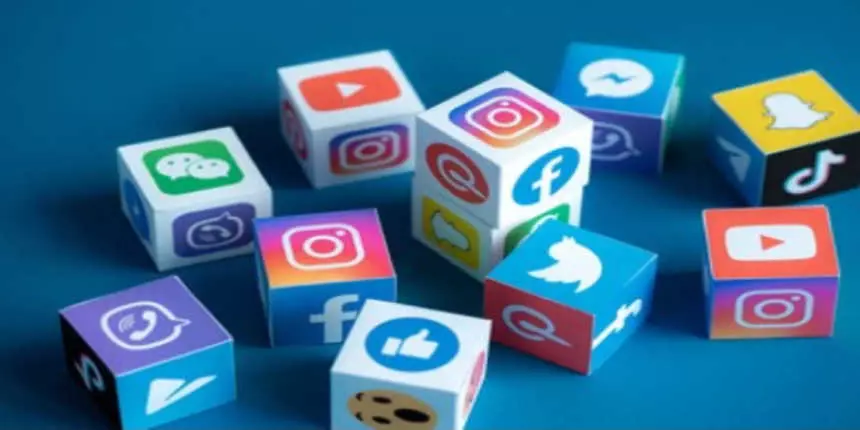
The media has an impact on the reputation of a political party, organisation, or individual. Media keeps people informed about current happenings in politics, culture, art, academia, communication, and commerce. Different forms of media help modern civilization in remaining in touch with the world in the shortest amount of time.
The media is all around us; we are immersed in it even when we are not aware of it. It is seen in newspapers, television, and technological gadgets such as cell phones. We perceive it as a tool for speeding time or distancing ourselves from what is going on in other people's lives.
Social media is a tool that has become immensely popular among all ages due to its user-friendly interface. The youth are the most prevalent social media user demographics, which is both remarkable and concerning.
Imagery from the media abounds in today's culture. We know this since we may see posters advertising well-known brands and the latest products almost anywhere we go, such as while driving on the highway. When we are drawn to advertisements, we may begin to imagine or visualise ourselves using them.
The media can tell us about a product, service, or message. Today, media influence is so powerful that it may easily influence public opinion both positively and negatively. We also live in a society that is heavily reliant on the media for entertainment and information. Indeed, pictures in the media have an effect on both people and society, especially women, men, teenagers, and young children.
Simultaneously, media such as television, broadens our perspective by providing us with access to facts from all around the world. Television may also provide us with a wide range of news and current happenings. It can also be a useful learning tool, guiding future generations in the proper direction.
The media has a large influence on our lives. We educate ourselves on a regular basis by staying up with the latest events. The news serves a crucial role in keeping us informed about current affairs and global happenings. For example, because of globalization, you can read about current happenings in the United States of America even if you live in India.
The media is the most significant communication tool. It aids in the delivery or dissemination of news. Although the media is also associated with spreading fake news, it also plays an important role in informing us about reality. We cannot deny that this world is filled with so many social problems that we require the media to spotlight these concerns so that the government or other individuals can take action to resolve these social issues.
Role Of Media
When it comes to the media, it is regarded as the fourth element of democracy. It's the most comprehensive repository of information on the globe. Everyone hope and expects the media to provide us with the most complete and accurate news in any situation. As a result, the media plays an important role in balancing all areas of our society.
It is crucial for teaching and informing global citizens about what is happening around the world. As a result, supplying readers with truthful and authentic news is vital for societal growth. The case of Aayushi Talvaar is a good illustration of how the media works.
Advantages Of Media
Education | The media educates the public. The mob learns about health issues, environmental preservation, and a variety of other relevant topics through television or radio programming.
Keeps Us Informed | People obtain the most recent news in a timely manner. Distance is not a barrier to providing knowledge to people from anywhere on the planet. People receive the daily latest news from media sites, which keep them current on the latest trends and happenings throughout the world.
Knowledge | The media can help you learn more about a variety of topics.
Amusement | It is a great source of entertainment. People are amused by music and television shows.
Disadvantages Of Media
Individualism | People spend far too much time watching or binge-watching stuff on the internet. As a result, their relationships with friends, family, and neighbours may suffer as a result.
Fraud and Cybercrime | The Internet is lurking with imposters, fraudsters, hackers, and other predators with the opportunity to commit criminal acts without the victims' knowledge.
Addiction | For most children and adults, some television shows and internet media can be quite addictive, resulting in a decrease in productivity.
Health Issues | Prolonged television viewing or internet bingeing can cause visual difficulties, and prolonged exposure to loud noises via headphones or earphones can cause hearing impairments.
Malware and Fake Profiles | Anyone can set up an anonymous account and pretend to be someone else. Anyone with access to such profiles might use them for malevolent purposes, such as spreading misinformation, which can harm the image of any targeted people or company.
Applications for Admissions are open.

Aakash iACST Scholarship Test 2024
Get up to 90% scholarship on NEET, JEE & Foundation courses

ALLEN Digital Scholarship Admission Test (ADSAT)
Register FREE for ALLEN Digital Scholarship Admission Test (ADSAT)

JEE Main Important Physics formulas
As per latest 2024 syllabus. Physics formulas, equations, & laws of class 11 & 12th chapters

PW JEE Coaching
Enrol in PW Vidyapeeth center for JEE coaching

JEE Main Important Chemistry formulas
As per latest 2024 syllabus. Chemistry formulas, equations, & laws of class 11 & 12th chapters

ALLEN JEE Exam Prep
Start your JEE preparation with ALLEN
Download Careers360 App's
Regular exam updates, QnA, Predictors, College Applications & E-books now on your Mobile
Certifications
We Appeared in
Numbers, Facts and Trends Shaping Your World
Read our research on:
Full Topic List
Regions & Countries
- Publications
- Our Methods
- Short Reads
- Tools & Resources
Read Our Research On:
More Americans now see the media’s influence growing compared with a year ago
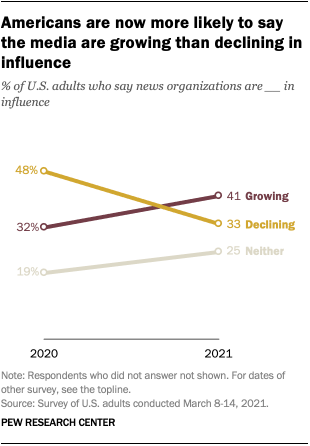
Americans’ views about the influence of the media in the country have shifted dramatically over the course of a year in which there was much discussion about the news media’s role during the election and post-election coverage , the COVID-19 pandemic and protests about racial justice . More Americans now say that news organizations are gaining influence than say their influence is waning, a stark contrast to just one year ago when the reverse was true.
When Americans were asked to evaluate the media’s standing in the nation, about four-in-ten (41%) say news organizations are growing in their influence, somewhat higher than the one-third (33%) who say their influence is declining, according to a Pew Research Center survey conducted March 8-14, 2021. The remaining one-quarter of U.S. adults say they are neither growing nor declining in influence.
To examine Americans’ views about the influence of the news media, Pew Research Center surveyed 12,045 U.S. adults from March 8 to 14, 2021. Everyone who completed the survey is a member of the Center’s American Trends Panel (ATP), an online survey panel that is recruited through national, random sampling of residential addresses. This way nearly all U.S. adults have a chance of selection. The survey is weighted to be representative of the U.S. adult population by gender, race, ethnicity, partisan affiliation, education and other categories. Read more about the ATP’s methodology . See here to read more about the questions used for this analysis and the methodology .
This is the latest report in Pew Research Center’s ongoing investigation of the state of news, information and journalism in the digital age, a research program funded by The Pew Charitable Trusts, with generous support from the John S. and James L. Knight Foundation.
By comparison, Americans in early 2020 were far more likely to say the news media were declining in influence . Nearly half (48%) at that time said this, compared with far fewer (32%) who said news organizations were growing in influence.
The 2021 figures more closely resemble responses from 2011 – the next most recent time this was asked – and before, in that more Americans then said the news media were growing in influence than declining. Views could have shifted in the gap between 2011 and 2020, but if so, they have now shifted back. (It should be noted that prior to 2020, this question was asked on the phone instead of on the web.)
What’s more, this shift in views of the media’s influence in the country occurred among members of both political parties – and in the same direction.
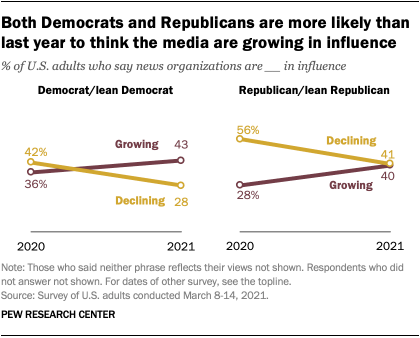
Republicans and Republican-leaning independents are about evenly split in whether they think news organizations are growing (40%) or declining in influence (41%). This is very different from a year ago, when Republicans were twice as likely to say their influence was declining than growing (56% vs. 28%).
And Democrats and Democratic leaners are now much more likely to say news organizations are growing (43%) than declining in influence (28%), while a year ago they were slightly more likely to say influence was declining (42% vs. 36% growing).
Overall, then, Republicans are still more likely than Democrats to say the news media are losing standing in the country, though the two groups are more on par in thinking that the media are increasing in their influence. (Democrats are somewhat more likely than Republicans to say news organizations are neither growing nor declining in influence – 29% vs. 19%.)
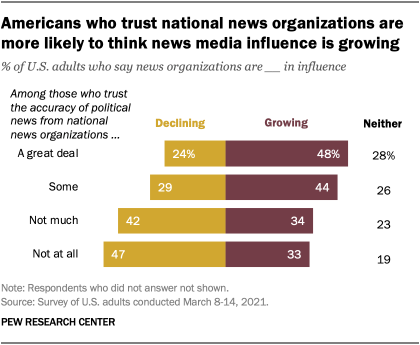
Trust in media closely ties to whether its influence is seen as growing or declining. Those who have greater trust in national news organizations tend to be more likely to see the news media gaining influence, while those with low levels of trust are generally more likely to see it waning.
Americans who say they have a great deal of trust in the accuracy of political news from national news organizations are twice as likely to say the news media are growing than declining in influence (48% vs. 24%, respectively). Conversely, those who have no trust at all are much more likely to think that news organizations are declining (47% vs. 33% who say they are growing).
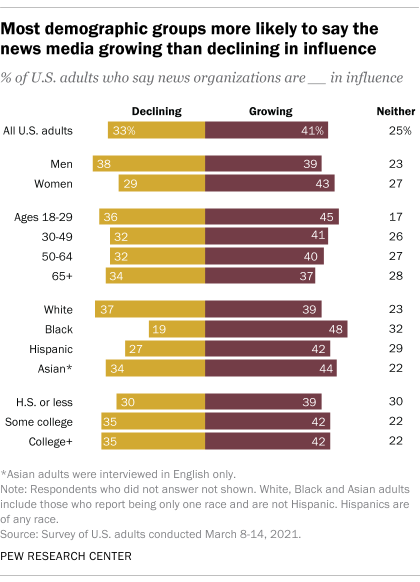
Black Americans are far more likely to think that the news media are growing in influence rather than declining (48% vs. 19%, respectively), as are Hispanic Americans though to a somewhat lesser degree. White Americans, on the other hand, are about evenly split in thinking the news media are growing or declining in influence (39% vs. 37%, respectively). And while men are about evenly split (39% growing vs. 38% declining), women are more likely to say news organizations are growing (43%) than declining (29%) in influence.
Note: Here are the questions used for this analysis, along with responses, and its methodology .
- Media Attitudes
- Politics & Media

Jeffrey Gottfried is an associate director focusing on internet and technology research at Pew Research Center .

Naomi Forman-Katz is a research analyst focusing on news and information research at Pew Research Center .
Americans’ Changing Relationship With Local News
Introducing the pew-knight initiative, 8 facts about black americans and the news, u.s. adults under 30 now trust information from social media almost as much as from national news outlets, u.s. journalists differ from the public in their views of ‘bothsidesism’ in journalism, most popular.
1615 L St. NW, Suite 800 Washington, DC 20036 USA (+1) 202-419-4300 | Main (+1) 202-857-8562 | Fax (+1) 202-419-4372 | Media Inquiries
Research Topics
- Email Newsletters
ABOUT PEW RESEARCH CENTER Pew Research Center is a nonpartisan fact tank that informs the public about the issues, attitudes and trends shaping the world. It conducts public opinion polling, demographic research, media content analysis and other empirical social science research. Pew Research Center does not take policy positions. It is a subsidiary of The Pew Charitable Trusts .
© 2024 Pew Research Center
Essay On Mass Media
500 words essay on mass media.
All kinds of different tools which come in use to help in distributing and circulating information and entertainment to the public come under the term of mass media. In other words, everything including radio, newspapers , cable, television and theatre are parts of mass media. These tools include exchanging opinions and public involvement. Through essay on mass media, we will go through it in detail.

Introduction to Mass Media
In today’s world, mass media embraces internet , cell phones, electronic mail, computers, pagers and satellites. All these new additions function as transmitting information from a single source to multiple receivers.
In other words, they are interactive and work on the person to person formula. Thus, it revolves around the masses i.e. the people. It is true that radio, television, press and cinema are in the spotlight when we talk about mass media.
Nonetheless, the role of pamphlets, books, magazines, posters, billboards, and more also have equal importance if not less. Moreover, the reach of these tools extends to a huge amount of masses living all over the country.
Television, cinema, radio and press are comparatively expensive forms of media which private financial institutions or the Government runs. These tools centre on the idea of mass production and mass distribution.
Therefore, newspapers, television and radio cater to the needs of the mass audience and accommodates their taste. As a result, it will not always be refined or sophisticated. In other words, it displays popular culture.
Get the huge list of more than 500 Essay Topics and Ideas
The Function of Mass Media
The main function of mass media is to reach out to the masses and provide them with information. In addition to that, it also operates to analyze and observe our surroundings and provide information in the form of news accordingly.
As a result, the masses get constantly updated about not just their own surroundings but also around the world. This way mass media spreads and interprets information. For instance, weather forecasts equip people and farmers to plan ahead.
Similarly, fishermen get updates about the tidal activities from the news. In addition to this, mass media also strives to keep the fabric of our social heritage intact which showcasing our customs, myths and civilization.
Another major product of mass media is advertising. This way people learn about the goods and services in the market. It also spreads social awareness. For instance, anti-smoking campaign, women empowerment, green earth clean earth and more.
Most importantly, with the numerous mediums available in multiple languages, the masses get entertainment in their own language easily. Millions of people get to access a cheap source of relaxation and pass their time. In fact, it also helps to transport momentarily from our ordinary lives to a dream world. Thus, it remains the undisputed leader in reaching out to the masses.
Conclusion of Essay on Mass Media
All in all, while it is an effective tool, we must also keep a check on its consumption. In other words, it has the power to create and destroy. Nonetheless, it is a medium which can bring about a change in the masses. Thus, everyone must utilize and consume it properly.
FAQ on Essay on Mass Media
Question 1: Why is mass media important?
Answer 1: Mass media is essential as it informs, educates and entertains the public. Moreover, it also influences the way we look at the world. In other words, it helps in organizing public opinion.
Question 2: How does mass media affect our lives?
Answer 2: Mass media affects many aspects of human life, which range from the way we vote to our individual views and beliefs. Most importantly, it also helps in debunking false information.
Customize your course in 30 seconds
Which class are you in.

- Travelling Essay
- Picnic Essay
- Our Country Essay
- My Parents Essay
- Essay on Favourite Personality
- Essay on Memorable Day of My Life
- Essay on Knowledge is Power
- Essay on Gurpurab
- Essay on My Favourite Season
- Essay on Types of Sports
Leave a Reply Cancel reply
Your email address will not be published. Required fields are marked *
Download the App


Essay on The Power of Social Media
Students are often asked to write an essay on The Power of Social Media in their schools and colleges. And if you’re also looking for the same, we have created 100-word, 250-word, and 500-word essays on the topic.
Let’s take a look…
100 Words Essay on The Power of Social Media
Introduction to social media.
Social media is a powerful tool that connects people globally. It’s like a virtual meeting place where you can share ideas and experiences.
The Influence of Social Media
Social media has a significant influence on our lives. It shapes our thoughts, opinions, and even our behaviors.
Benefits of Social Media
Social media offers many benefits. It helps us connect with friends, learn new things, and express ourselves creatively.
Challenges of Social Media
Despite its benefits, social media can also pose challenges. It can lead to cyberbullying and misinformation.
In conclusion, social media has both positive and negative aspects. It’s important to use it responsibly.
250 Words Essay on The Power of Social Media
The ubiquity of social media.
Social media has become a pervasive force in contemporary society, transforming the way we communicate, interact, and perceive the world. It’s not just a tool for connecting with friends and family; it’s a platform that influences public opinion, shapes political landscapes, and even drives consumer behavior.
Amplifying Voices
One of the most profound impacts of social media is its ability to amplify voices that were once marginalized. It has democratized information, enabling anyone with internet access to share their views, stories, and experiences. This has led to a surge in social movements, from Black Lives Matter to #MeToo, which have leveraged social media to raise awareness and effect change.
Shaping Public Opinion
However, the power of social media is a double-edged sword. While it can be a force for good, it can also be a platform for misinformation and manipulation. The Cambridge Analytica scandal highlighted how personal data can be exploited to sway public opinion, raising ethical questions about the role of social media in our democratic processes.
The Future of Social Media
The future of social media lies in its ability to adapt and evolve. As we become more aware of its potential pitfalls, there is a growing demand for more transparency, accountability, and ethical standards. The power of social media is undeniable, but it is up to us to harness it responsibly.
In conclusion, social media has reshaped our world in myriad ways. It has the power to amplify voices, shape public opinion, and even influence our democratic processes. As we navigate this digital landscape, it’s essential to use this power responsibly.
500 Words Essay on The Power of Social Media
In the contemporary digital age, social media platforms have become an integral part of our lives. They are not merely tools for communication and entertainment, but have evolved into platforms for education, business, and social change. Social media’s power lies in its ability to connect, inform, and influence, transcending geographical boundaries and cultural divides.
The Power to Connect and Inform
Social media platforms like Facebook, Twitter, Instagram, and LinkedIn have revolutionized communication. They enable individuals to connect with others across the globe in real time, fostering a sense of global community. Information dissemination has also been greatly enhanced by social media. News, whether it’s about local events or international crises, can reach millions within seconds. This immediacy of information exchange has reshaped our perception of the world, making it more interconnected and accessible.
The Power to Influence
The influence of social media is another facet of its power. It has become a significant platform for marketing and advertising. Businesses, both large and small, leverage social media to reach their target audience, promote products, and build brand identity. Furthermore, influencers use these platforms to sway public opinion, whether it’s about fashion, politics, or social issues.
Driving Social Change
Perhaps the most profound illustration of social media’s power is its role in driving social change. It has provided a platform for marginalized voices, enabling them to share their stories and rally support. Movements like #BlackLivesMatter and #MeToo gained momentum through social media, leading to global awareness and significant societal change.
The Double-Edged Sword
However, the power of social media is a double-edged sword. While it can promote positive change, it can also spread misinformation and fuel polarization. The Cambridge Analytica scandal highlighted how data from social media can be used to manipulate public opinion. Similarly, the proliferation of fake news on these platforms has become a major concern.
Conclusion: Harnessing the Power Responsibly
In conclusion, social media is a powerful tool with the potential to connect, inform, influence, and instigate change. However, its power can be both constructive and destructive. As users and beneficiaries of social media, it is incumbent upon us to use these platforms responsibly. The power of social media, when harnessed correctly, can be a catalyst for positive change, fostering global understanding and cooperation.
That’s it! I hope the essay helped you.
If you’re looking for more, here are essays on other interesting topics:
- Essay on Positive Effects of Social Media
- Essay on Social Media and Students
- Essay on Role of Social Media
Apart from these, you can look at all the essays by clicking here .
Happy studying!
Leave a Reply Cancel reply
Your email address will not be published. Required fields are marked *
Save my name, email, and website in this browser for the next time I comment.

- Essay On Mass Media
Mass Media Essay
500+ words mass media essay.
The current age is termed the era of information. So, mass media is used to spread and share information. Mass media has become more potent after the advancement of digital technology. It is the most influential source of various ideas, news, and opinions. It also provides information about the happenings around the world.
Mass media means tools used in distributing and circulating information and entertainment to the masses. It includes television, the internet, radio, newspaper, and theatre. These modes of communication provide a platform to exchange opinions and public involvement.
In this essay on mass media, we will discuss the function of mass media and its importance to the world.
Introduction to Mass Media
In our society, mass media plays a crucial role. Mass media is a medium that brings news, entertainment, and cultural and educational programs to millions of homes. Mass media is classified into two categories: Print media and electronic media. Print media includes journals, newspapers, magazines, etc., and electronic media consists of the internet, TV, movies, etc. Some primary resources through which we get information are reading newspapers and magazines, listening to the radio and watching TV.
Radio, television, cinema and press are expensive forms of media run by private or government-run institutions. The main focus of these institutions is the idea of mass production and mass distribution. Among all the mass media tools, TV is the most popular. We have many channels to watch various shows, films, sports, plays, and educational and cultural programs.
Compared to other mass media tools, the information published in the newspapers is different. It publishes information about the latest happenings nationally and internationally. Some magazines and newspapers cover news, events, and reports on sports, cultural life, education, fashion, and entertainment for youth.
By watching TV or listening to the radio, you can upgrade your history, literature, and cultural knowledge and even learn foreign languages. Mass media includes cell phones, the internet, computers, pagers, emails, and satellites in today’s world. Information can be sent from a single source to multiple receivers through these mediums.
Other mass media tools such as books, magazines, pamphlets, books, billboards, etc., also have equal significance as the reach of these mediums extends to a massive number of masses.
The Function of Mass Media
Information.
One of the primary functions of mass media is the dissemination of information. Mass media circulates information and opinions about various events and situations to mass audiences. The information we get through multiple mediums of mass media is subjective, objective, secondary and primary. As an audience, we get informative news about the happenings worldwide via mass media. Media broadcast information on TV, radio, newspapers or magazines. Moreover, advertisements are also mainly for information purposes.
Entertainment
The most apparent function of mass media is entertainment. It is a performance that pleases people by making leisure time more enjoyable. Magazines and newspapers, television, radio, and other online mediums offer serials, stories, films, and comics to entertain audiences. Other instances include news, sports, columns, art and fashion. Infotainment means the fusion of entertainment and information, and edutainment is education and fun programs.
Socialisation
Socialisation means the transmission of culture and media works as reflectors of society. Socialisation is a process by which people behave in acceptable ways in their culture or society. Through this process, we learn how to become members of our community or human society in a greater sense. People who read a newspaper or watch television know how people react to matters and what norms and values they perceive on particular events, issues, or situations.
The link between the government and the people
The government utilises the power of mass media to explain, inform, and support its policies and programs.
Conclusion of Essay on Mass Media
All in all, while it is an effective tool, we must also check its consumption. In other words, it has the power to create and destroy. Nonetheless, it is a medium that can bring about a change in the masses. Thus, everyone must utilise and consume it properly.
From our BYJU’S website, students can also access CBSE Essays related to different topics. It will help students to get good marks in their exams.
Frequently asked Questions on Mass media Essay
Why is mass media important.
Mass media provides information, education and also entertainment. Thus it is considered important and a quick media to share any type of content.
What are two main categories of mass media?
Print media and electronic media are the two main mass media categories. All the other types of media mostly come under these two broad sections.
What types of information can one obtain from such mass media?
History, literature, kowledge on cultural and foreign language, etc are some of the examples that can be obtained from mass media.
Leave a Comment Cancel reply
Your Mobile number and Email id will not be published. Required fields are marked *
Request OTP on Voice Call
Post My Comment
Register with BYJU'S & Download Free PDFs
Register with byju's & watch live videos.
Society Analysis

Conservative Groups Respond to Getting Left Off SPLC ‘Hate Map’
Politics Commentary
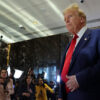
Beware When Leftist Journalists Use Founders to Attack Trump
Politics News
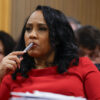
Appeals Court Pauses Trump’s Georgia Case Until Decision on Fani Willis
Society Commentary

Leftist Media Gatekeeper Power Is Crumbling
Security Commentary
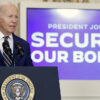
Why Biden’s Executive Order Won’t Solve the Illegal Immigration Crisis
Security News
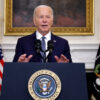
Biden’s Edict on Southern Border Is an Election Year Stunt, Republicans Say
News
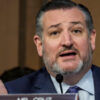
‘INSULTING’: Senate Republicans Say Biden Won’t Enforce Border Security Order
Security Commentary

The Dark Side of Big Labor: How SEIU Is Exploiting Border Crisis
Health Care Commentary

Why Fauci’s House Testimony Created Fireworks
International Commentary

35 Years After Tiananmen Square, Beijing Still Tries to Erase Memories
Law News

Jury Selected in Hunter Biden’s Drug-Related Gun Trial
Education Commentary

America Was Built on Cooperation, Not Oppression
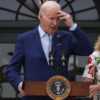
Amid New Cognitive Questions, Edits to Biden Transcript Color Lawsuit Over Recording
Law News
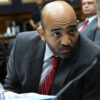
‘Total Vindication’ for FBI Whistleblower Who Questioned Wray’s Narrative on Jan. 6
Energy News

Dozens of Energy Groups Ask Congress to Overturn Biden’s Green Power Plant Rules
Politics Analysis

Battle for Senate GOP Leader: Rick Scott Aims to Shake Up Status Quo
Politics Commentary
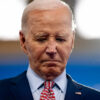
The Problem With ‘Our Democracy’

Casinos, Strip Clubs, Fast Food: Addresses Listed for Battleground State Voters Prompt Concerns
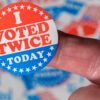
The Many Reasons You Shouldn’t Be Afraid to Question Election Results

EXCLUSIVE: Sen. Rubio’s Killer Video Blow to the Left’s Depressive Values
Politics Analysis
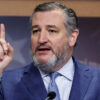
EXCLUSIVE: Ted Cruz Sets the Record Straight After SPLC Claims He Spread ‘Antisemitic Trope’
Society Analysis

EXCLUSIVE: Federal Farm Credit Agency Plows Ahead With DEI, ‘Queer’ Farming

EXCLUSIVE: DOJ’s Kristen Clarke Testified She Was Never Arrested. Court Records and Text Messages Indicate She Was.
International News

Iran’s Supreme Leader Endorses US Campus Protests as Part of ‘Resistance Front’
Security Commentary

5 Americans Remain Hostages in Gaza. Does Biden Have a Plan to Bring Them Home?
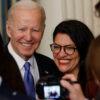
Rep. Tlaib Addresses Conference Endorsed by Founding Member of Palestinian Terrorist Group
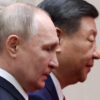
Loose Talk About the End of Everything
Law Society Analysis

‘You Need to Make Your Products Safe for Kids,’ Tennessee AG Demands of Social Media Giants

Looking Back, Moving Forward: What Future Holds for The Daily Signal
Law Analysis

Yes, Trump Could Be Elected President From Prison
Security Analysis

Illegal Immigration Has Created ‘High Threat Level’ for Terrorist Attack in US, Expert Says
What's happening at The Washington Post is a microcosm of a larger and more significant phenomenon: The power of media gatekeepers is waning. Pictured: A pedestrian passes The Washington Post Building on Wednesday in Washington, D.C. (Photo: Andrew Harnik/Getty Images)
The Washington Post is melting down and the reason might surprise you.
Actually, no it won’t. Just kidding. The Washington Post is melting down because it leaned hard into the Year Zero cultural revolution that’s completely transformed almost every elite institution in the past several years and the newspaper is now bleeding money.
People are no longer buying what they’re selling.
What’s happening at the Post is a microcosm of a much larger and more significant phenomenon. More on that later.
First, let’s review what’s happened at the Post this week.
Publisher and CEO William Lewis announced Sunday that the newspaper would remove Executive Editor Sally Buzbee , hired in 2021 from The Associated Press.
Buzbee is being replaced by former Wall Street Journal Editor-in-Chief Matt Murray, who will remain in an interim capacity through the 2024 election cycle, according to Fox News .
Buzbee decided during her tenure that The Washington Post wasn’t nearly left wing enough and chose to limit the publication’s appeal to the same demographic as NPR’s .
The result was that the newspaper found a way to lose $77 million last year amid collapsing readership numbers.
NPR gets taxpayer dollars ( rather shamefully, in my mind ); the Post doesn’t. So, the higher-ups looked at the Post’s dwindling readership and catastrophic financial losses and decided enough was enough.
“We are going to turn this thing around, but let’s not sugarcoat it. It needs turning around,” the Post quoted Lewis as saying. “We are losing large amounts of money. Your audience has halved in recent years. People are not reading your stuff. Right. I can’t sugarcoat it anymore.”
The people who run The Washington Post seem to understand that there is a crisis—losing lots and lots of money being the prime indicator. The question is, do they understand what the real source of that problem is?
The response to Buzbee’s removal dropped hints about the deeper, underlying issue with the Post and other institutions that decided to replicate the culture and power structure of American higher education.
The Post’s issues aren’t just the result of changing social media algorithms or mundane difficulties finding revenue streams .
Instead, they come from the fact that the newspaper chose to prioritize DEI (diversity, equity, and inclusion) over everything else and to empower a militant clique of employees who seem to think that promoting their agenda is a privilege that doesn’t have to adjust to reality.
According to Vanity Fair , after the announcement of the Buzbee ouster one reporter complained that “we now have four white men running three newsrooms.”
The Post will reportedly be subdivided into three newsrooms. One for news, one for opinion, and one for “service and social media journalism,” which I imagine will be the loony bin.
Vanity Fair reported that the Post had a meeting Monday about the shakeup and it went about how you would expect, with employees obsessing over diversity initiatives rather than the journalistic merit of the new editors.
The New York Times had more , worth quoting at length:
During the meeting on Monday, the executives were grilled by reporters at the Post on the lack of diversity in the hires replacing Ms. Buzbee — Mr. Murray, Mr. [Robert] Winnett and Mr. [David] Shipley are white men. According to a recording obtained by The New York Times, one of The Washington Post’s star political reporters, Ashley Parker, asked how the newspaper had arrived at its decision, adding that one skeptical interpretation might be that Mr. Lewis was simply hiring his associates to help run the Post. … “When you were here before, you talked very movingly about how you care about diversity—and people talk about diversity—but then when push comes to shove, they say, ‘Well, I looked around and I couldn’t find anyone,’” Ms. Parker said. In response, Mr. Murray said that diversity would be a “constant commitment” at the Post, adding that he had “the most diverse masthead that the Journal had ever had” during his years as the top editor at The Wall Street Journal.
It’s clear that the DEI today, tomorrow, and forever folks aren’t going to let go, nor will they accept a direction that doesn’t entirely align with their narrow political ideology.
New statement from The Washington Post Guild, expressing concern over Ms. Buzbee's abrupt exit: pic.twitter.com/R9LpokVeIy — Ben Mullin (@BenMullin) June 3, 2024
The people who foisted left-wing dogma into every corner of The Washington Post’s newsroom aren’t used to not getting their way.
The question is: Will the new management be able to make a genuine pivot? It’s doubtful.
It appears that those in charge of The Washington Post—whether Buzbee or the new bosses—are unwilling to fundamentally challenge the central tenets of DEI. At no point are they willing or able to say, “My commitment is to running the best, most effective newsroom regardless of the race, gender, or background of our reporters and editors.”
Instead, we get a quasi-religious kowtowing to the “constant commitment” to diversity.
Maybe that will change in the coming days, but the early returns aren’t great.
As independent writer Wesley Yang noted in a post on X, several other massive media companies have been given this choice in the past: Go woke or go broke. They chose to go broke.
It is a major inflection point a decade into the Great Awokening in media. Vice and Buzzfeed went bankrupt rather than attempt what WaPo's new editor is attempting because the cost of pushing back internally was always perceived as greater to them as individuals than going along… pic.twitter.com/VZeceLEsy3 — Wesley Yang (@wesyang) June 4, 2024
This may seem surprising, but from an individual perspective, this has often been the “right” decision.
It’s far easier to jump ship from one failing newspaper or corporation and hop on to another as long as one maintains commitment to the overarching left-wing faith. That’s how the game has been played.
Rebuking or even wavering in commitment to DEI has been a one-way ticket to never working in an elite, “mainstream” institution ever again. It’s better to fail or demonstrate outright incompetence than to question orthodoxy and risk excommunication.
Welcome to life in the USSR.
This is in many ways the heart of the problem, not just for The Washington Post but for our country and even Western civilization more broadly.
In the interlocking world of elite institutions, where even the gap between what is governmental and what is private has become blurry, ideological gatekeepers determine who is promoted and who is denied employment, who is worthy of praise or destruction.
The Washington Post has acted as one of the more prominent gatekeepers.
But it isn’t 2020 anymore.
Although most elite institutions remain as compromised as ever, the “racial reckoning” and DEI revolution have created a serious and determined “populist” backlash.
Huge numbers of Americans, even ones who have generally found themselves on the Left, are tired of the nonsense. They are tired of being fed a constant diet of left-wing agitprop and refuse to live by lies.
The prophets of DEI made huge profits, but now a critical mass of Americans are on to the scam .
This doesn’t mean the revolutionary fever has entirely broken, or that everything will now return to normal. Far from it. We will continue dealing with the profound and terrible consequences of what this ideology has done to our society for a long time to come.
What it does mean is that the power of DEI gatekeepers has waned. The revolution has literally been eating itself, as similar movements have in the past. And now there is a serious counterrevolution— both legal and political—to reduce their poisonous influence on our society.
Christopher Rufo, the conservative activist and commentator who has perhaps done more to produce this turnaround than anyone else, described this moment succinctly.
BLM in shambles. Washington Post losing a fortune. Ibram Kendi down bad. It's not 2020 anymore—and not a moment too soon. — Christopher F. Rufo ?? (@realchrisrufo) June 4, 2024
Related posts:
- The Washington Post’s 2,600-Word Love Letter to a Drag Queen
- Outmatched or Outsourced? Why Parents’ Values Fail to Transmit to Their Children
- Intolerant Left Deserves Penalty Flag for Tackling Catholic NFL Star Butker
3 people hospitalized with serious electrical injuries after hot air balloon passes power lines
A pilot and two other people were seriously injured after the hot air balloon they were riding in came too close to power lines, causing an electrical shock, officials in Indiana said.
The incident occurred Sunday just before 7 p.m. in an unincorporated area east of Lowell, the town's fire department said in a Facebook post .
A video posted on social media appeared to show the hot air balloon flying near power lines, causing a big spark.
"There was evidence on the passenger basket that [an] electrical current passed from the power lines to the basket and injured the three people in the basket," the fire department said in a statement.
The hot air balloon then crashed into a field.
Officials told NBC Chicago that the hot air balloon did not hit the power lines but came close enough to cause an electrical shock.
Two medical helicopters were called to the scene "due to the severe extent of the burn injuries," the Lowell Fire Department said. Two people were transported by air to the hospital. The pilot was taken by ground to the hospital.
The Federal Aviation Administration was called to investigate the incident.
Minyvonne Burke is a senior breaking news reporter for NBC News.

IMAGES
VIDEO
COMMENTS
500 Words Essay on Power of Media Introduction to the Power of Media. Media, in its numerous forms, plays an integral role in modern society. It serves as a mirror of the world, reflecting societal norms, values, and changes. From newspapers to social media platforms, media has the power to shape public opinion, influence decisions, and bring ...
The Power of Media Essay. In general, "media" refers to the tools of mass communication. Media today consists of television, Internet, cinema, newspapers, radio, magazines, direct mail, fax, and the telephone. Viewers can see some form of pictorial representation of messages through certain types of broadcasting and advertising.
Short Essay on Power of Media in 200 Words. Media is the way of mass communication and entertainment. It is the process through which the masses of people are communicated and united under one single piece of information. Media or the several forms of information medium fall under the group of information technology. Advertisement.
Media acts as a primary source of information for individuals, providing news, current affairs, and factual information. Media's power comes from its ability to gather, verify, and disseminate information to a wide audience. Keeping people informed about local, national, and global events is the responsibility of journalists and news ...
The media can be used to drive public opinion, report on current news and advance some social values. The media is at best a complex genre which may be broken down into a large number of sub-genres such as news stories, opinion columns, advertisements, sports and horoscopes to name but a few. As such, the role of the media in today's society ...
A definition of media power. There is an emerging, and healthy, public debate about the definition and implications of media power. From Mexico, where young people have taken to the streets to protest at the partisan coverage of the two main television networks, to the United Kingdom, where the Leveson Inquiry has daily revealed the intimate details of collusive relationships between top ...
Media has a remarkable control in almost every aspect of our lives; in politics, social and cultural or economic welfares. Perhaps the best analysis of the impact that media has played in the society is through first acknowledging its role in information flow and circulation. We will write a custom essay on your topic. 810 writers online.
The mass media is a significant, powerful and pervasive social institution embedded into contemporary society, which is experiencing 'unprecedented levels of media saturation and social change' (Devereux 2007: 2), particularly since the advent of the internet. Footnote 1 The centrality and impact of the mass media in society have long been topics of great intellectual concern.
Conclusion. The media plays a crucial role in shaping public opinion on a wide range of issues, from politics to social and environmental issues. Through agenda setting, selective reporting, framing, opinion leaders, and social media, the media has the power to influence how people think and feel about certain topics.
Media Power in Politics. Once again, Doris Graber brings readers the most thought-provoking and recent scholarship about the actual power of the media in the real world of politics. With approximately 35 essays, half of them new to this edition, the selections reflect the latest changes in American politics, in American media platforms, and in ...
Long Essay on Media 'Media is a great source of information. Some watch media for entertainment, while others for information or educational purposes. ... Apart from sharing information, media has the power to be a catalyst for social change. It serves as a platform for advocacy, shedding light on injustices, and human rights violations, and ...
Dec 28, 2023. Media. The power of media in today's society is undeniable, as it holds immense influence, wields significant responsibility, and has a profound impact on various aspects of our ...
In the case of the Pentagon Papers, the Supreme Court ruled 6-3 that the president's argument—that prior restraint 5 was necessary in order to protect national security—was not enough "to abrogate the fundamental law embodied in the First Amendment," 6 and this is the most important First Amendment case because it addresses the sweeping right of the press and press protections in ...
Key Takeaways. Media fulfills several roles in society, including the following: entertaining and providing an outlet for the imagination, educating and informing, serving as a public forum for the discussion of important issues, and. acting as a watchdog for government, business, and other institutions.
The media has been an integral part of society for centuries. From the early days of print media to the emergence of digital platforms, media has been a powerful tool in shaping public opinion. In today's world, the media is considered a vital source of information and news, with millions of people consuming it on a daily basis.
100 Words Essay On Media. The media has an impact on the reputation of a political party, organisation, or individual. Media keeps people informed about current happenings in politics, culture, art, academia, communication, and commerce. Different forms of media help modern civilization in remaining in touch with the world in the shortest ...
Paragraph Writing Composition / Essay Writing Power of Media: Mass Media and PoliticsThe word 'media' usually refers to newspaper, television, and radio which are used to communicate with the mass of the people. They are the most frequently and effectively used media devices for informing the public as a whole. In today's world of rapid change and much activity, people need to be kept ...
Americans' views about the influence of the media in the country have shifted dramatically over the course of a year in which there was much discussion about the news media's role during the election and post-election coverage, the COVID-19 pandemic and protests about racial justice.More Americans now say that news organizations are gaining influence than say their influence is waning, a ...
Conclusion of Essay on Mass Media. All in all, while it is an effective tool, we must also keep a check on its consumption. In other words, it has the power to create and destroy. Nonetheless, it is a medium which can bring about a change in the masses. Thus, everyone must utilize and consume it properly. FAQ on Essay on Mass Media
The future of social media lies in its ability to adapt and evolve. As we become more aware of its potential pitfalls, there is a growing demand for more transparency, accountability, and ethical standards. The power of social media is undeniable, but it is up to us to harness it responsibly. In conclusion, social media has reshaped our world ...
The relationship between media and politics has become increasingly pervasive in recent years. The proliferation of media content and the use of that content among various publics continually raise the question of whether and how media might influence political attitudes and behaviors (e.g., [1]).Recent scholarship emphasizes the importance of political talk in facilitating democratic values ...
997 Words4 Pages. The Power of the Media is Stronger Than We May Believe. In today's society, social media changes teenagers as a whole influencing them and portraying others' lives anyway they want to see it, and also has a big influence on what they believe or how they deal with certain situations. According to research, over 75% of ...
Media is regarded as the most powerful weapon of 21st century. It is as lethal a weapon as a nuke. It has the capability to convert day into night and night into day, a hero into a villain and a villain into hero. Media has brought revolutions in the world and has transformed the globe into a global village. It has virtually erased the geographical
The Power Of Media Essay. 965 Words4 Pages. In this day and age media can be seen as the most powerful weapon in the world and has transformed the 21st century as a result of technological advances and today people can access information with a simple click of a button. Media in the form of newspapers, radio stations and television just to ...
The government utilises the power of mass media to explain, inform, and support its policies and programs. Conclusion of Essay on Mass Media. All in all, while it is an effective tool, we must also check its consumption. In other words, it has the power to create and destroy. Nonetheless, it is a medium that can bring about a change in the masses.
What's happening at The Washington Post is a microcosm of a larger and more significant phenomenon: The power of media gatekeepers is waning. Pictured: A pedestrian passes The Washington Post ...
AT&T says it has resolved an outage that left some customers in the dark on Tuesday. Earlier, the company said a problem prevented many AT&T customers from completing calls between carriers ...
A nationwide strike in Nigeria brought air travel to a standstill and plunged the country into darkness on Monday as union workers forcibly removed operators at the national grid, the nation's ...
A video posted on social media appeared to show the hot air balloon flying near power lines, causing a big spark. IE 11 is not supported. For an optimal experience visit our site on another browser.
Donald Trump's media allies are demanding retribution in the wake of his conviction.. Following weeks of attacks targeting the historic hush money case against the former president, prominent ...